Travel
California Central Coast Travel Destinations
-
Stop and Smell the Roses in San Jose!
Footfalls echo in the memory, Down the passage which we did not take, Towards the door we never opened, Into the rose-garden~T. S. Eliot.
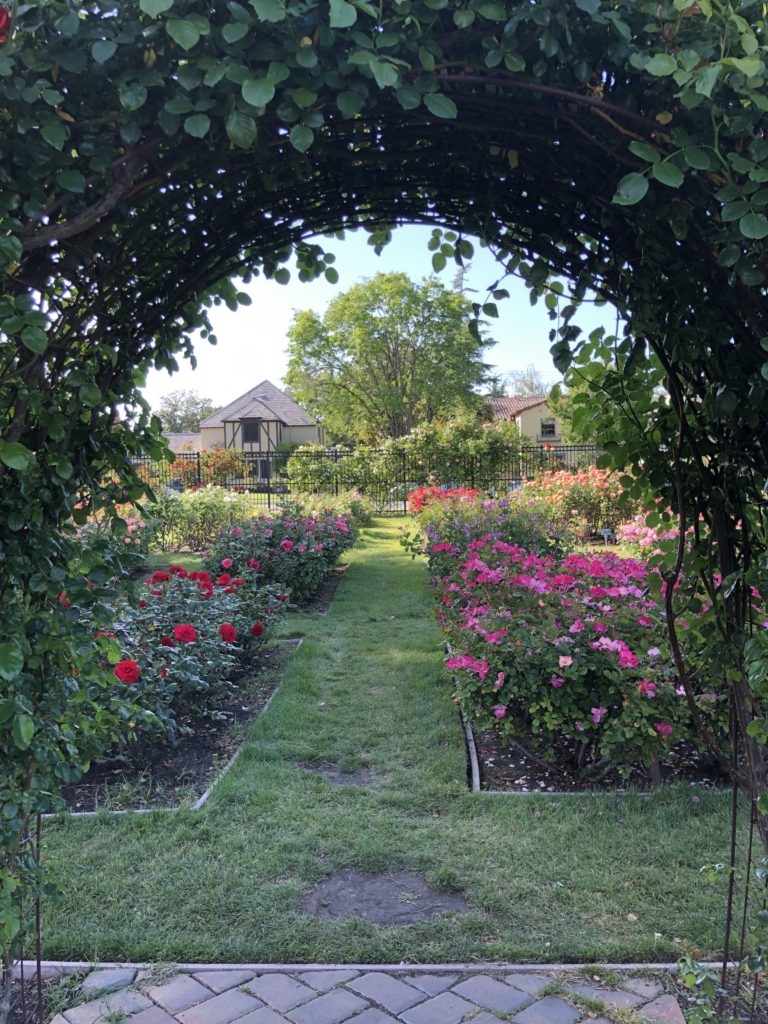 San Jose is home to some pretty amazing places, including their Municipal Rose Garden. Since I absolutely love roses, I had to check it out. I am so glad I did!
San Jose is home to some pretty amazing places, including their Municipal Rose Garden. Since I absolutely love roses, I had to check it out. I am so glad I did!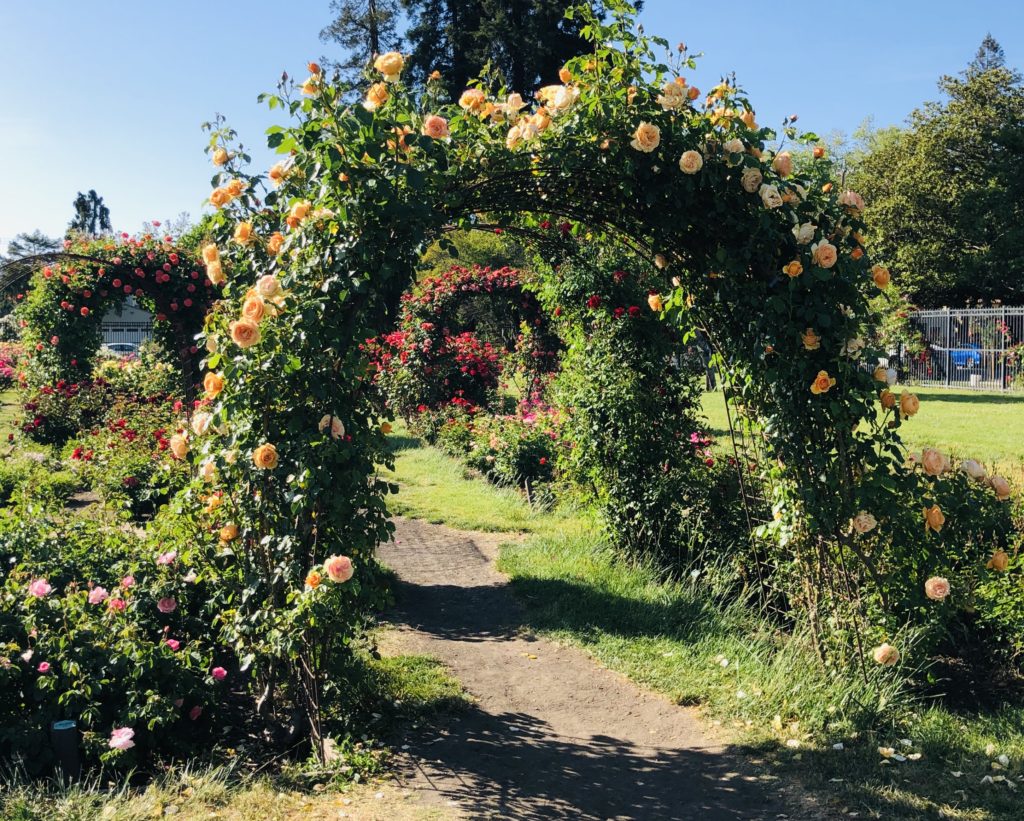 Located at the corner of Naglee & Dana in San Jose, the garden is housed on 5.5 acres. Beginning in April, thousands of colorful roses begin to bloom, creating a vivid and stunning kaleidoscope of color and scent. The garden is home to more than 3500 plantings, and contains over 189 varieties of roses.
Located at the corner of Naglee & Dana in San Jose, the garden is housed on 5.5 acres. Beginning in April, thousands of colorful roses begin to bloom, creating a vivid and stunning kaleidoscope of color and scent. The garden is home to more than 3500 plantings, and contains over 189 varieties of roses.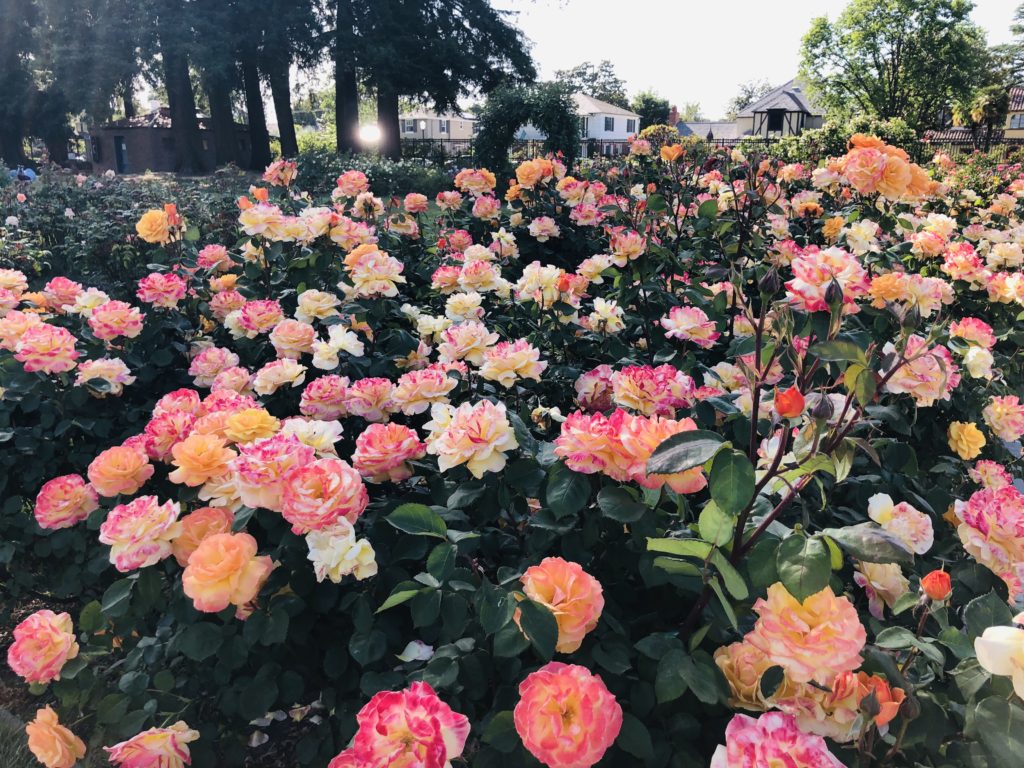
A sense of peacefulness overwhelmed me when I entered this oasis. The hustle and bustle of the city seemed to melt away, like ice in the warmth of the sun. It seemed as though time stood still.
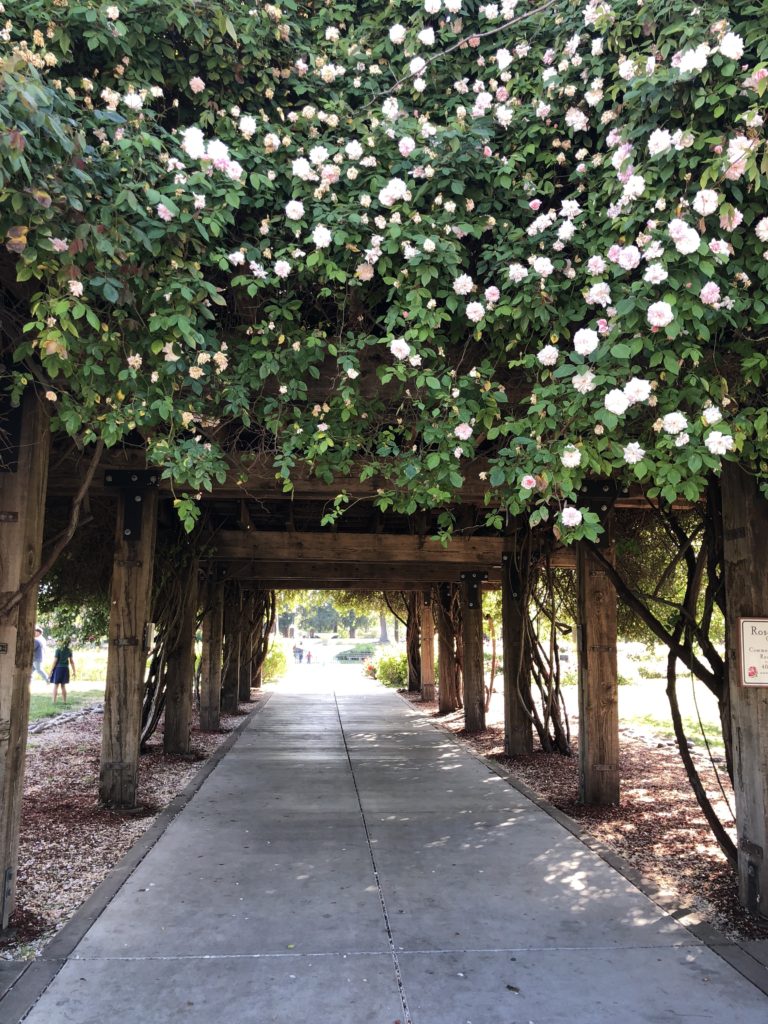 There are many pathways to explore throughout the rose garden. Each path leads to new landscapes of color and delight.
There are many pathways to explore throughout the rose garden. Each path leads to new landscapes of color and delight.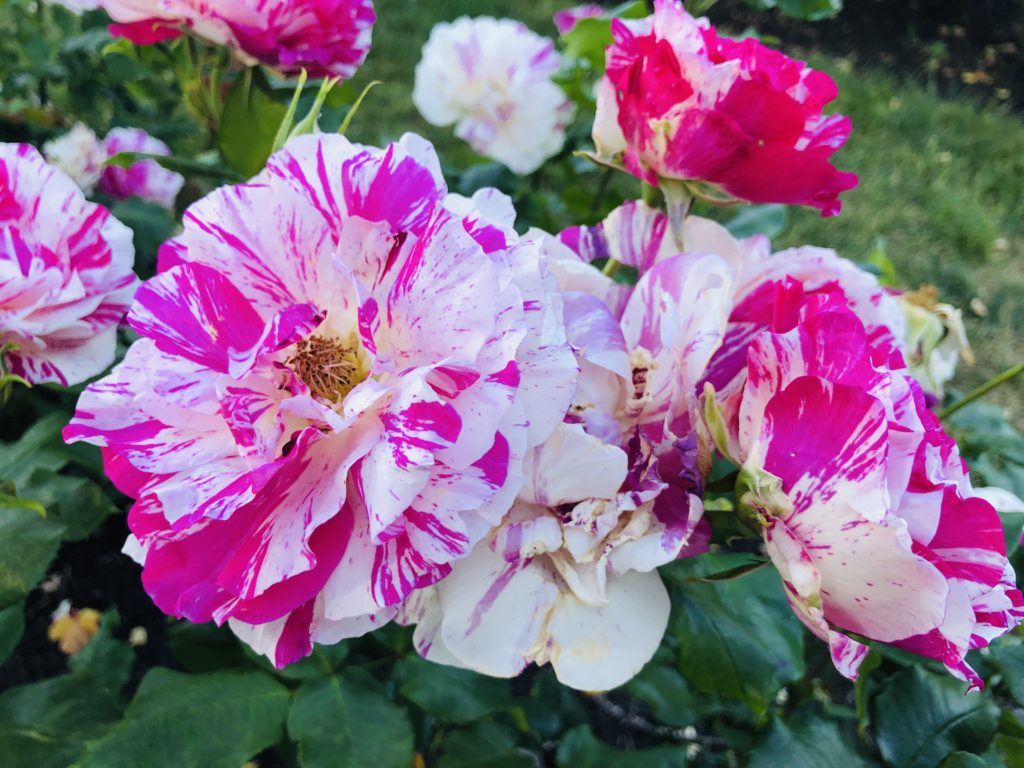
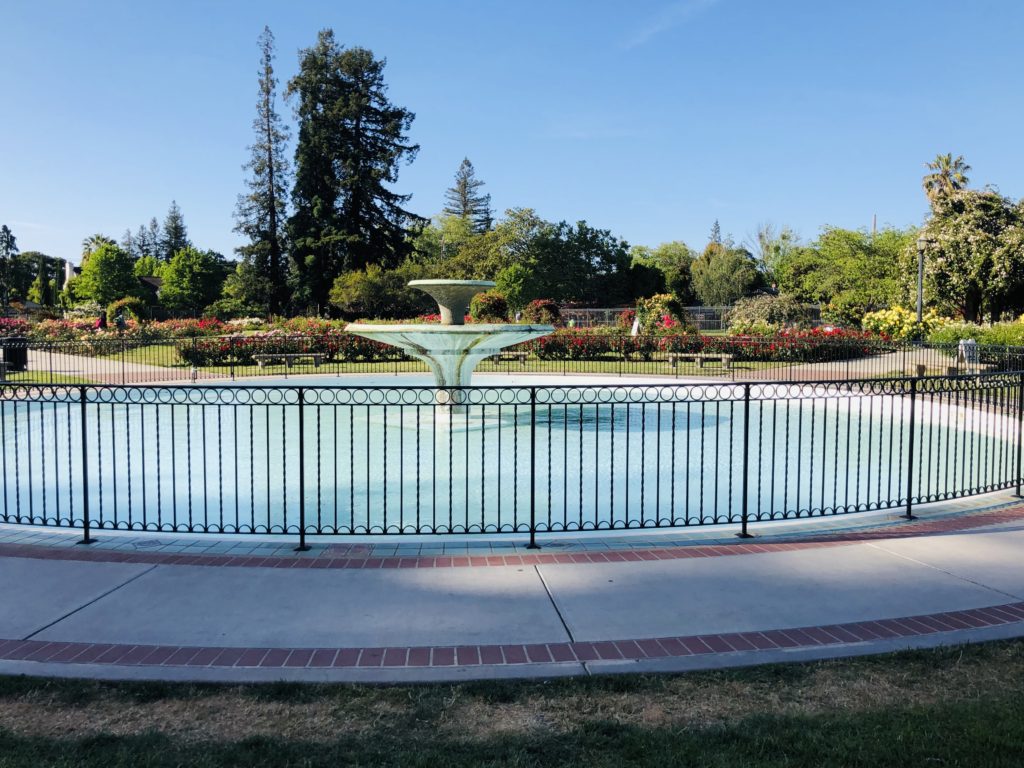
In the center of the garden is a huge pool with a two-tiered fountain, called the “reflection pool”. It is surrounded by benches where you can indeed sit and reflect upon the beauty around you.
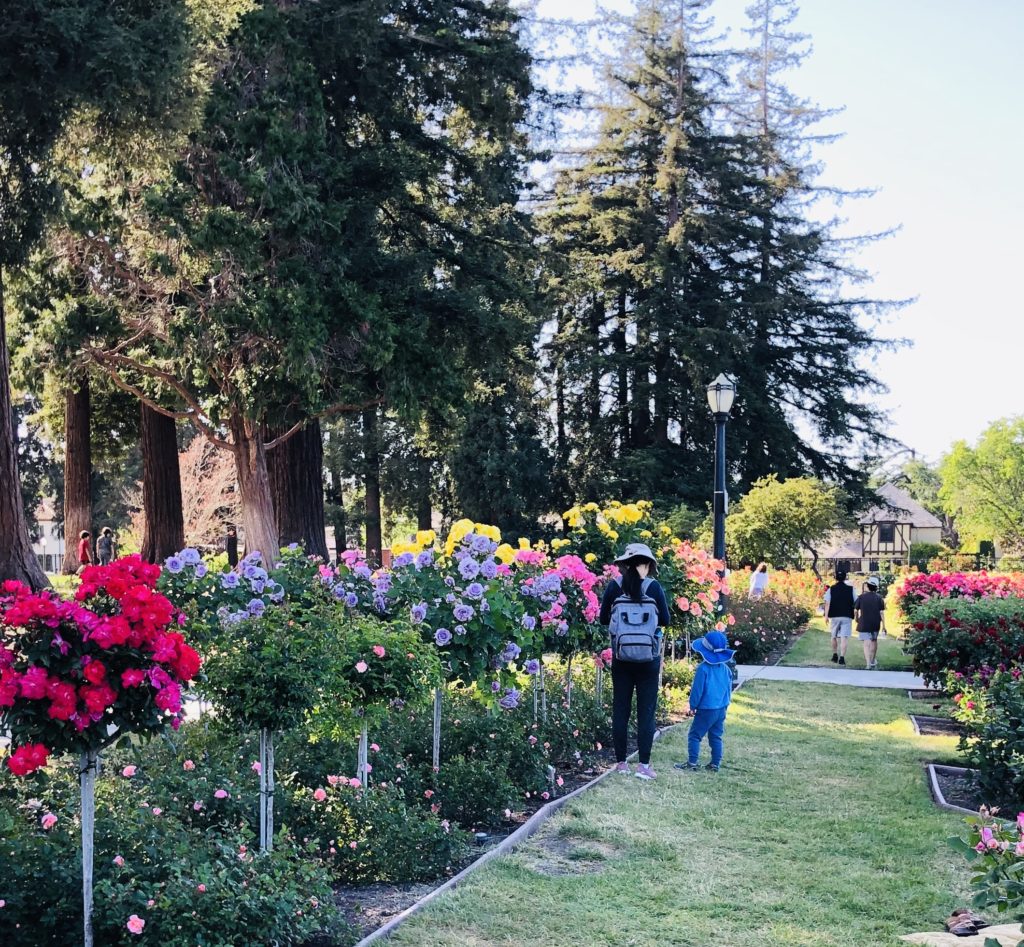 The Municipal Rose Garden was once home to a prune orchard. In 1927, the Santa Clara County Rose Society voted to create a rose garden. Groundbreaking for the new rose garden took place in 1931, in 1937 it was offically dedicated, and today is a historic landmark.
The Municipal Rose Garden was once home to a prune orchard. In 1927, the Santa Clara County Rose Society voted to create a rose garden. Groundbreaking for the new rose garden took place in 1931, in 1937 it was offically dedicated, and today is a historic landmark.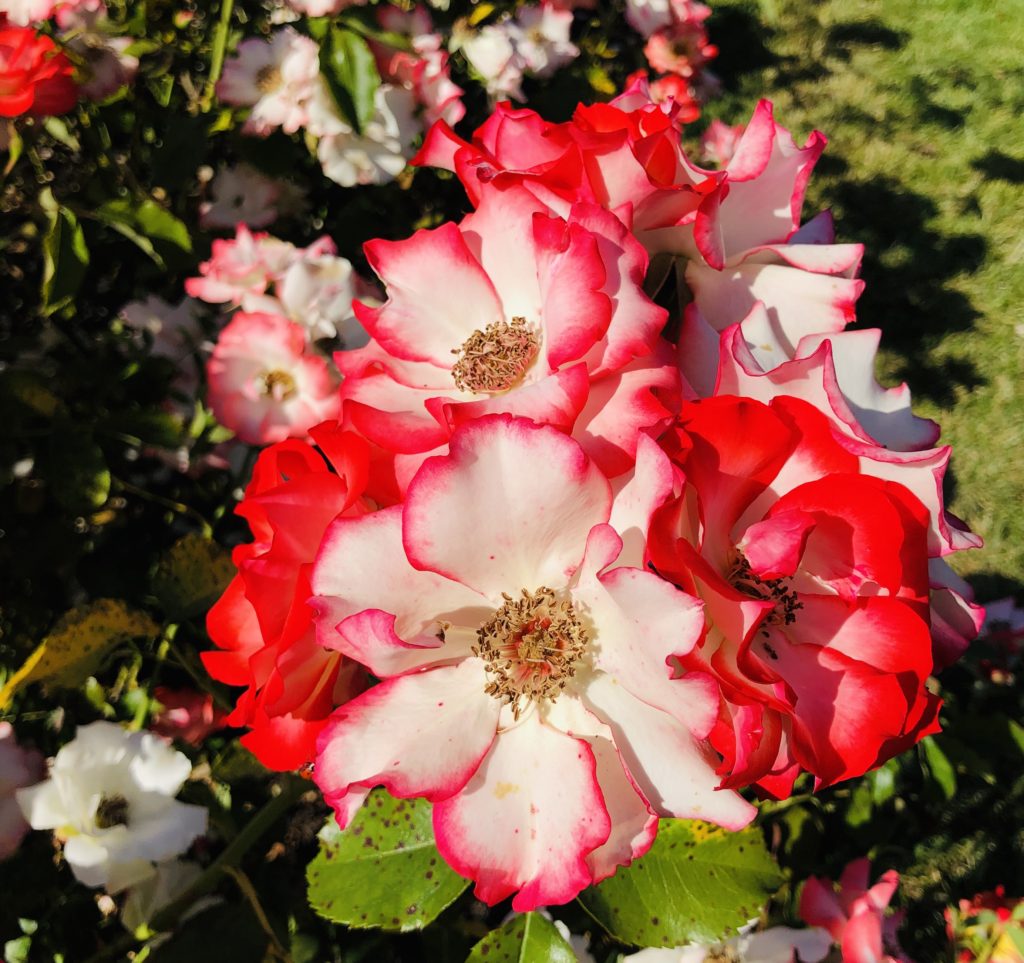
You can enjoy the colorful blooms here from April through November, although the optimal time to visit is in May.
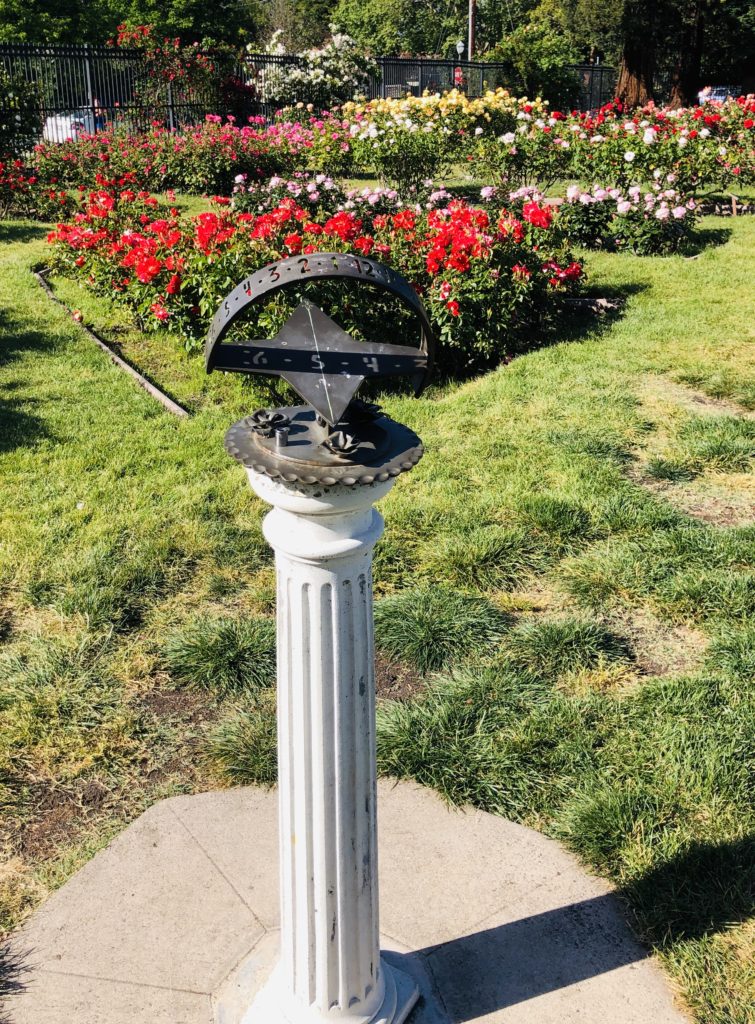
Did you know that the Rose Garden is also home to brand new, unseen before rose varieties? It is one of only a handful of gardens chosen by the All-American Rose Selections to test new roses before they are available to you and me. In 2010, it was awarded “America’s Best Rose Garden”, beating out more than 130 other public rose gardens in the first nationwide competition of its kind. It is no surprise that it has also been voted the best location to get married. Who wouldn’t want their nuptials held in such a romantic and beautiful place?
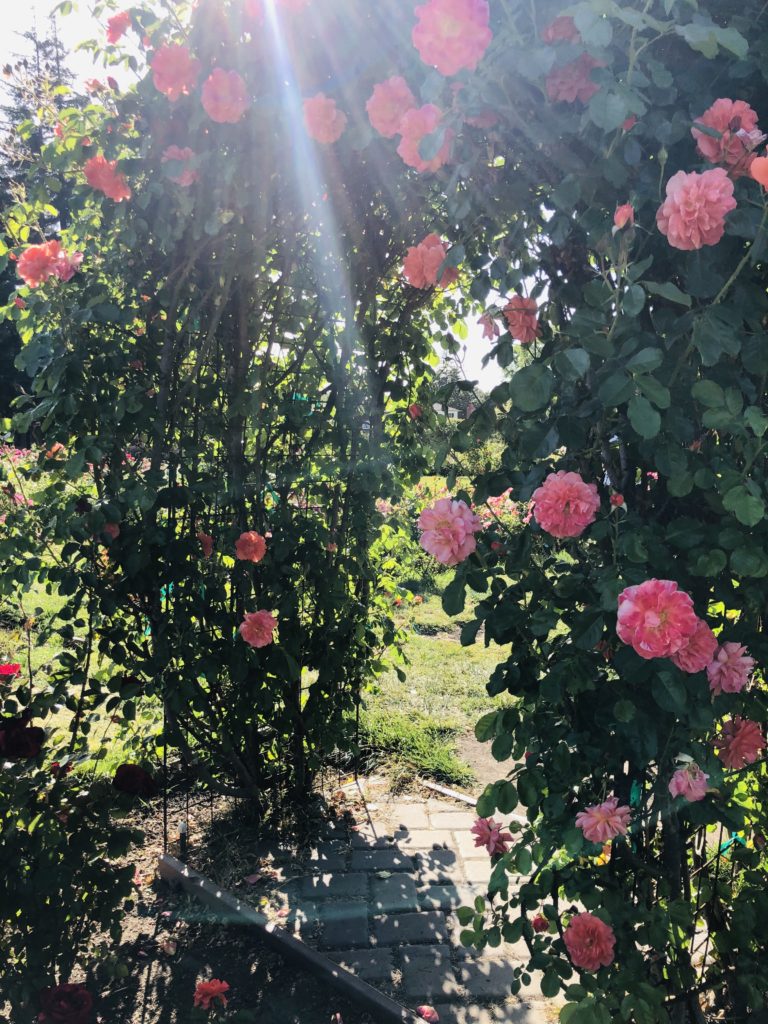
I love the names of some of the roses, including “Betty Boop”, “Angel Face”, “Alchymist”, and “San Jose Sunshine”!
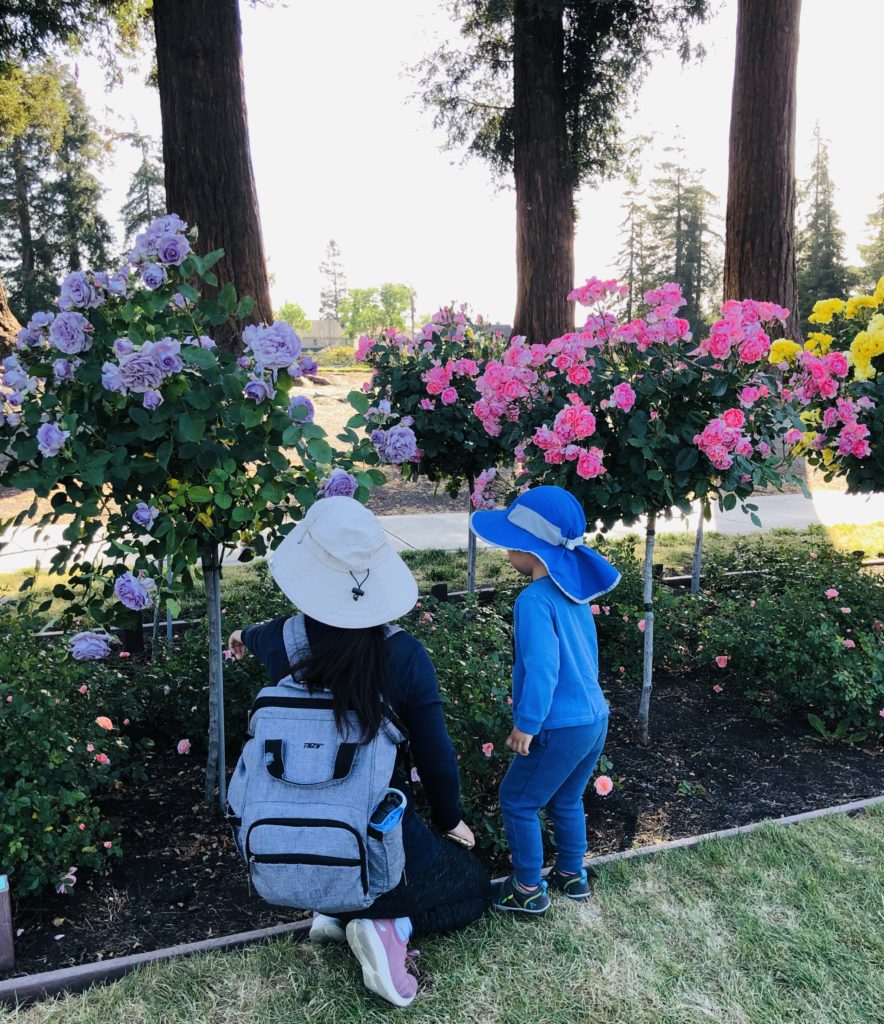
The Garden is filled with lush, grassy areas, and at the edge is shaded by majestic redwood trees. You are sure to find the perfect spot to relax. Bring a picnic lunch or a book and enjoy the serenity!
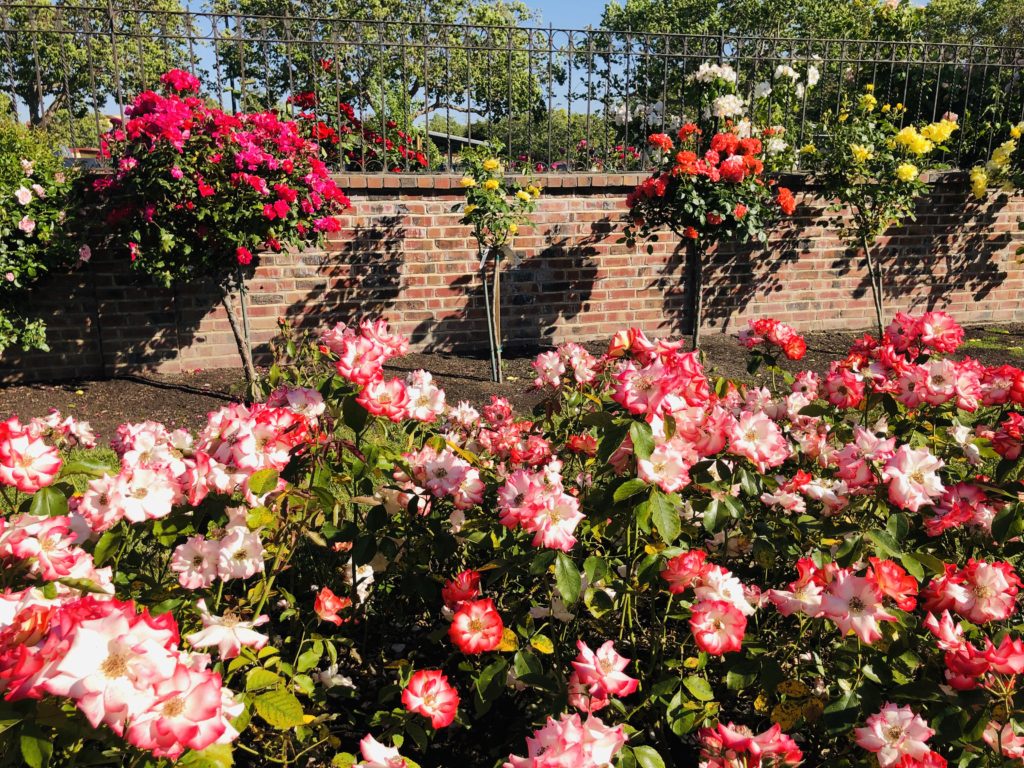 Hours: 8 am to 8 pm daily.
Hours: 8 am to 8 pm daily.Admission: Free.
Location: Dana Avenue & Naglee Avenue, San Jose, California, 95126
Website: Municipal Rose Garden
Thank you for visiting my blog. Wishing you peace, love, happiness & beautiful vistas!
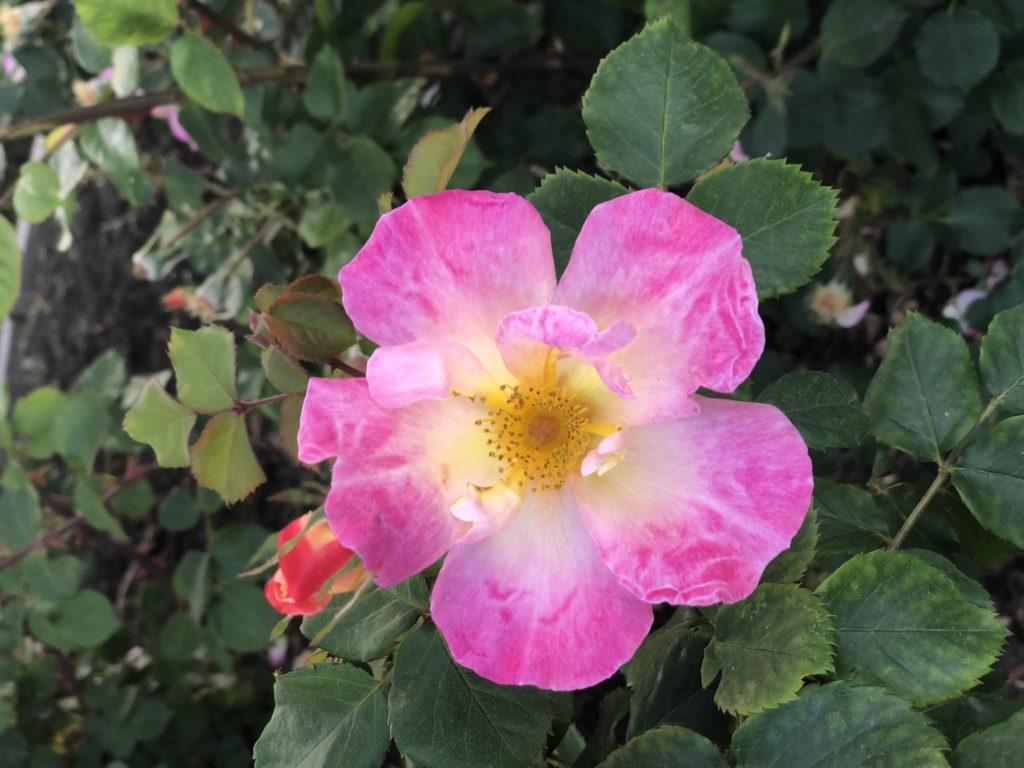
-
The Secret Gardens of Historic Monterey
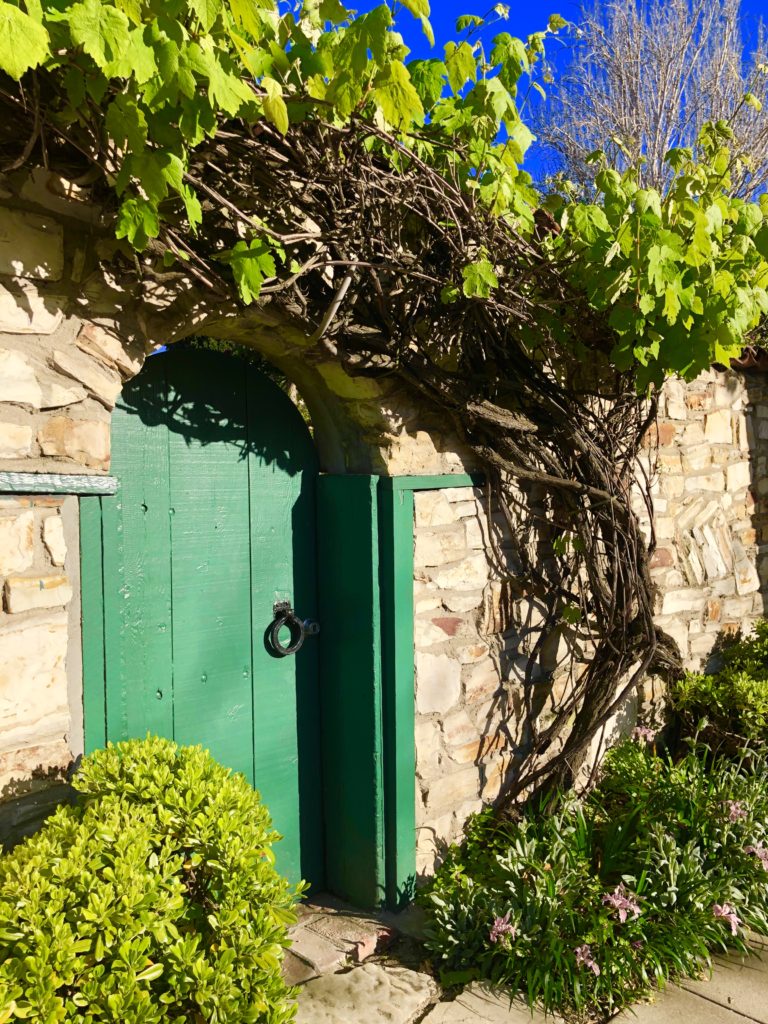
Often hidden behind a wall or a gate, secret gardens denote mystery, privacy, and solitude. Secret gardens offer solace; a place to sit or walk and contemplate. They give you permission to be inspired, to dream, and to be at peace.
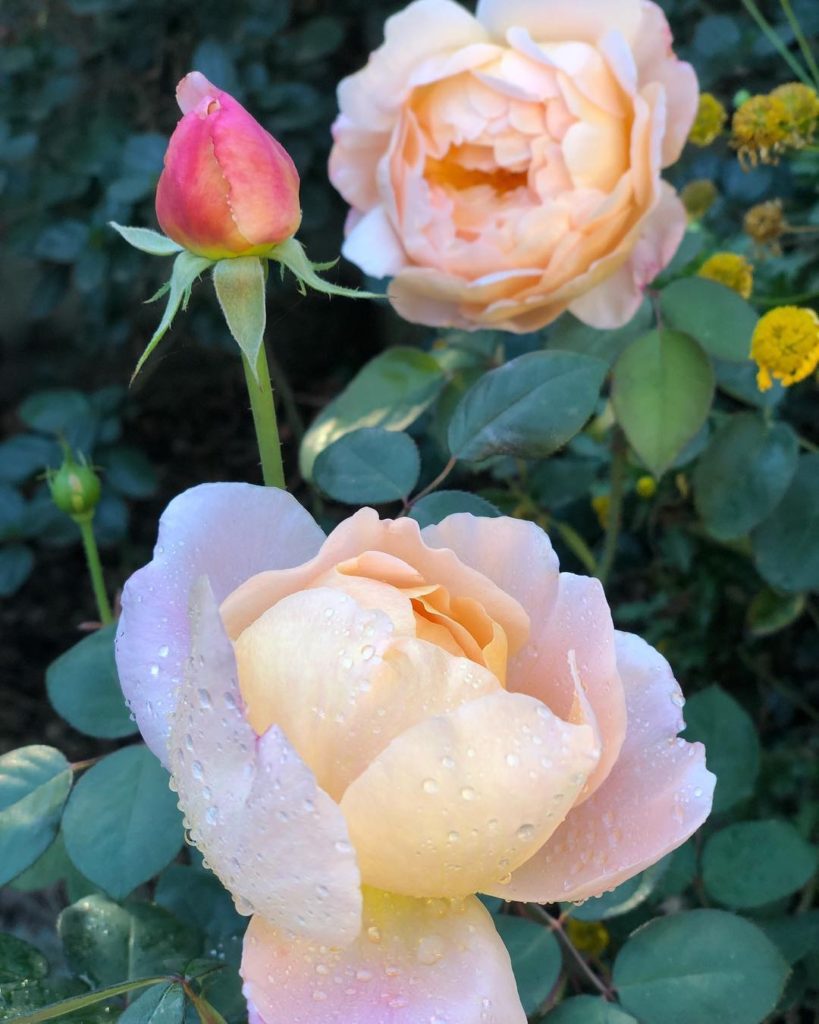
My own garden has its secrets: I love to share them with friends who come to enjoy the peaceful solitude of my farm. The roses that defy being eaten by deer, puzzling my neighbors. The “April in Paris” sweet peas that have self-sown and freely proliferate. The mesmerizing scent of the white, star-flowered jasmine that grows just outside my bedroom, perfuming the night air.
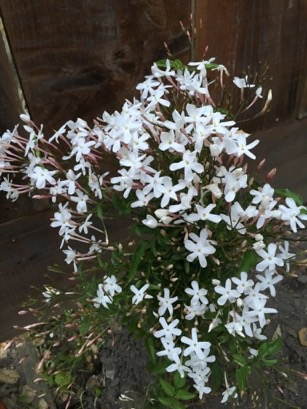
Monterey has some of the most fascinating and delightful secret gardens ever. What makes these gardens so special is that they are located on the grounds of some of the most historic properties in Monterey. The secret gardens here are all completely unique, enticing you with beautiful colors and heavenly scents.
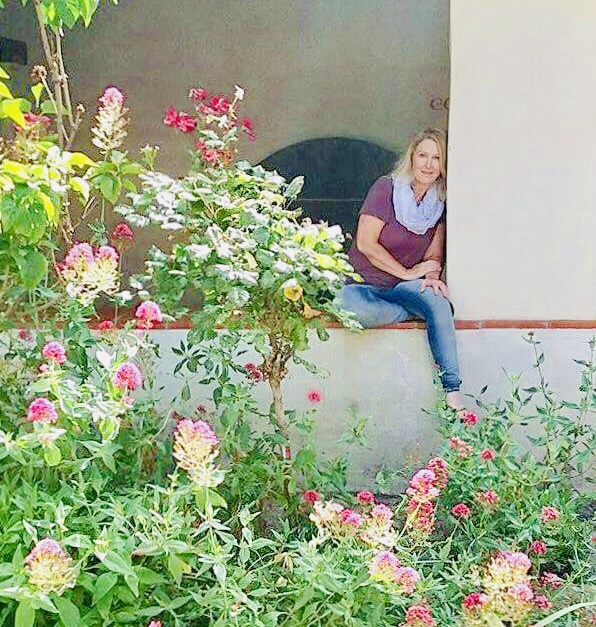
1. The Larkin Garden is located at 510 Calle Principal at the intersection with Jefferson. Thomas Larkin built the two-story mud adobe brick home during Mexican rule of California. An American merchant, he became the only United States Consul to Alta California under Mexican rule.
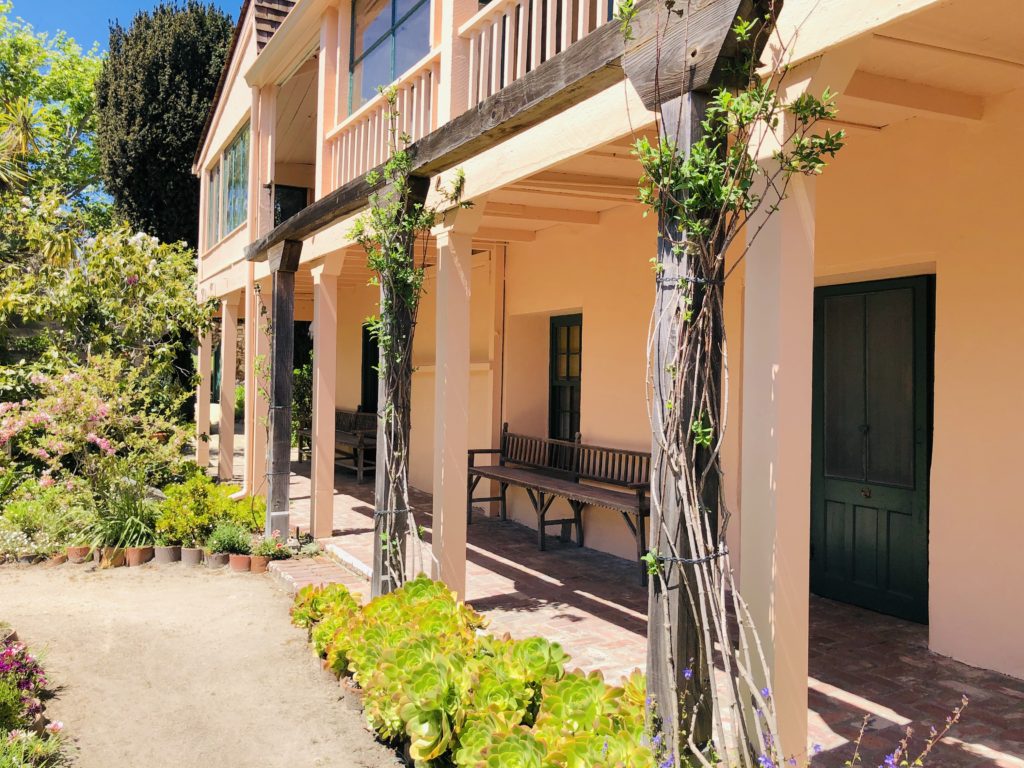
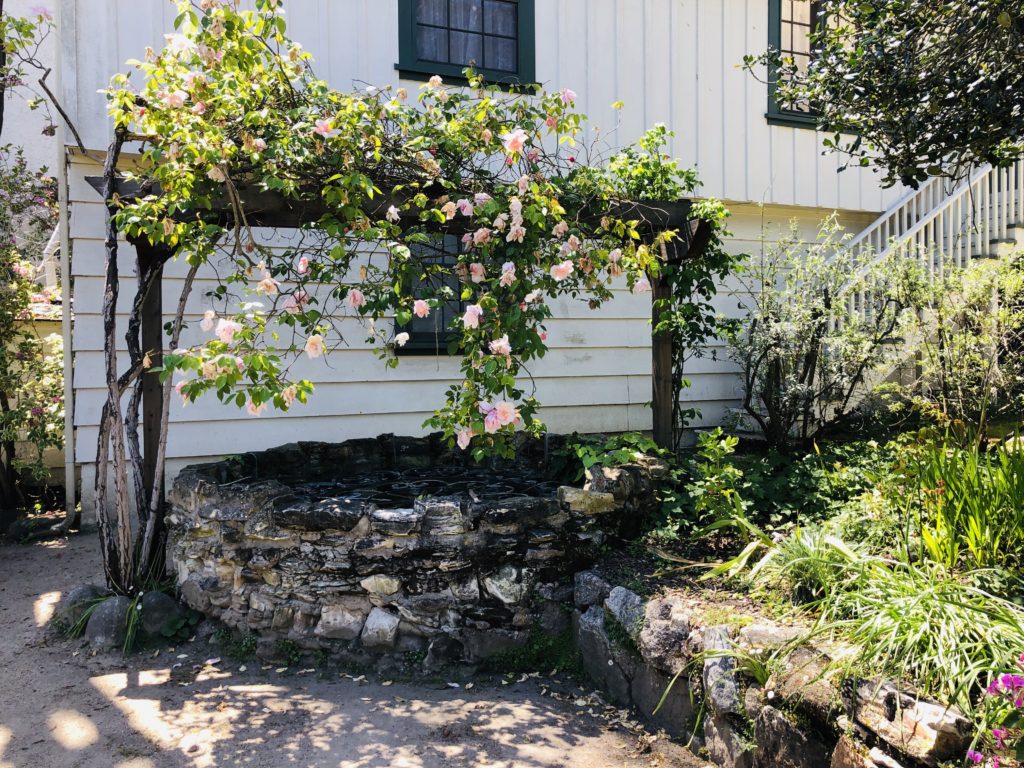
A wishing well covered with climbing roses draws your eye at the Larkin secret garden. 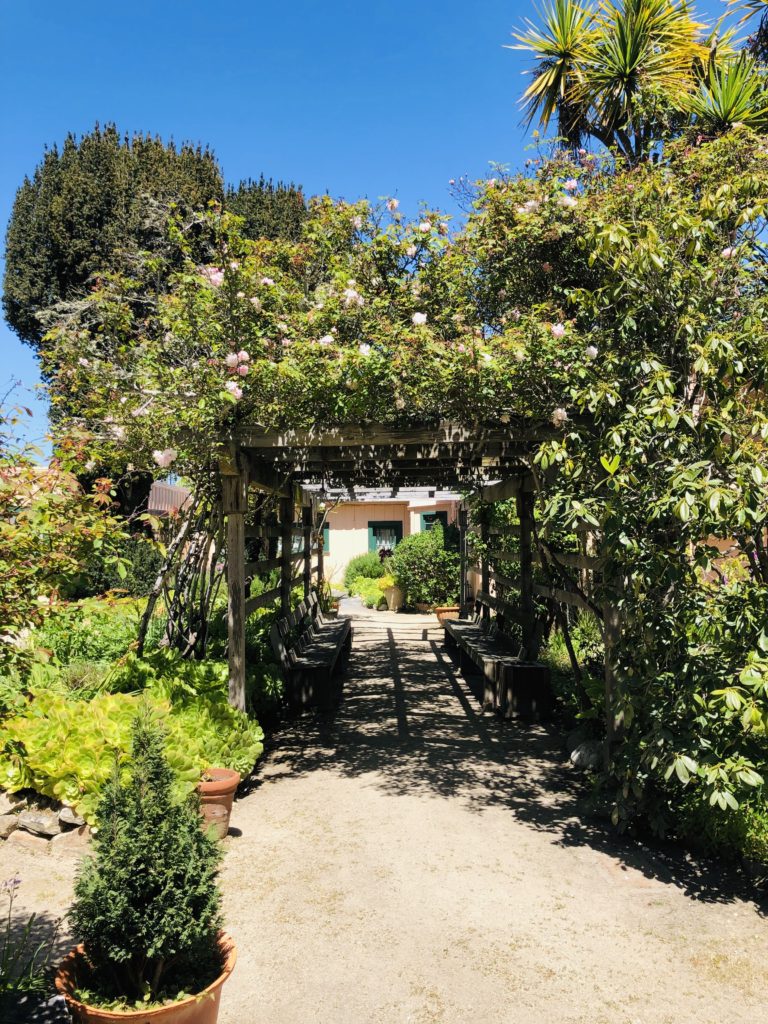
2. The Memory Garden, located at 20 Custom House Plaza in Monterey, was designed by Frederick Law Olmstead, Jr. in 1927. It has an 8-foot high adobe wall and three gates. Inside the garden is a 15-foot diameter fountain surrounded by lovely magnolia trees.
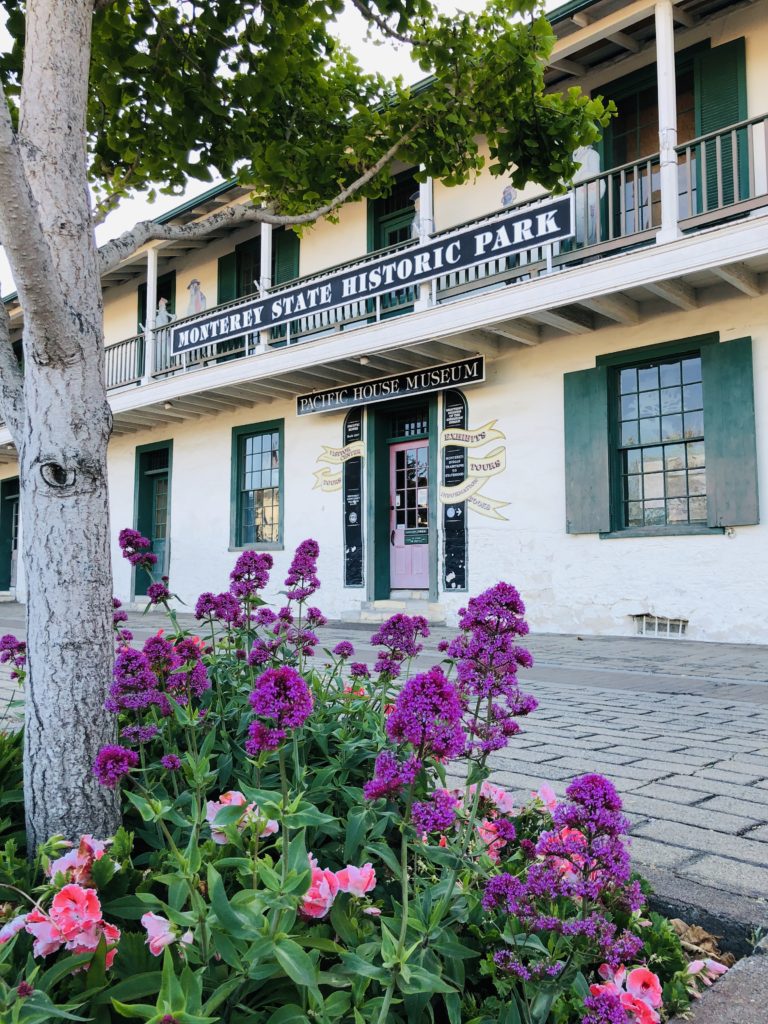
The Memory Garden lies behind the Monterey State Historic Park office and Pacific House Museum. 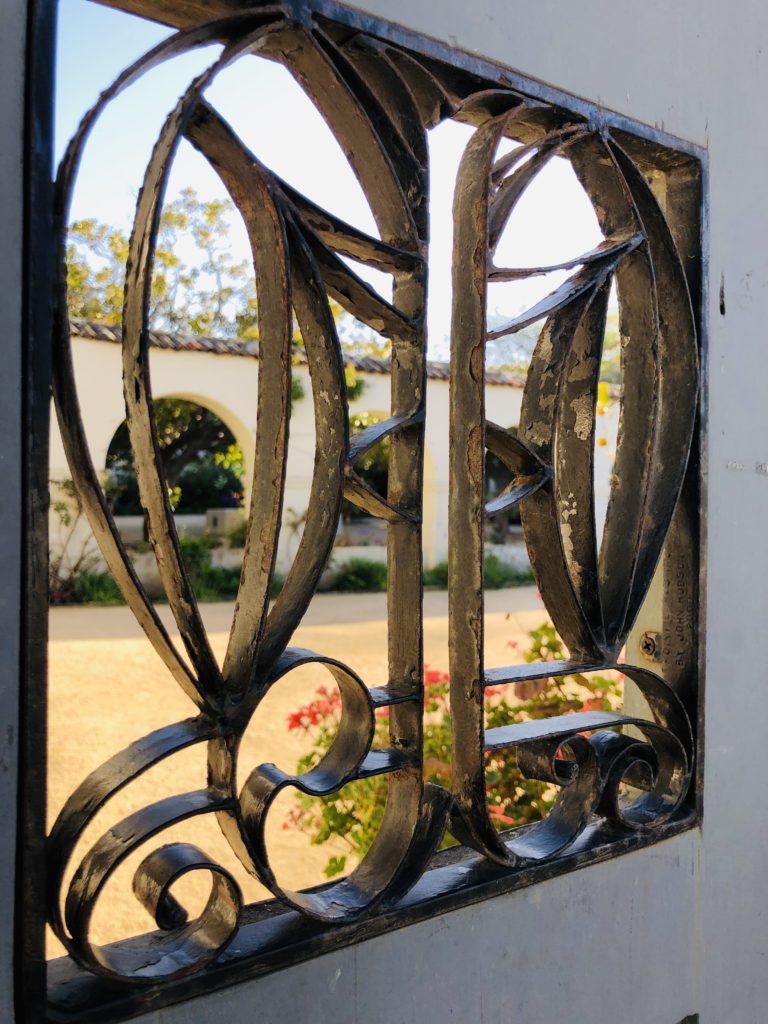
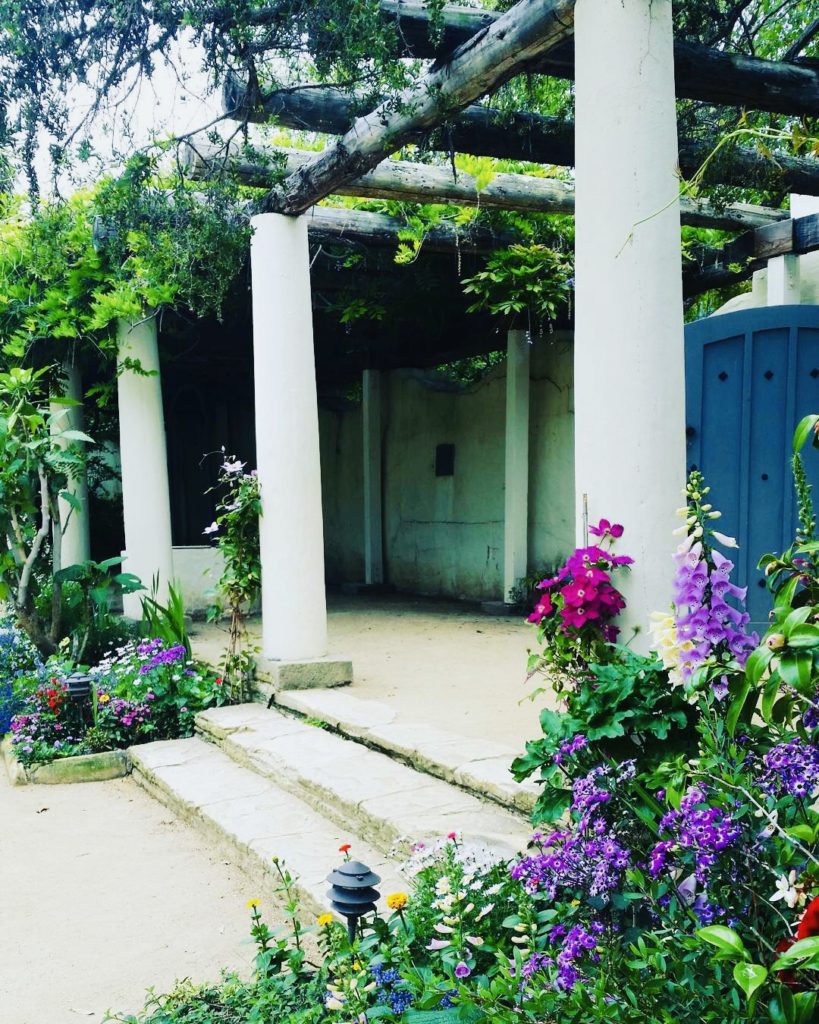
3. The Casa del Oro Garden is at the corner of Pacific and Scott Streets just across from the First Theatre. This is the only garden not enclosed by a wall.
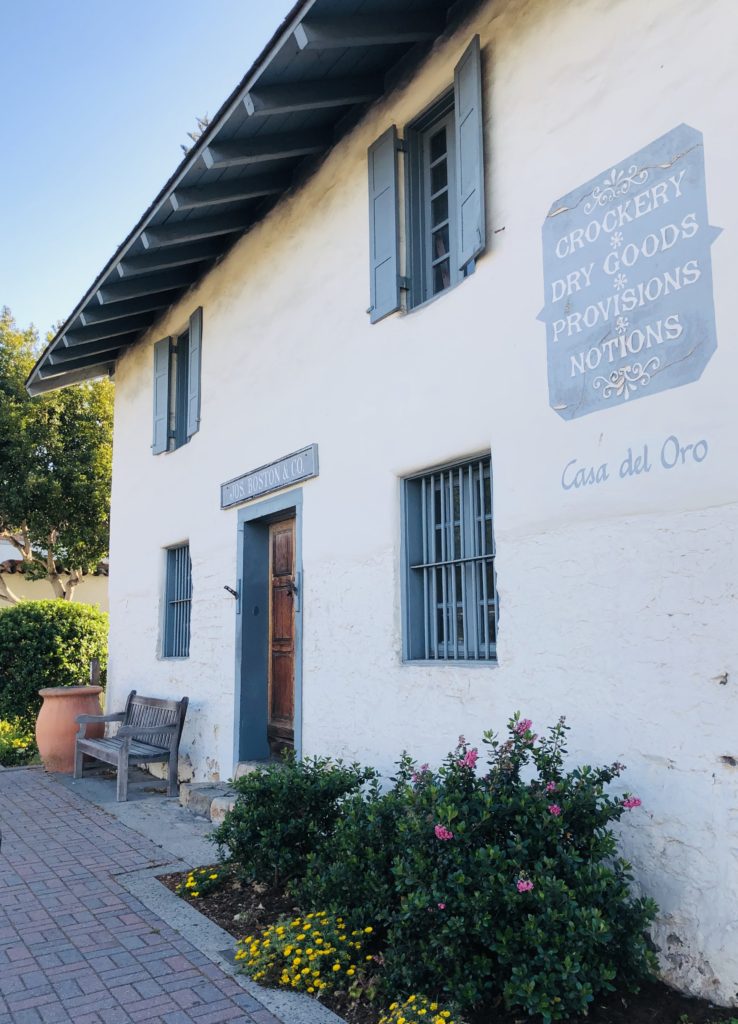
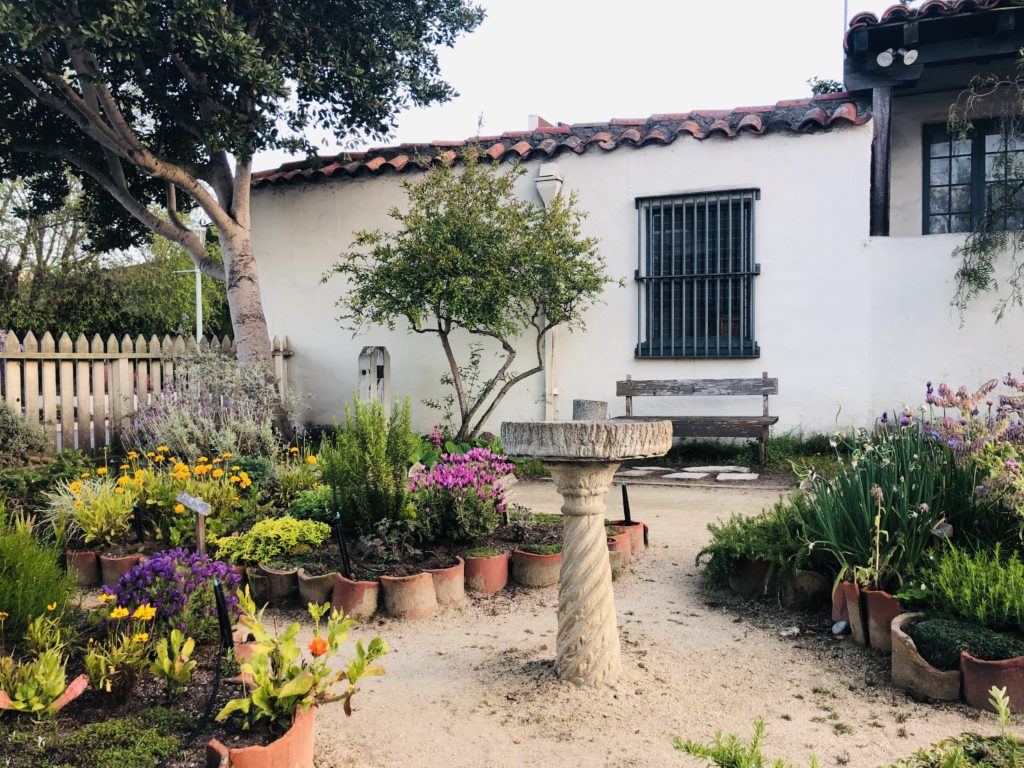
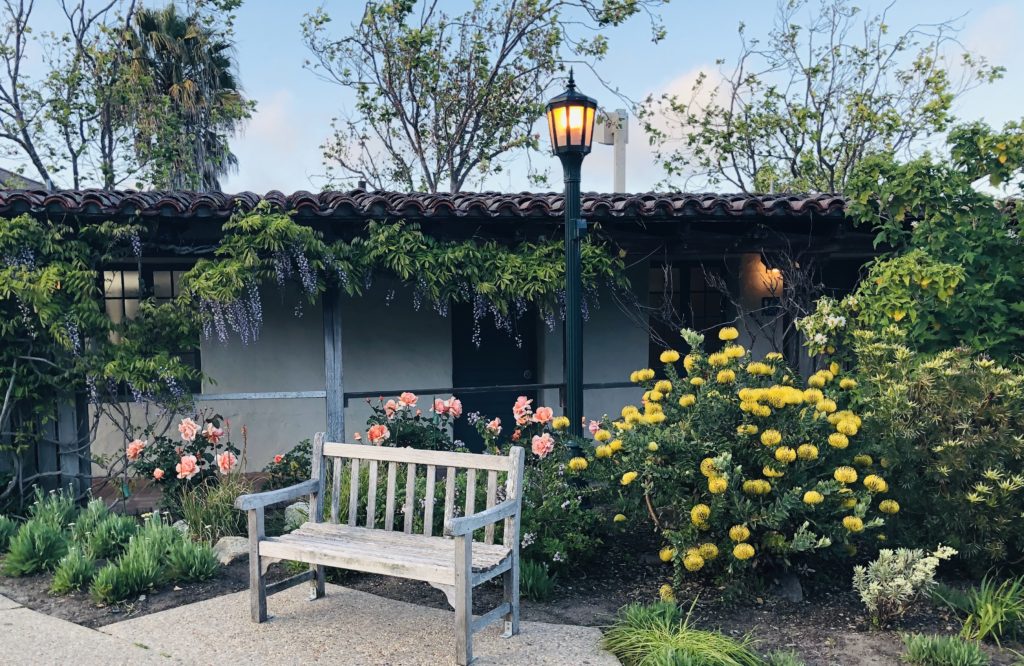
4. The Stevenson Garden is named for the boarding house where Robert Louis Stevenson stayed in 1879 while courting his future wife, Fanny Osbourne. He stayed on the second floor of the French Hotel at 530 Houston Street and worked on essays as well as ideas for future works, including Treasure Island.
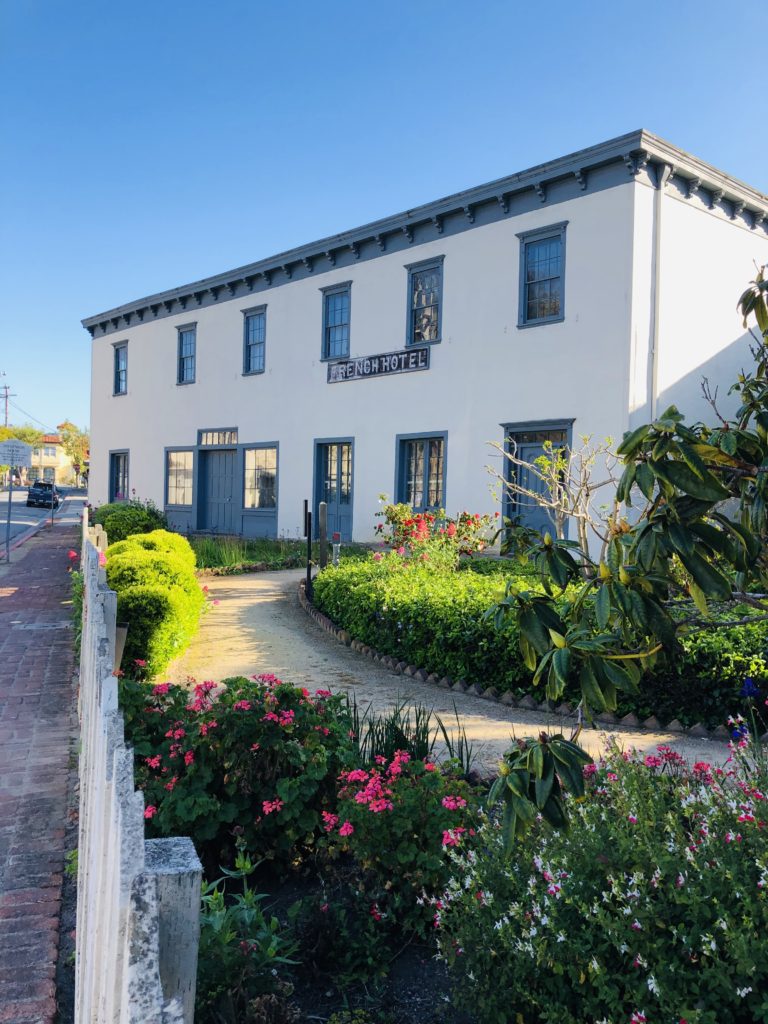
In front, a white picket fence frames a bevy of blooms. Behind the old French Hotel is the secret garden, featuring meandering pathways surrounded by high fencing and featuring an ancient gate at the rear.
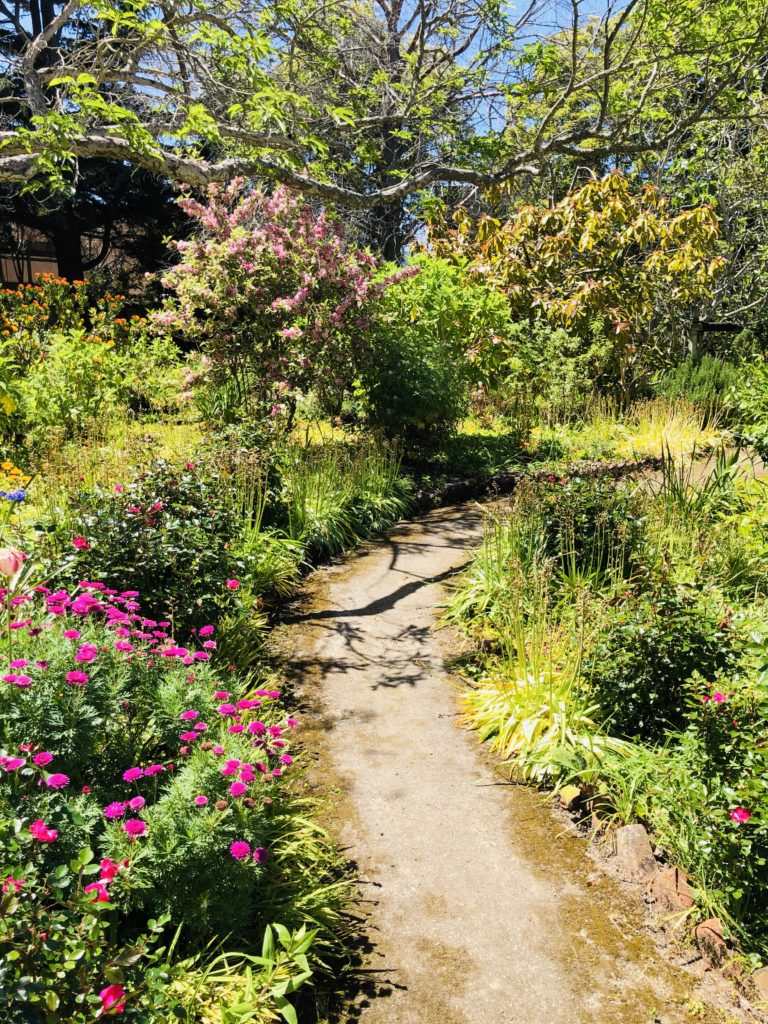
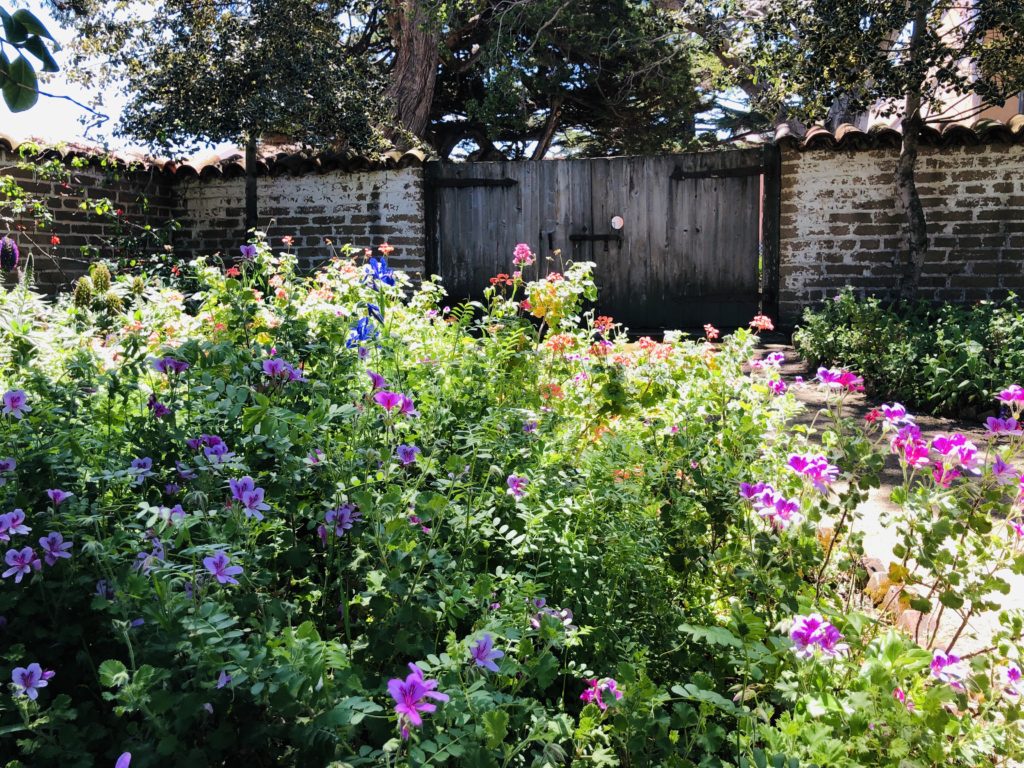
5. The Casa Soberanes Garden, located at the corner of Pacific and Del Monte, features abalone shells and wine bottles as edgings for the flowerbeds in its secret garden.
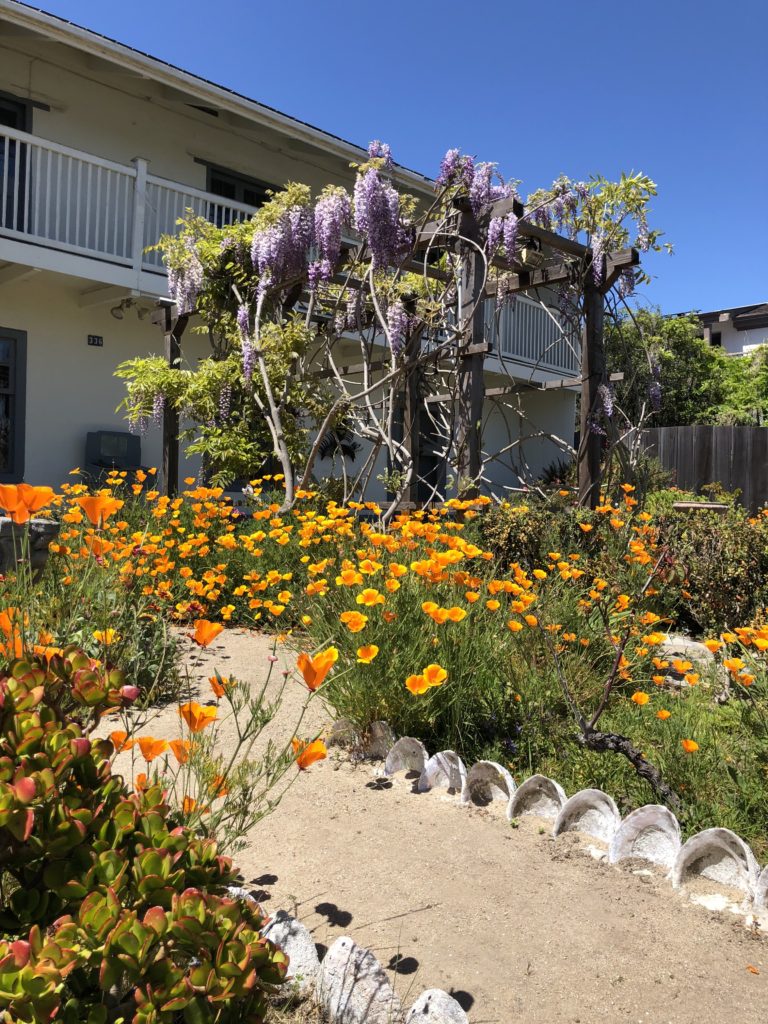
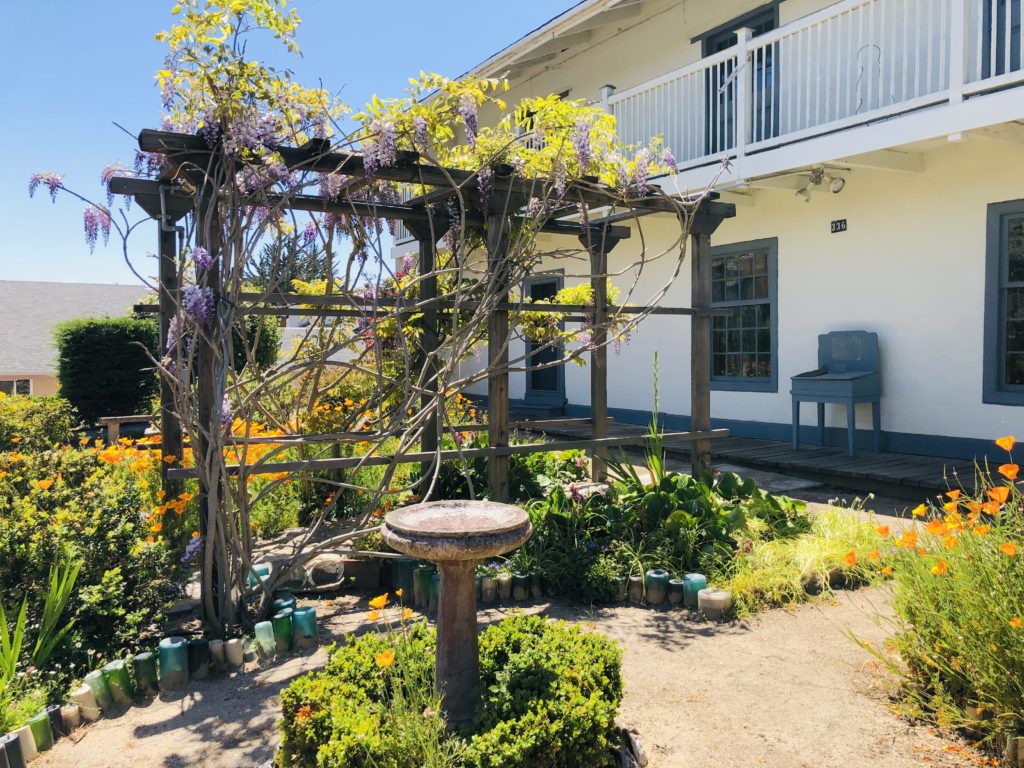
6. The First Theatre Garden is located at the corner of Pacific and Scott Streets. Whale bones frame the entrance of the theatre building, vestiges of Monterey’s whaling history.
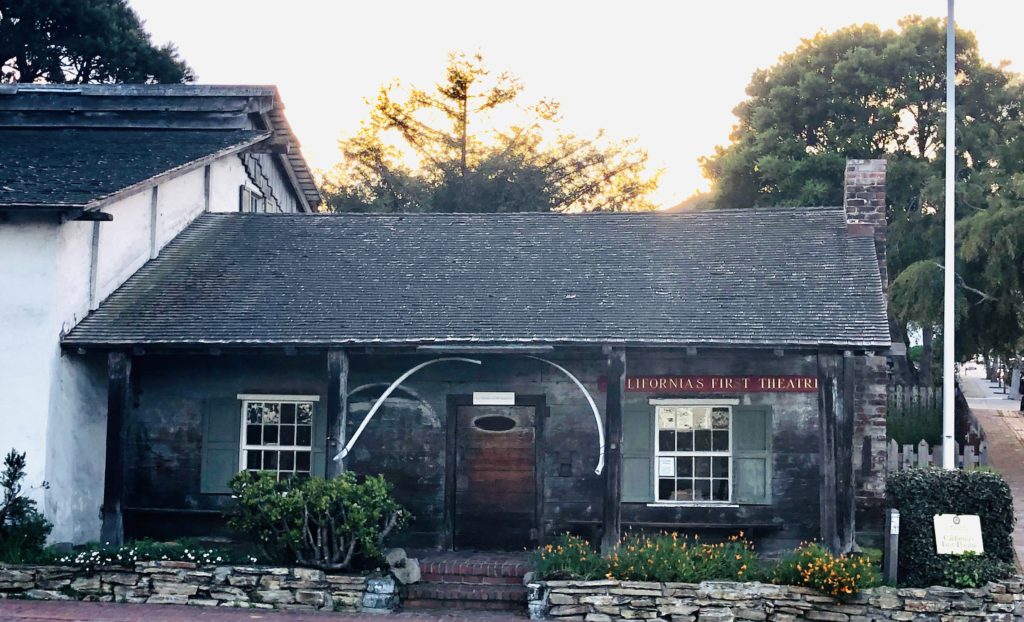
California’s first theater was built in 1847 by Jack Swan for use as a lodging house and tavern for sailors. It became a theatre in 1850. 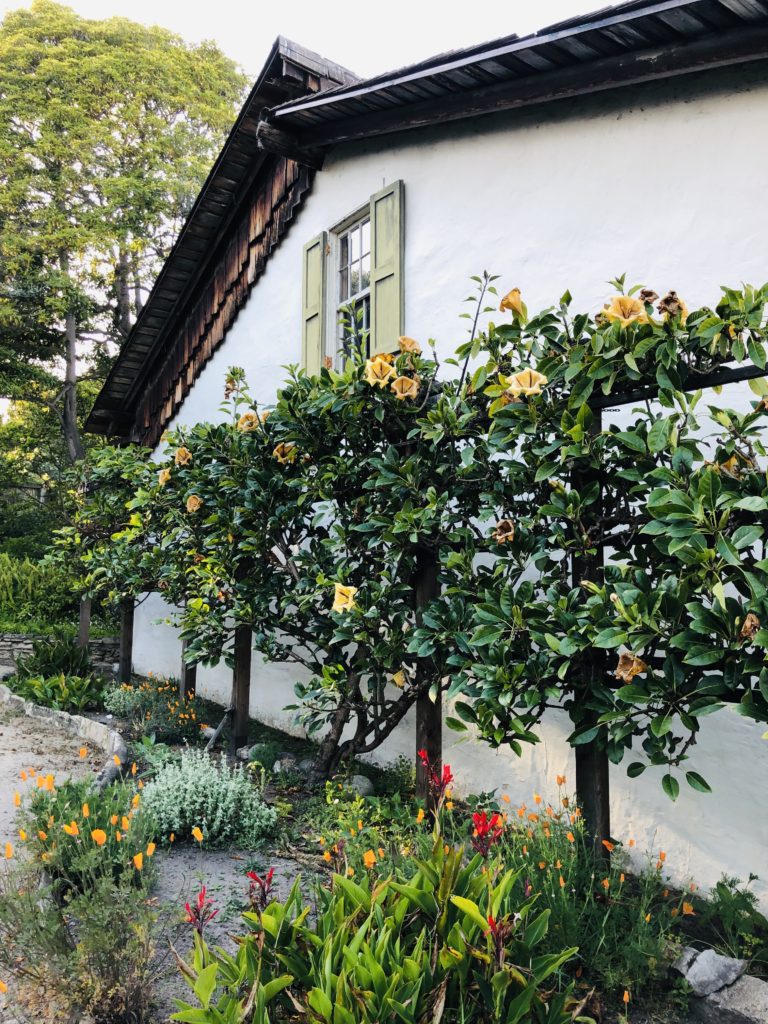
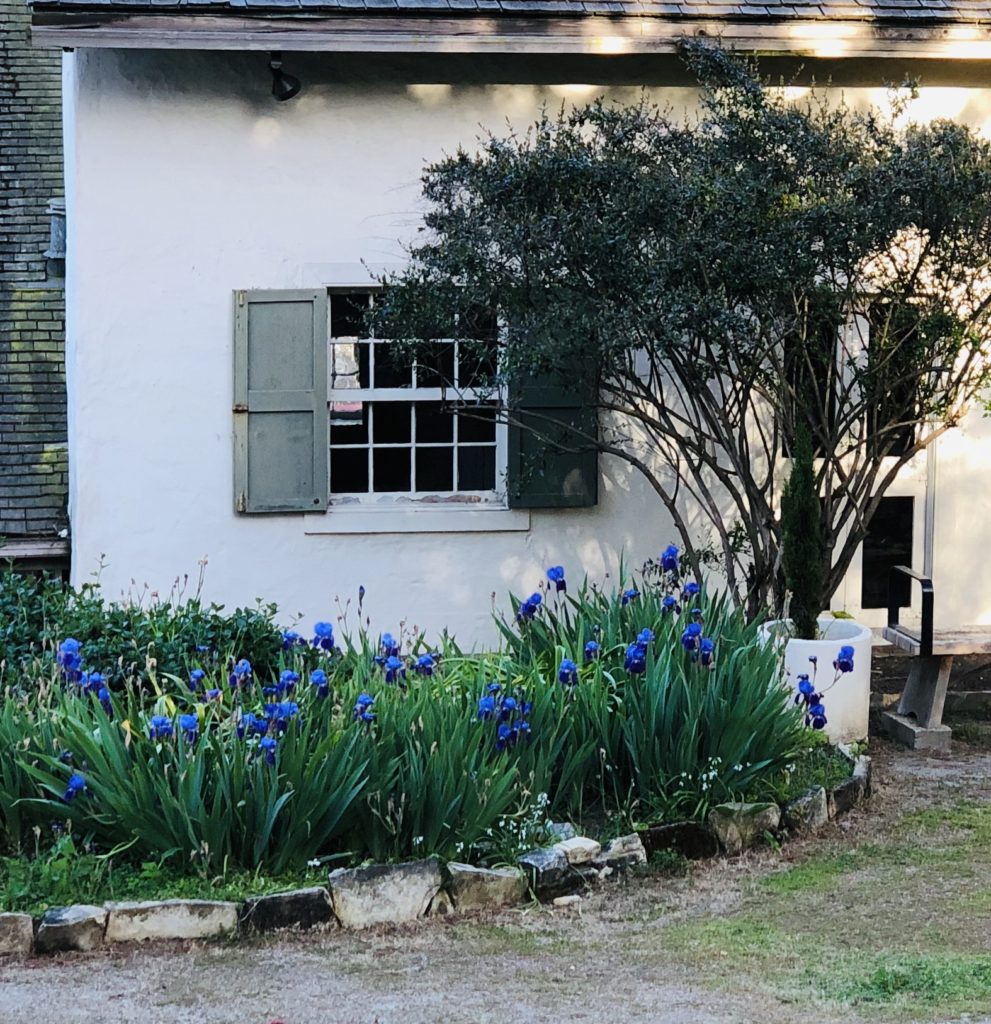
7. Hidden behind a very old wall at the corner of Polk and Munras is the Cooper Molera Adobe secret garden and orchard, Built in 1827, the property is a National Trust Historic Site. What fun to meander among the rustic elegance of the only historic redwood barns within the city limits of Monterey and enjoy the charming and beautiful plants and flowers here.
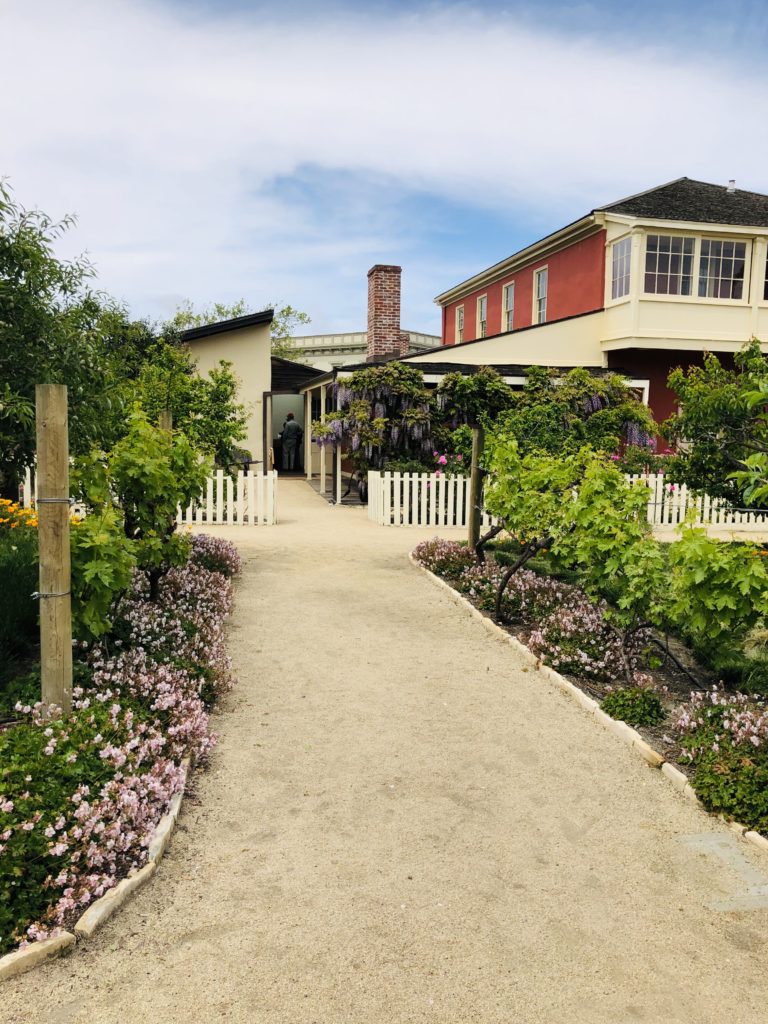
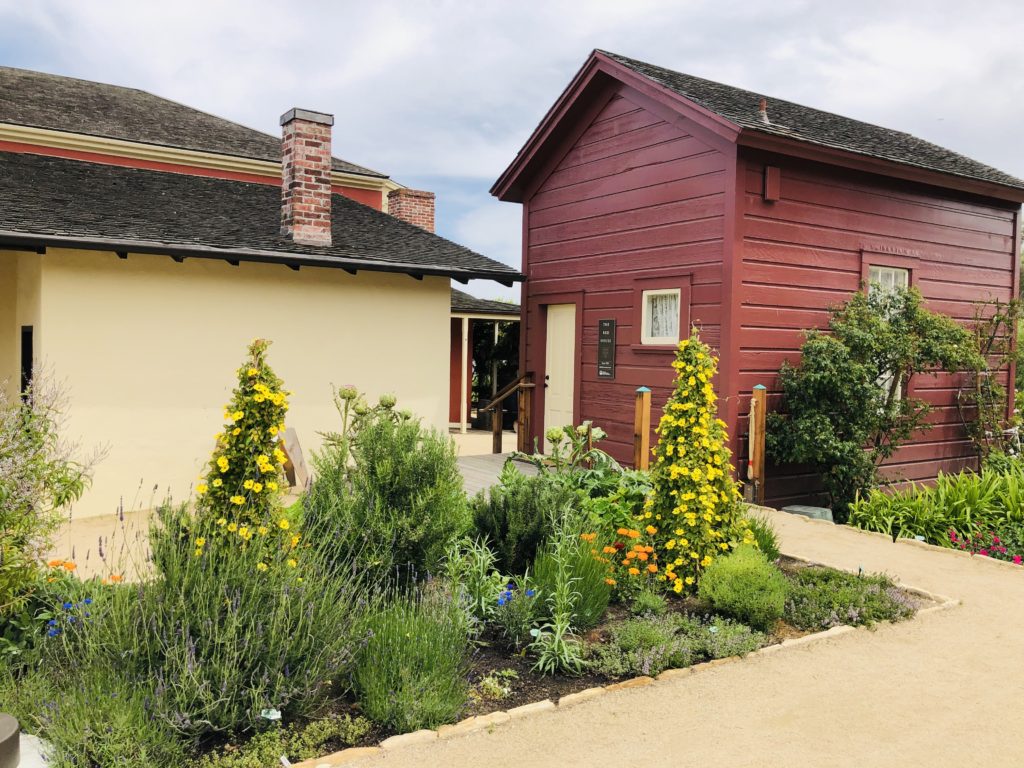
The paths here are wide and easy to navigate throughout the beautiful flowerbeds and the orchard. 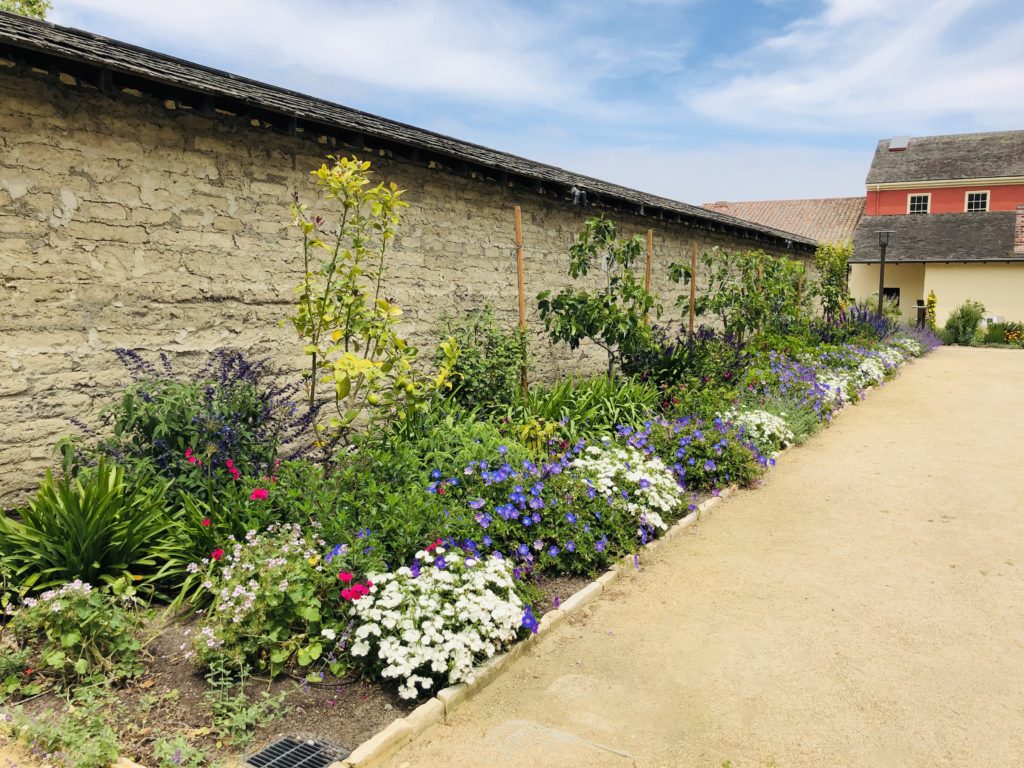
Hours: The Larkin, Memory, Casa del Oro, Stevenson, Casa Soberanes, and First Theatre gardens are open daily from 9 am-4 pm. For more information, see California State Parks. Hours for the Cooper Molera garden are Tuesday through Saturday: 11 am – 4 pm, and Sunday 11 am– 2:30 pm.

I hope you enjoyed this post and are able to visit the secret gardens of Monterey. Thank you for visiting my blog. Wishing you peace, love, happiness, and beautiful vistas!
-
Whale Watching & More at Fisherman’s Wharf
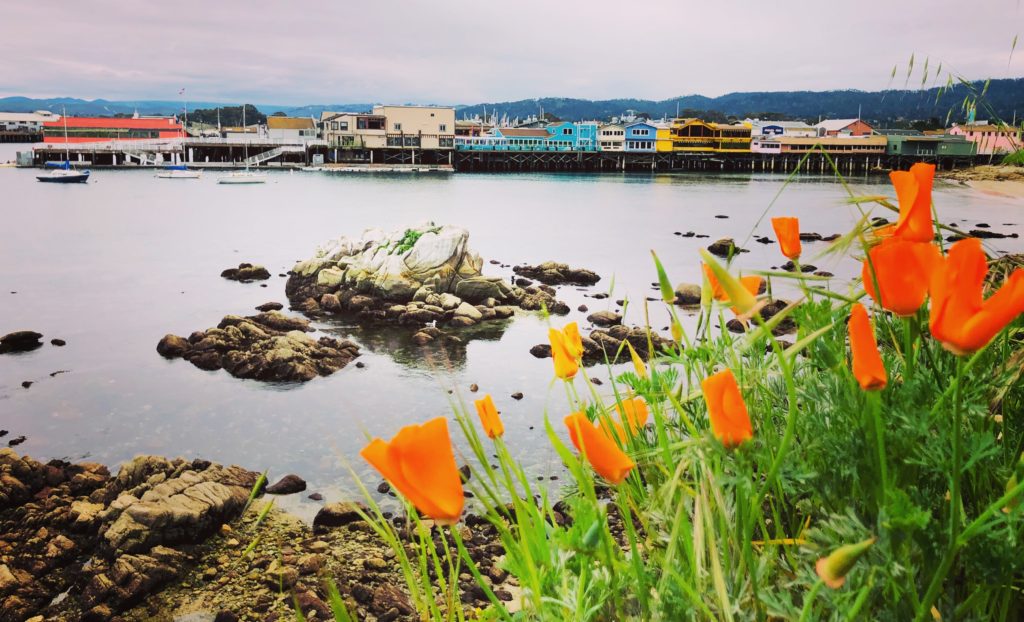 Fisherman’s Wharf in Monterey is busy, busy, busy. The minute you step foot here, the sounds, smells and sights will inundate you. On the surface, Fisherman’s Wharf may seem like a typical tourist trap, with shops hawking the usual souvenirs, t-shirts and knick-knacks. But don’t let that stop you from exploring this charming venue. Fisherman’s Wharf has so much more to offer. It is full of history, beauty, and adventure, a must-see when visiting Monterey.
Fisherman’s Wharf in Monterey is busy, busy, busy. The minute you step foot here, the sounds, smells and sights will inundate you. On the surface, Fisherman’s Wharf may seem like a typical tourist trap, with shops hawking the usual souvenirs, t-shirts and knick-knacks. But don’t let that stop you from exploring this charming venue. Fisherman’s Wharf has so much more to offer. It is full of history, beauty, and adventure, a must-see when visiting Monterey.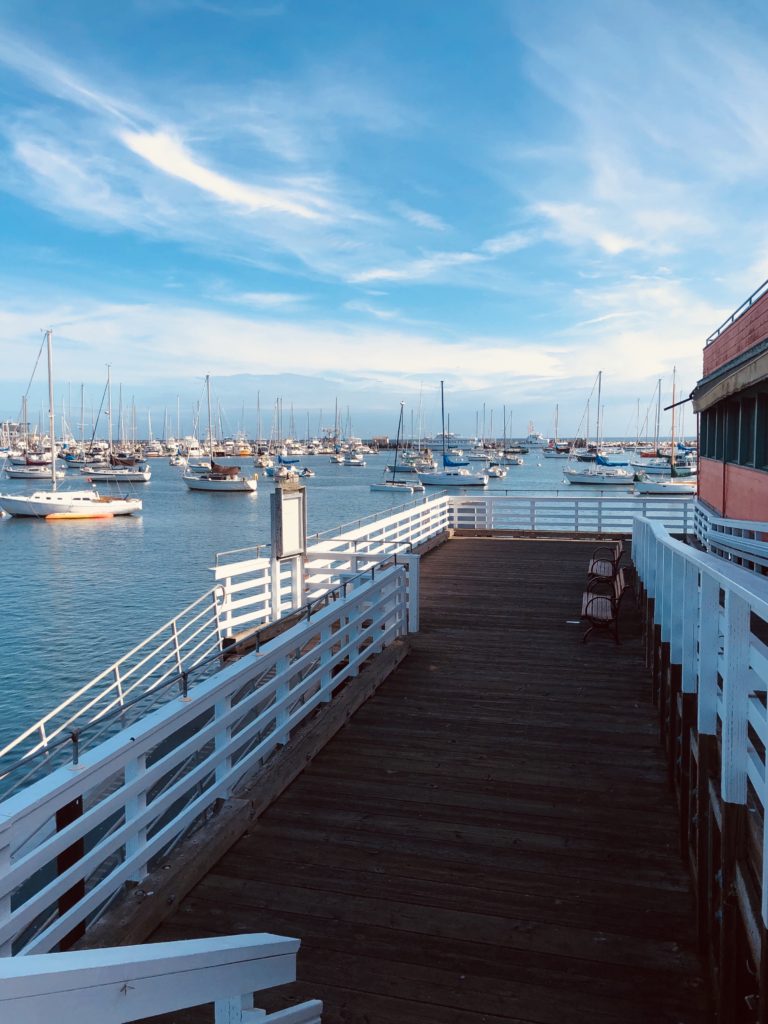
Fisherman’s Wharf has a long and colorful history. In 1602 a Spanish nobleman named Conde de Monterey sent a mariner to explore the area. After discovering the beautiful harbor, the mariner named it Monterey after his employer. California remained under Spanish control with Monterey as its capital until 1822 when Mexico took over. After the Mexican American War in 1846, it became the property of the United States. Monterey remained the capital of California for a full year, until 1847. You can view the original historical Custom House adjacent to the Wharf.
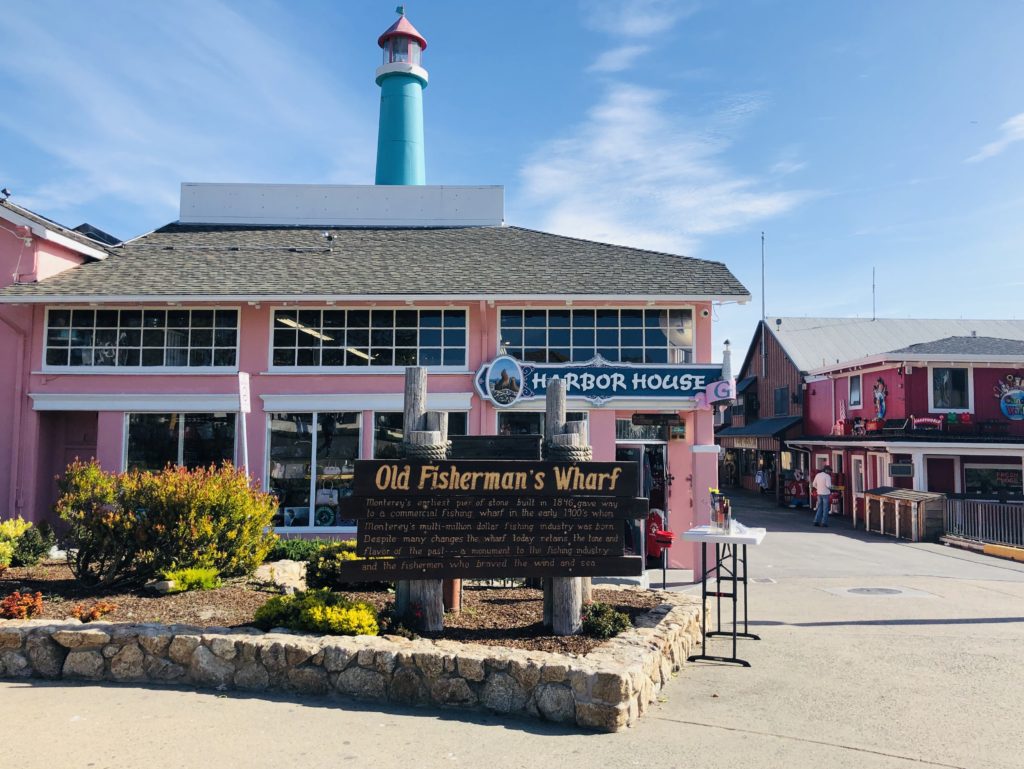
In 1845, Thomas Larkin began construction on what would become Fisherman’s Wharf. In 1870, the Pacific Coast Steamship Company completed the Wharf. As the fishing industry grew after the turn of the century, especially the sardine industry, the city of Monterey purchased the Wharf and began to expand it. After World War II, Fisherman’s Wharf converted to a tourist-oriented area.
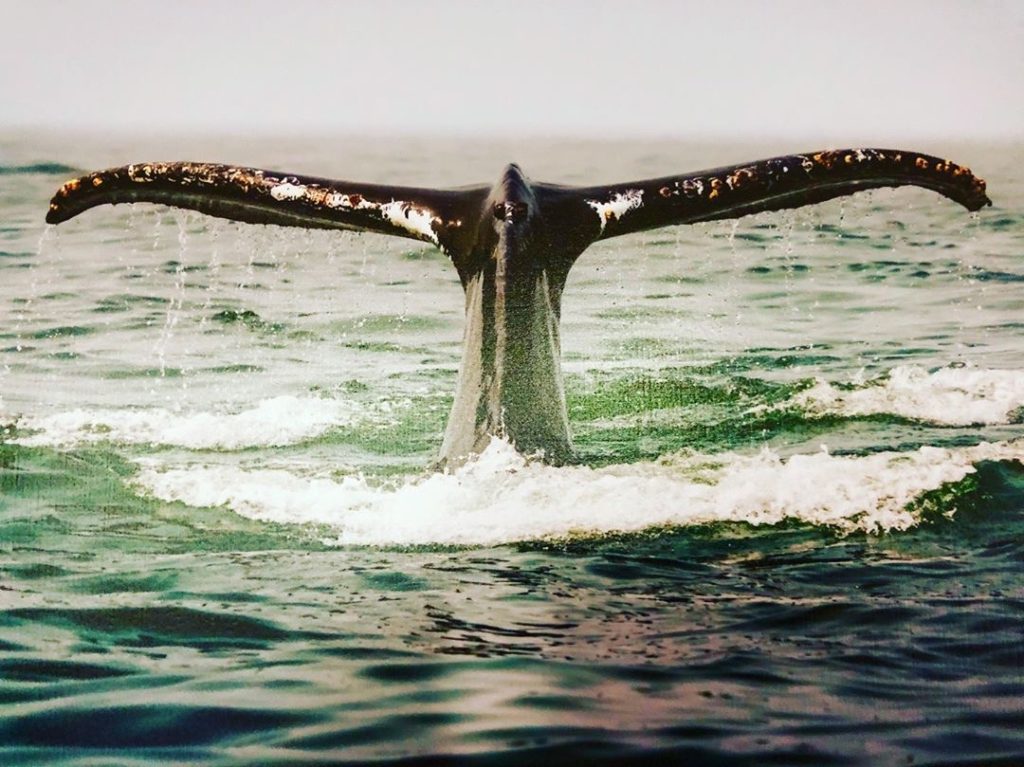
Fisherman’s Wharf in Monterey is known as the whale watching capital of the world, drawing nearly 4 million visitors a year. Gray whales, killer whales, humpback whales, blue whales and a plethora of other sea creatures can be seen here. Fisherman’s Wharf is part of the Monterey Bay National Marine Sanctuary. You can often spot whales off the shore, where they feed on plankton krill, squid and anchovies. For a closer view, whale cruises are available directly from the Wharf. Deep-sea fishing trips are also available.
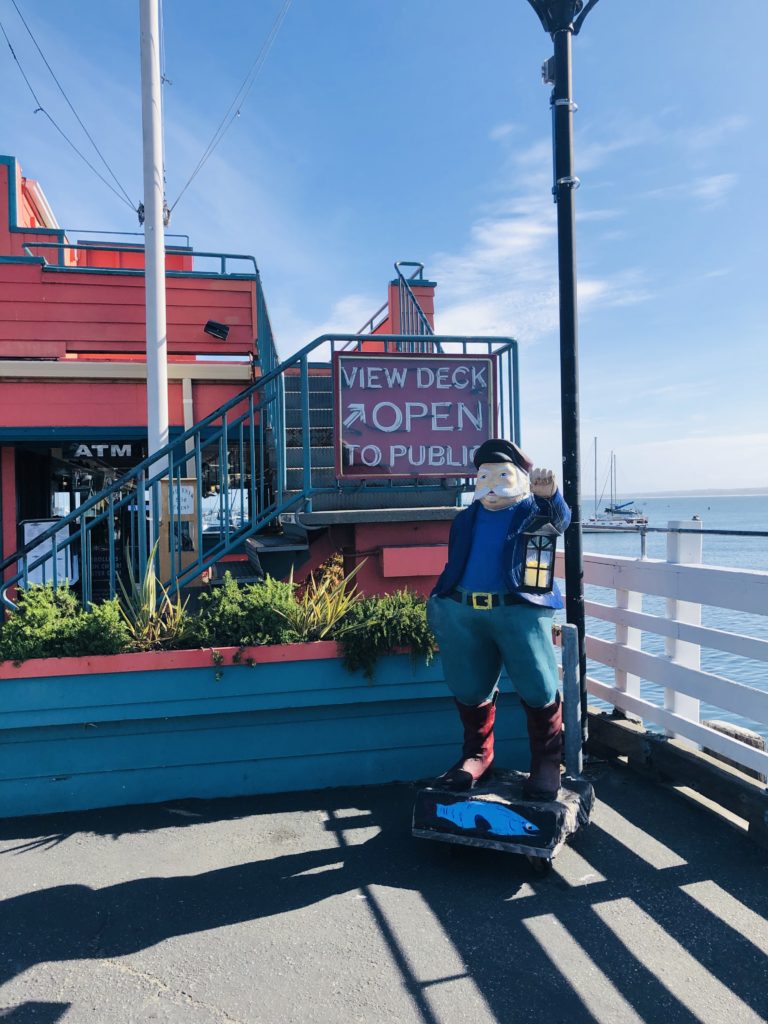
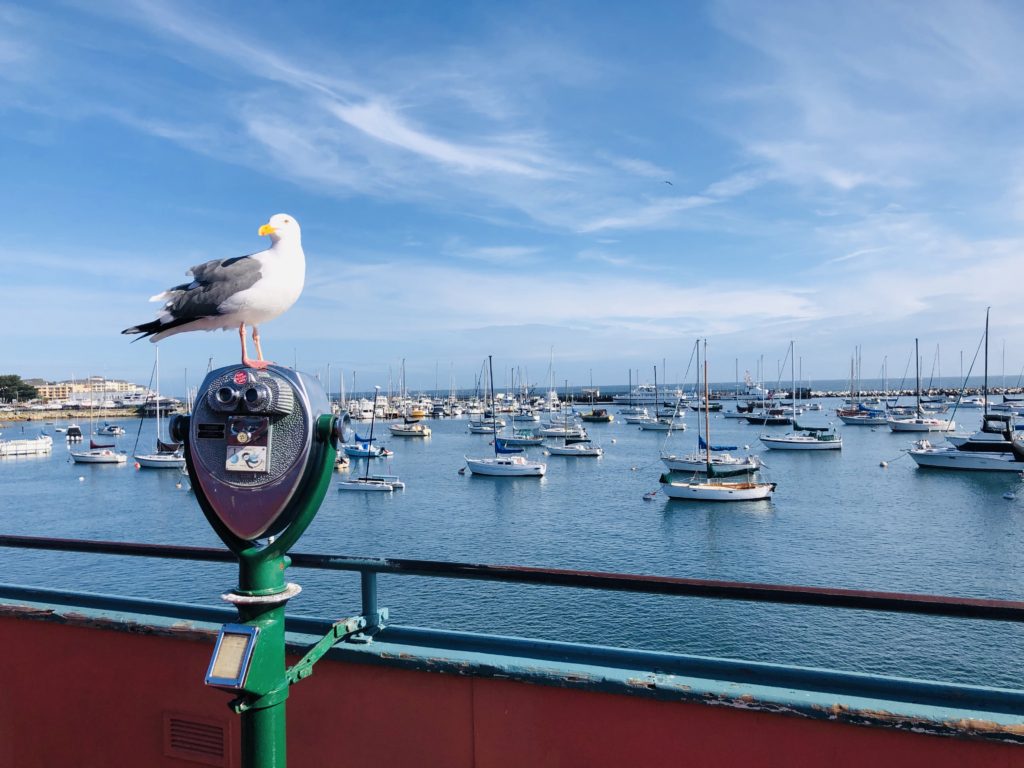
Fisherman’s Wharf is home to a charming plethora of wonderful restaurants. Some of the best fresh local seafood is available here, including abalone, Dungeness crab, oysters, California prawns, squid, and halibut. Many of the restaurants here have been in the same families for generations. Several restaurants have both quaint outdoor seating as well as ocean views inside. Many offer free samples of their delicious clam chowder!
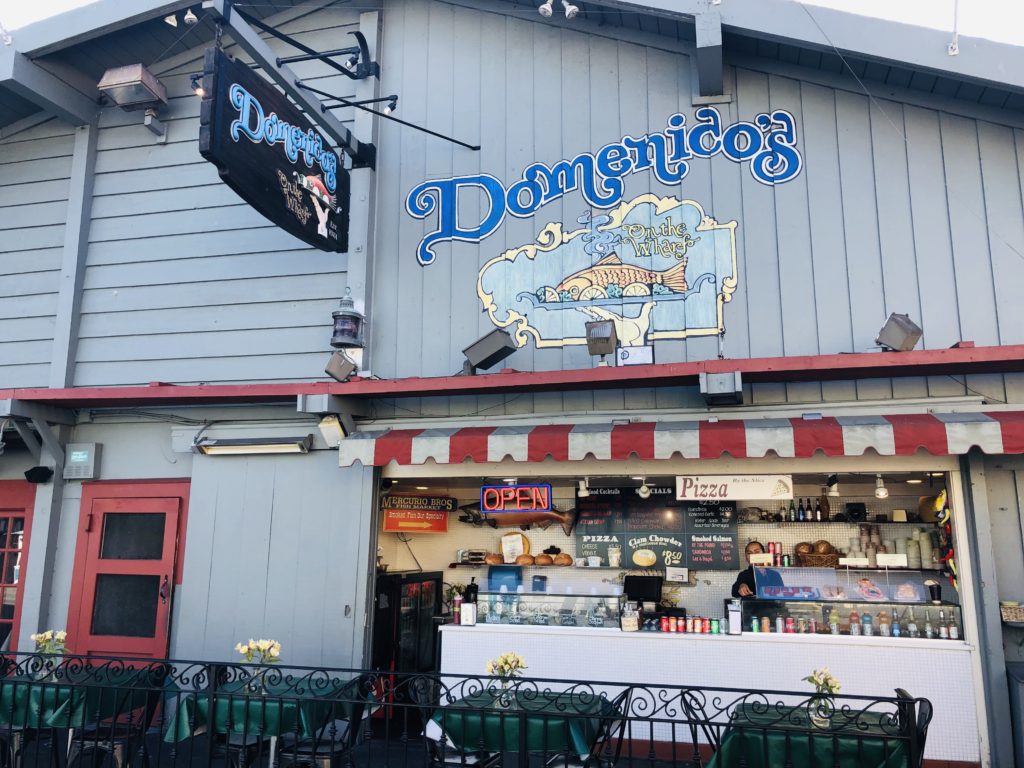
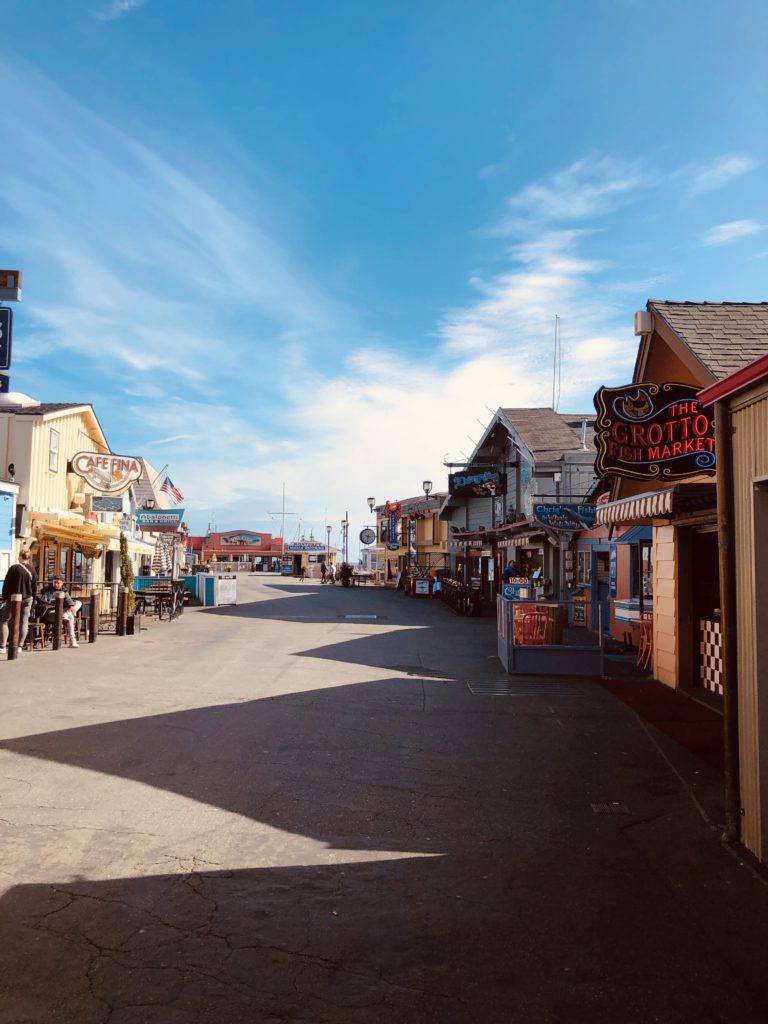
Fisherman’s Wharf also features a glorious array of coastal blooms. It is a flower lover’s paradise, especially in the spring. Eye-catching blossoms in a rainbow of colors abound. I absolutely love the beautiful flowers here!
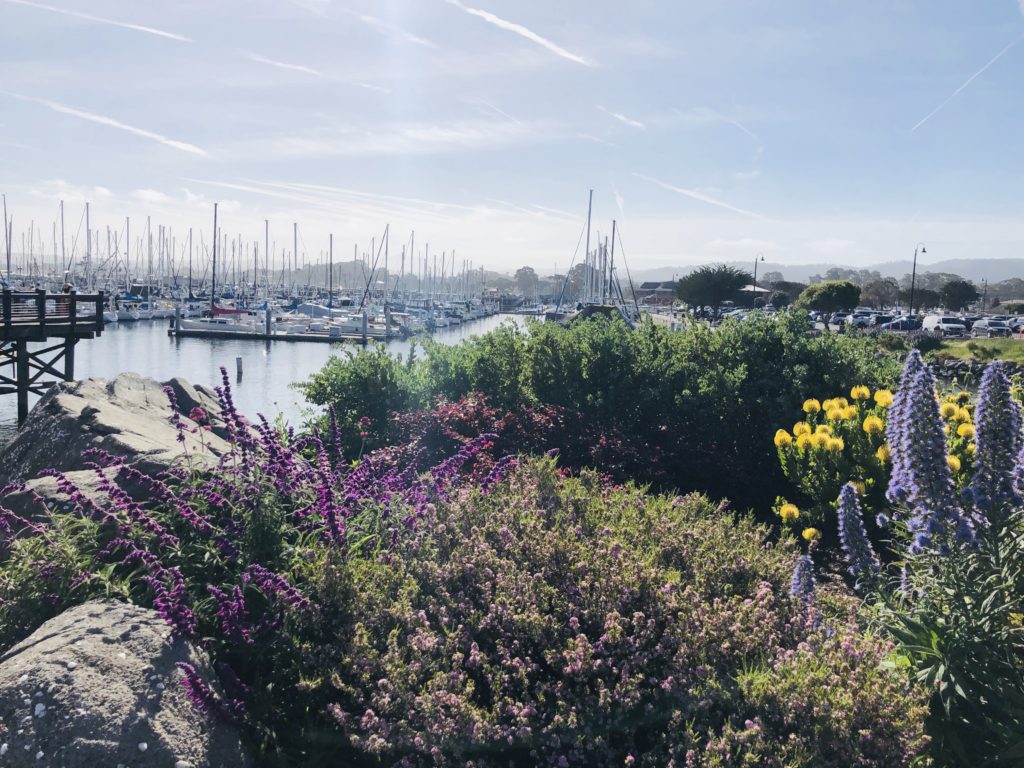
Fisherman’s Wharf is also a great place to people watch, beach comb, and explore the spectacular coastal recreational trail. You can often see and hear sea lions barking in the bay. The stunning views and vibes are priceless.
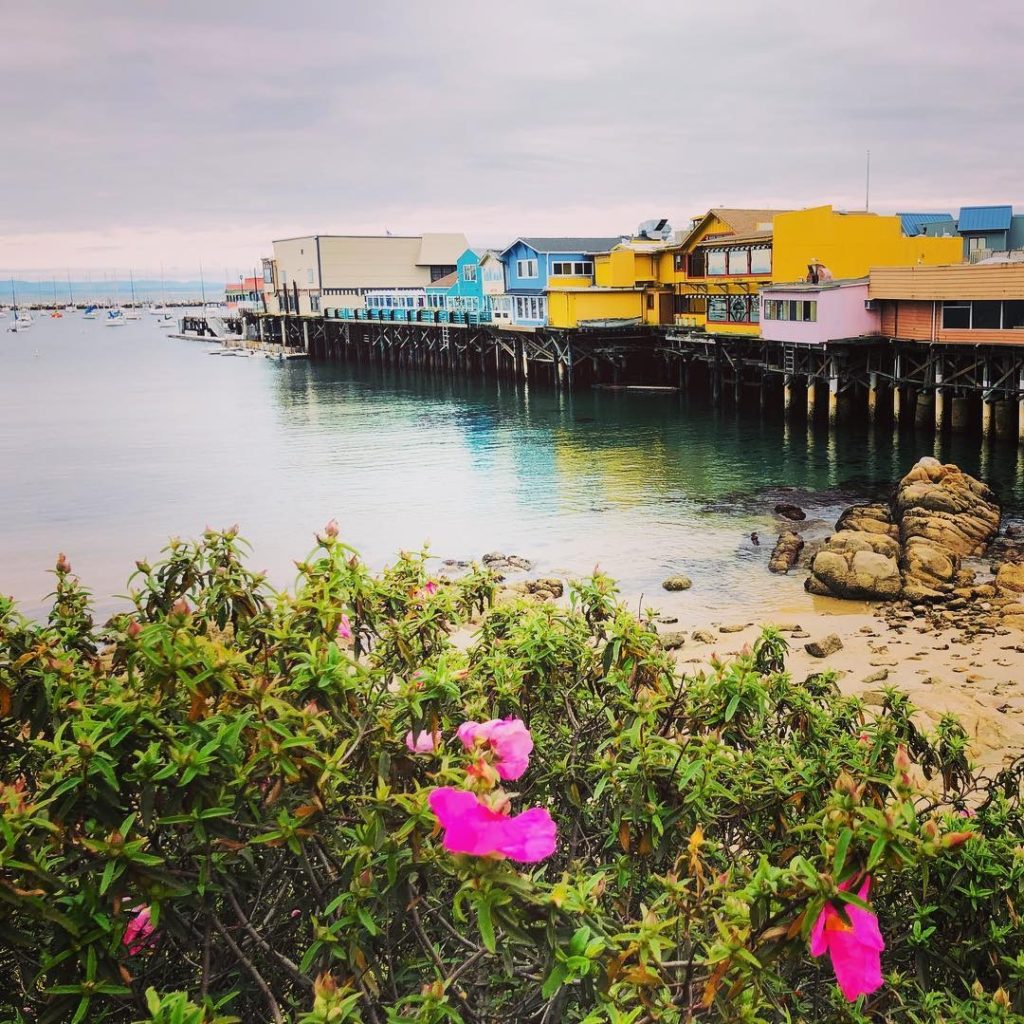
There are many benches available to just sit, relax, and take in the inspiring vistas.
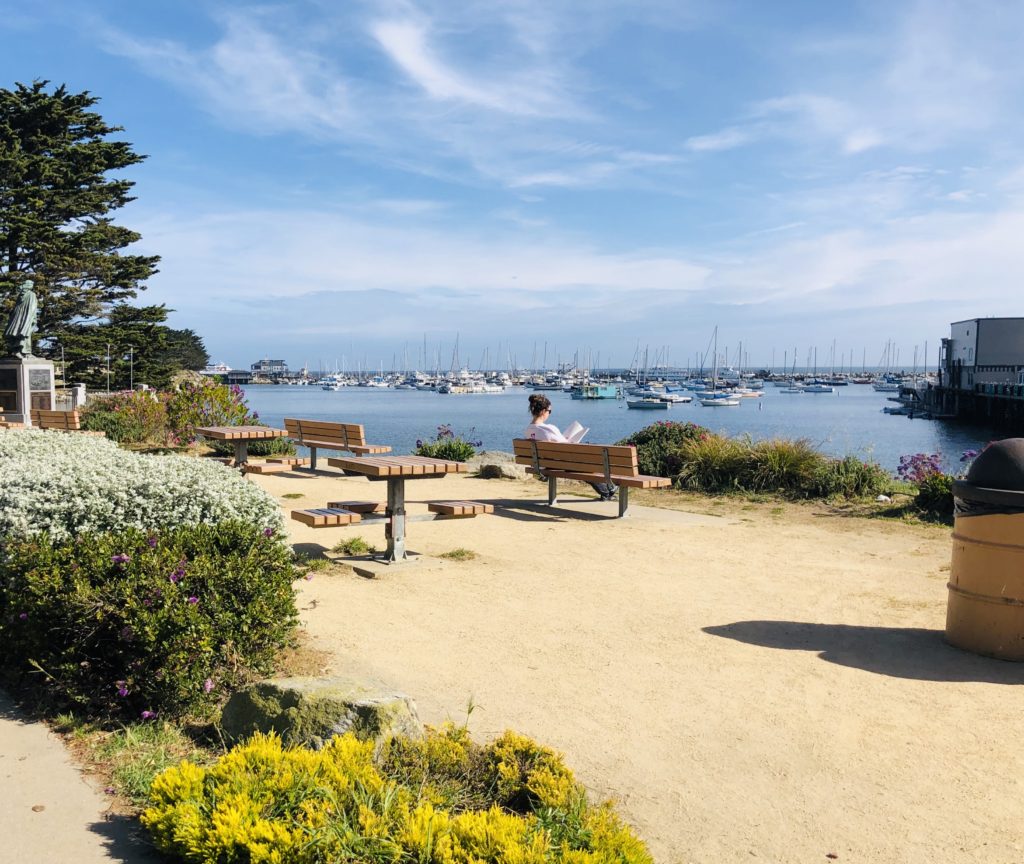
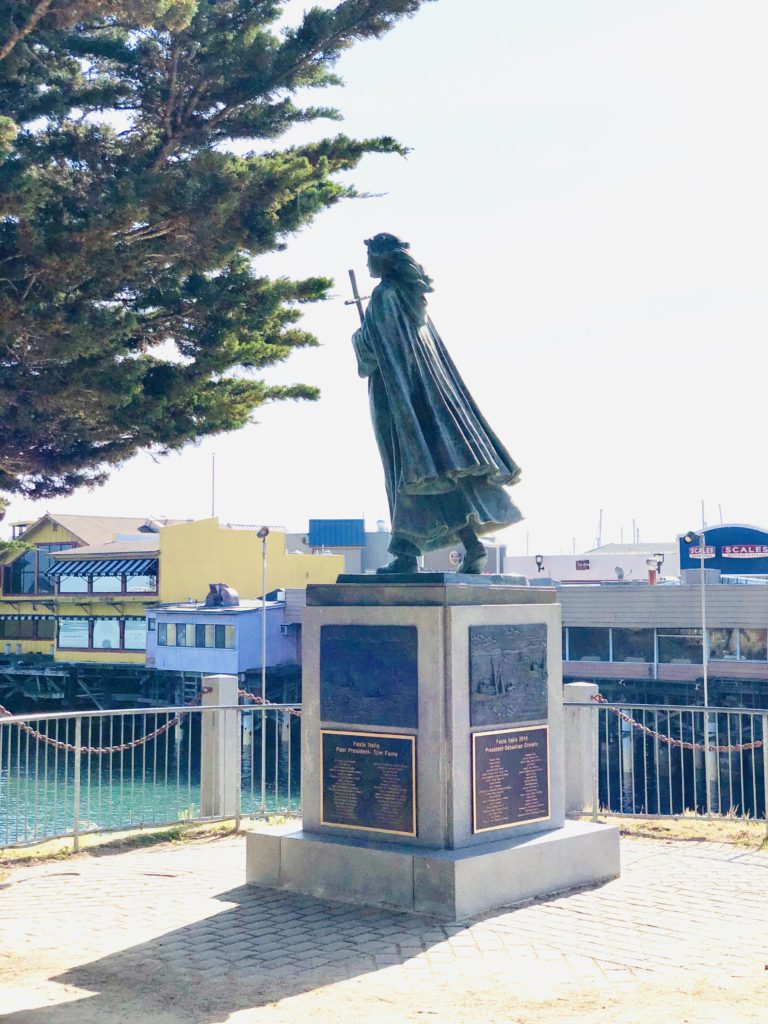
Santa Rosalia is the patron saint of the Italian fisherman who came to Monterey at the beginning of the 20th century. 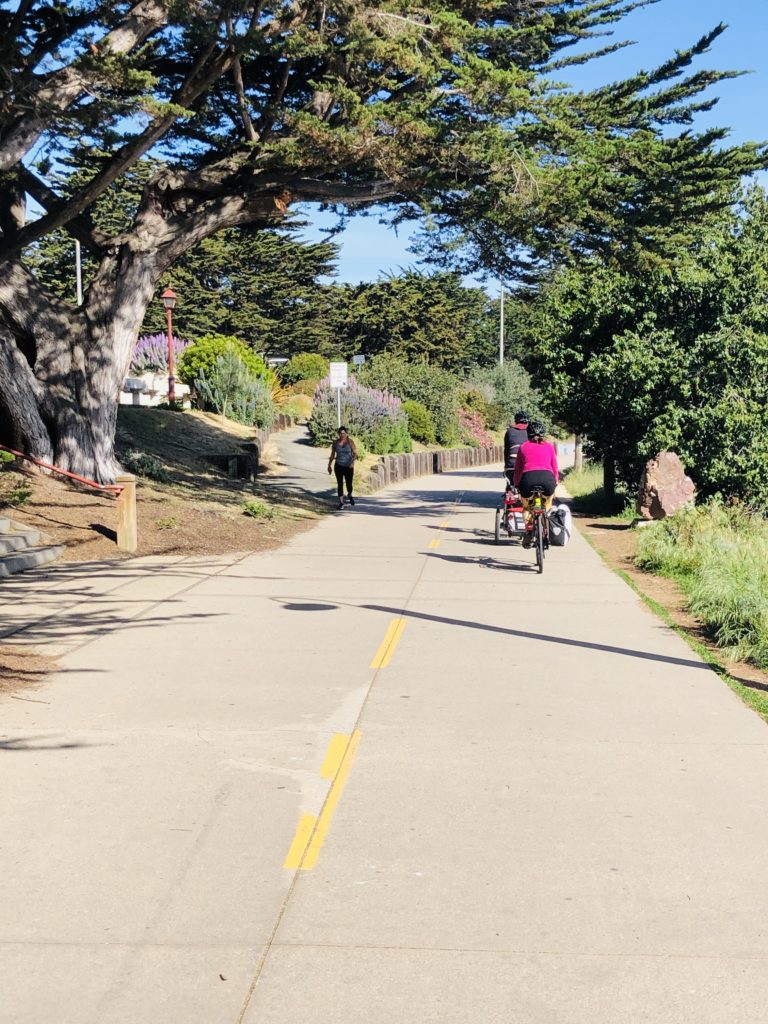
The coastal recreational path runs right past Fisherman’s Wharf. For more information on Fisherman’s Wharf, see City of Monterey, Monterey Wharf, or See Monterey.
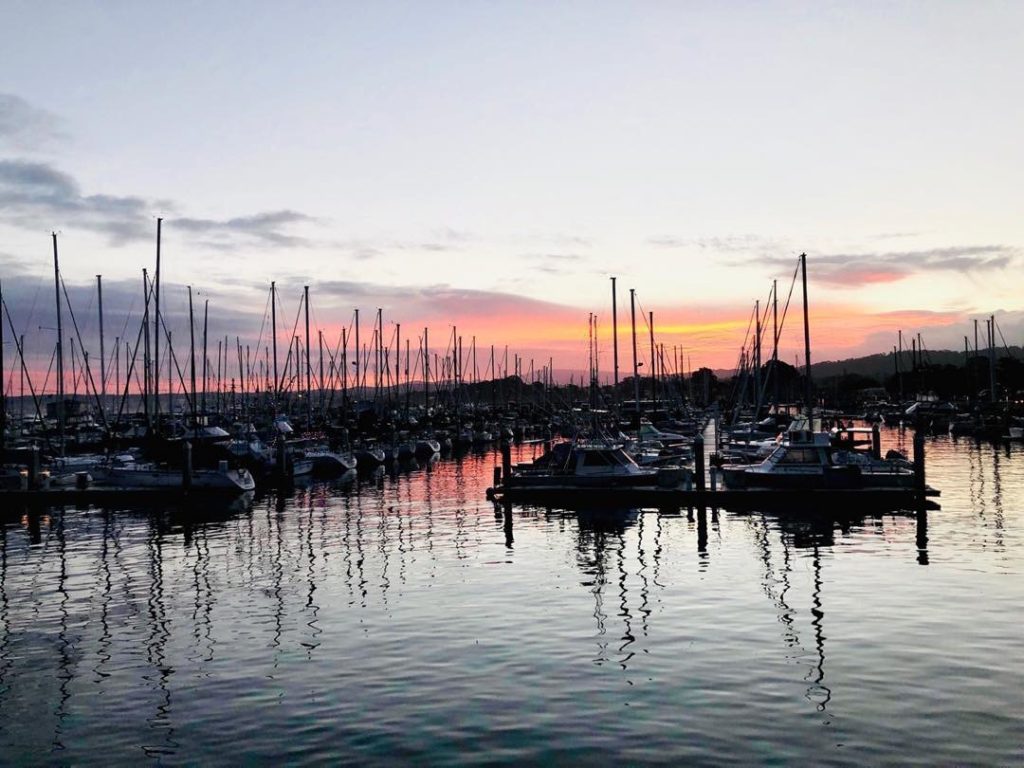
I hope you get to visit Fisherman’s Wharf! Thank you for visiting my blog. Wishing you peace, love, happiness & beautiful vistas!
-
Most Beautiful Sunset Quotes Ever!
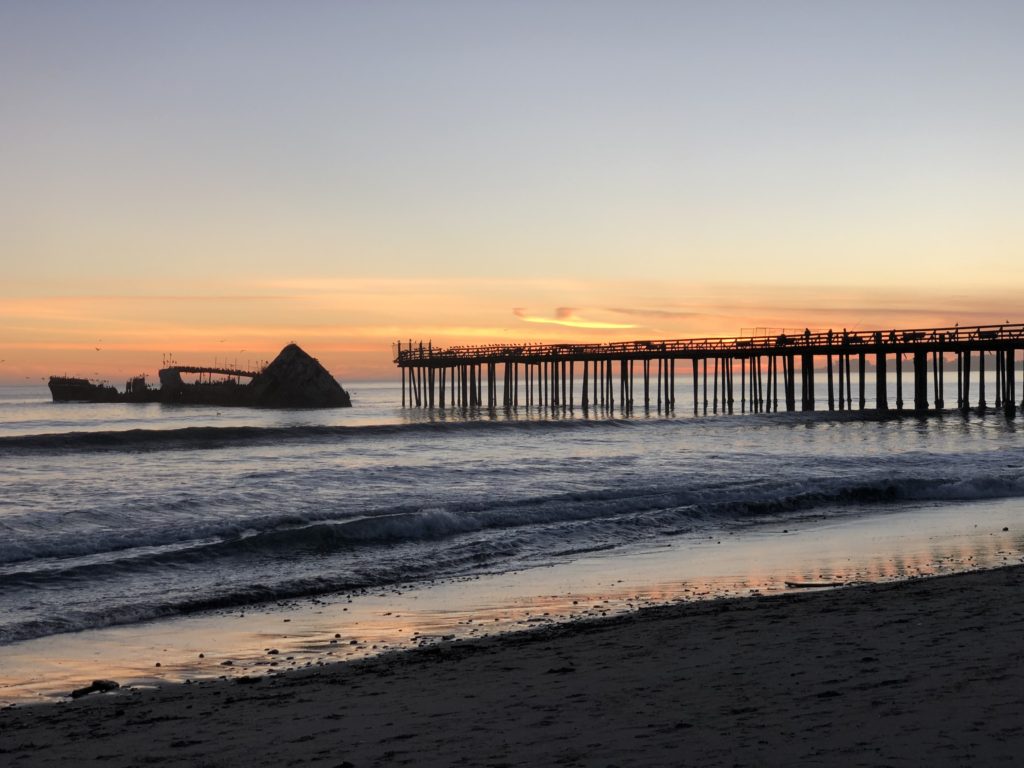
The water was glassy and calm, still candy-colored in the afterglow of sunset–Stephen King. There is nothing like watching the sun set in California. Sunsets here are incredibly surreal and beautiful. My obsession with them has fueled my penchant for taking oodles of photos. I thought I would pair my sunset captures with some of my favorite sunset quotes. I hope you enoy them!
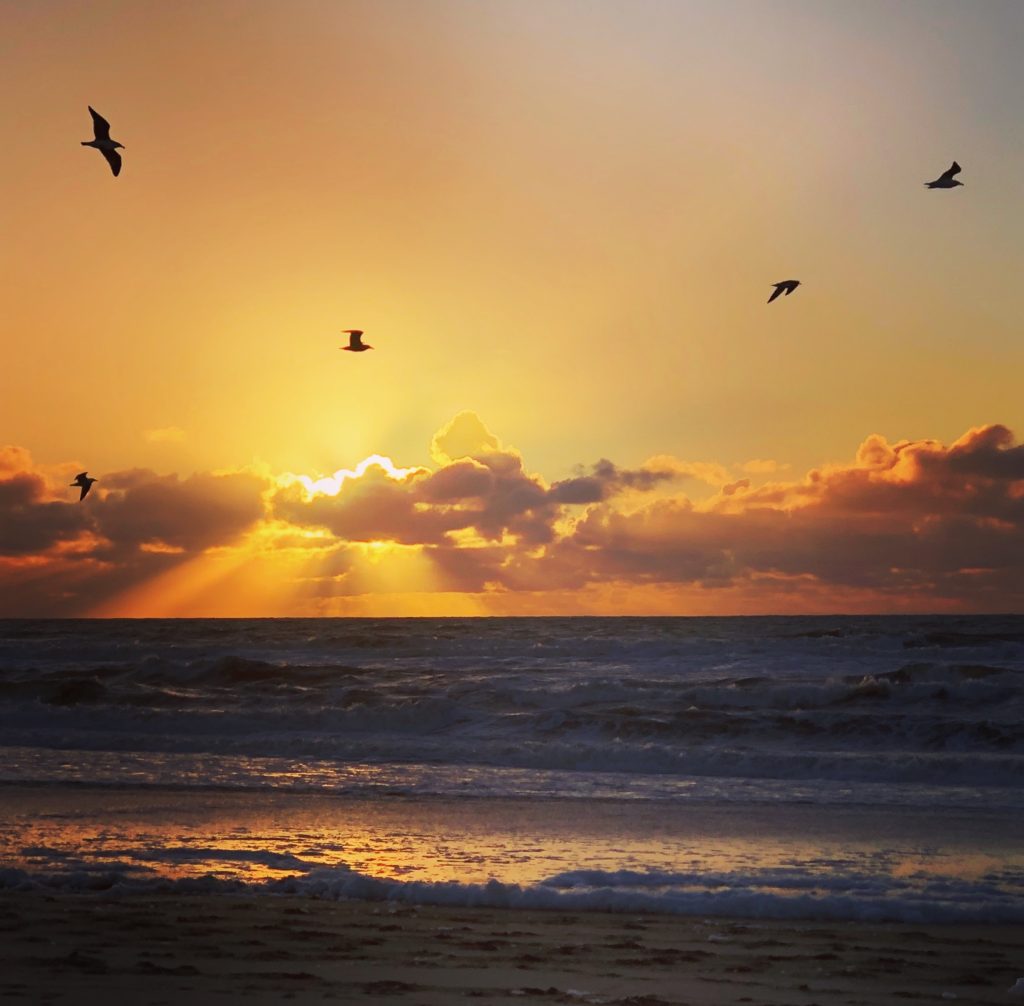
A sunset is the sun’s fiery kiss to the night–Crystal Woods. 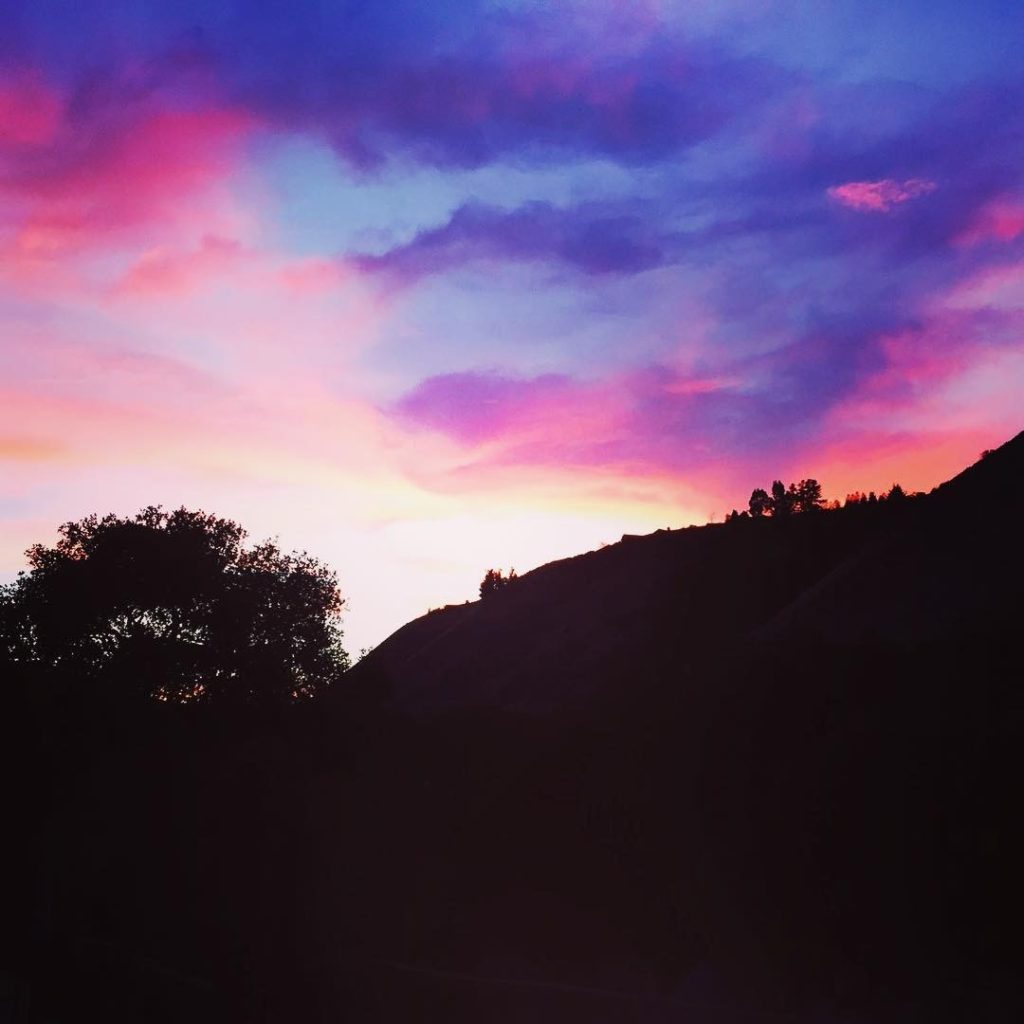
Soon it got dusk, a grapy dusk, a purple dusk over tangerine groves and long melon fields; the sun the color of pressed grapes, slashed with burgundy red, the fields the color of love and Spanish mysteries–Jack Kerouac. 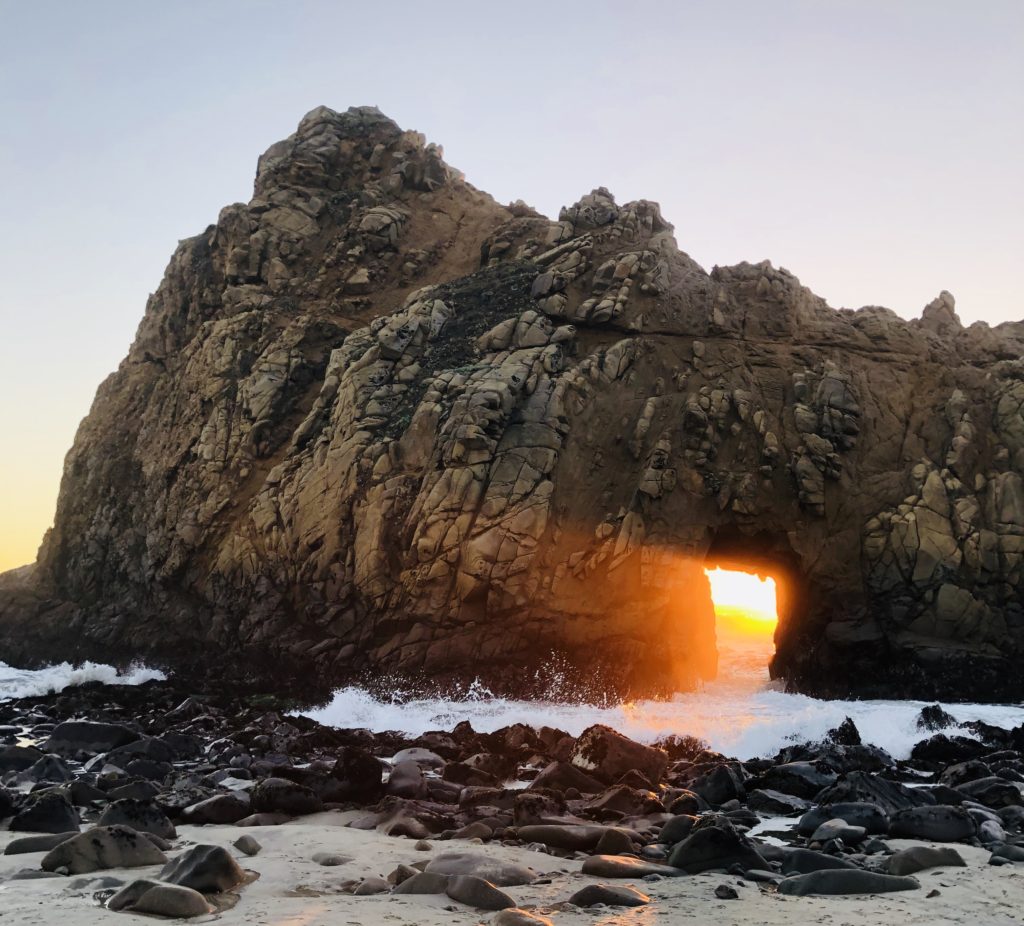
The sky broke like an egg into full sunset and the water caught fire–Pamela Hansford Johnson. 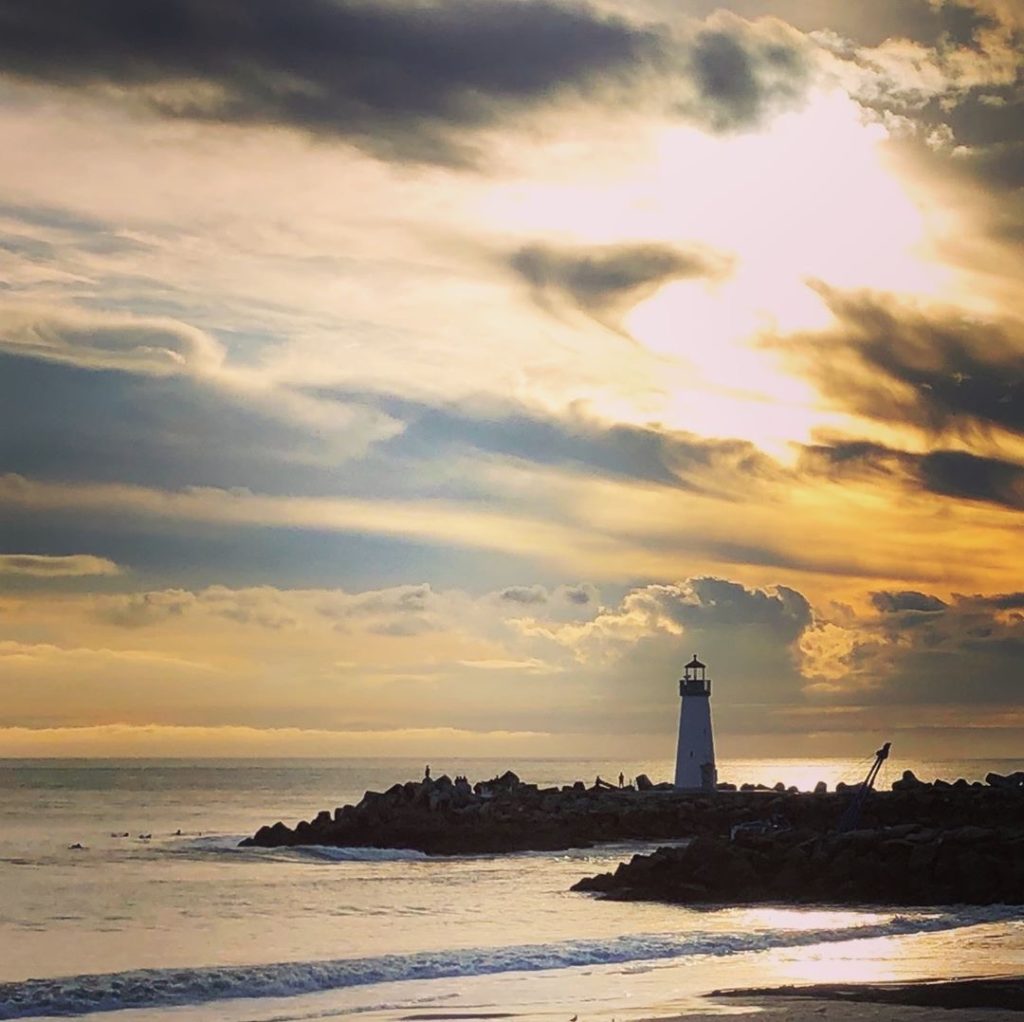
Clouds come floating into my life, no longer to carry rain or usher storm, but to add color to my sunset sky–Rabindranath Tagore. 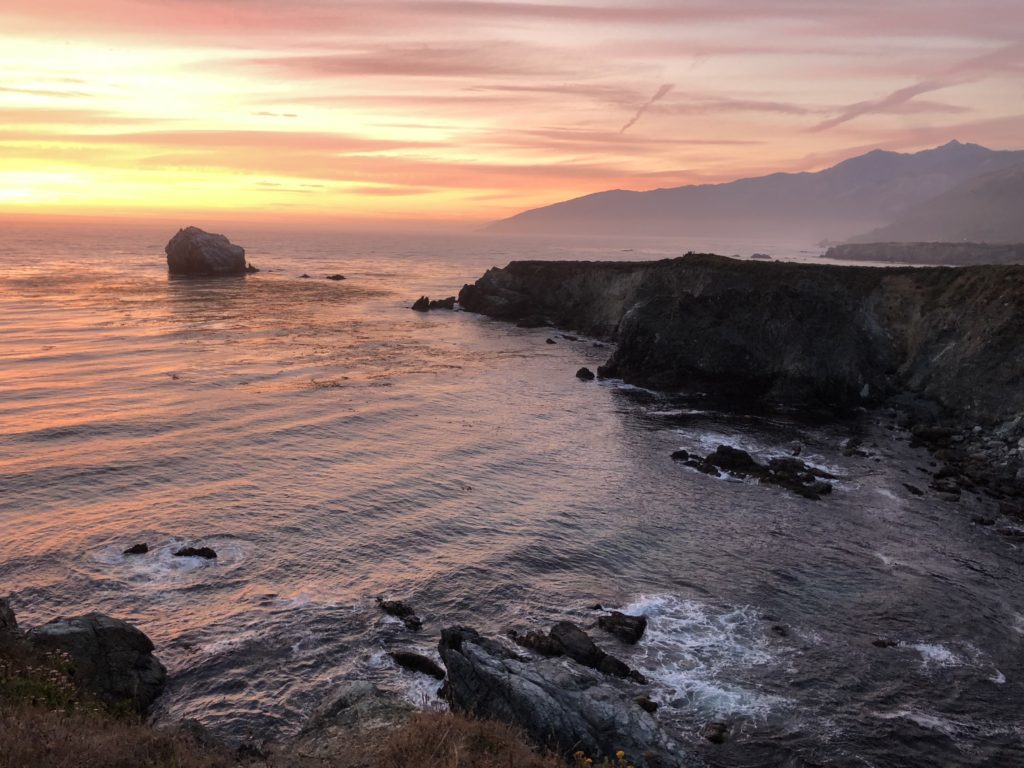
Twilight fell: The sky turned to a light, dusky purple littered with tiny silver stars–J.K. Rowling. 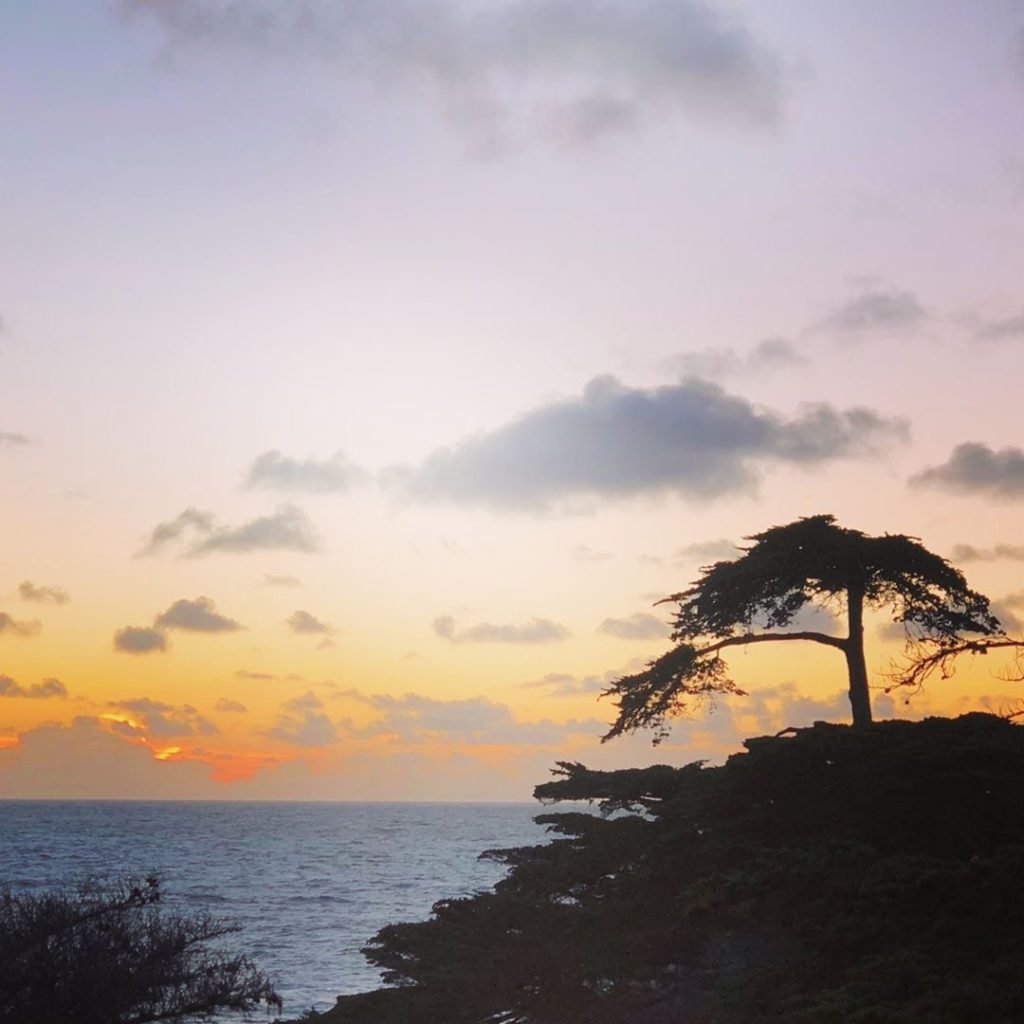
Softly the evening came with the sunset–Henry Wadsworth Longfellow. 
What can you see on the horizon, why do the white gulls call? Across the sea, a pale moon rises. The ships have come to carry you home. And all will turn to silver glass, a light on the water. Grey ships pass into the west–Annie Lennox. 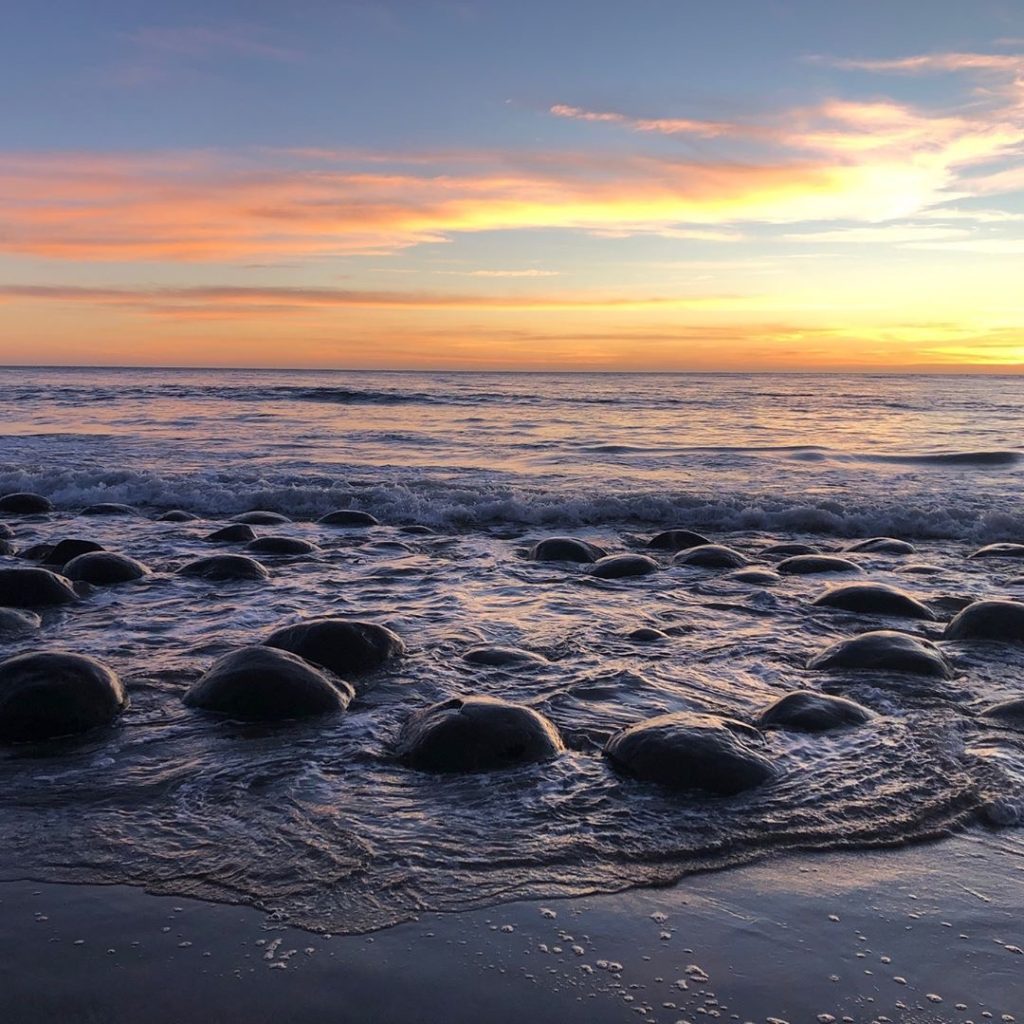
When the sun has set, no candle can replace it–George R. R. Martin. 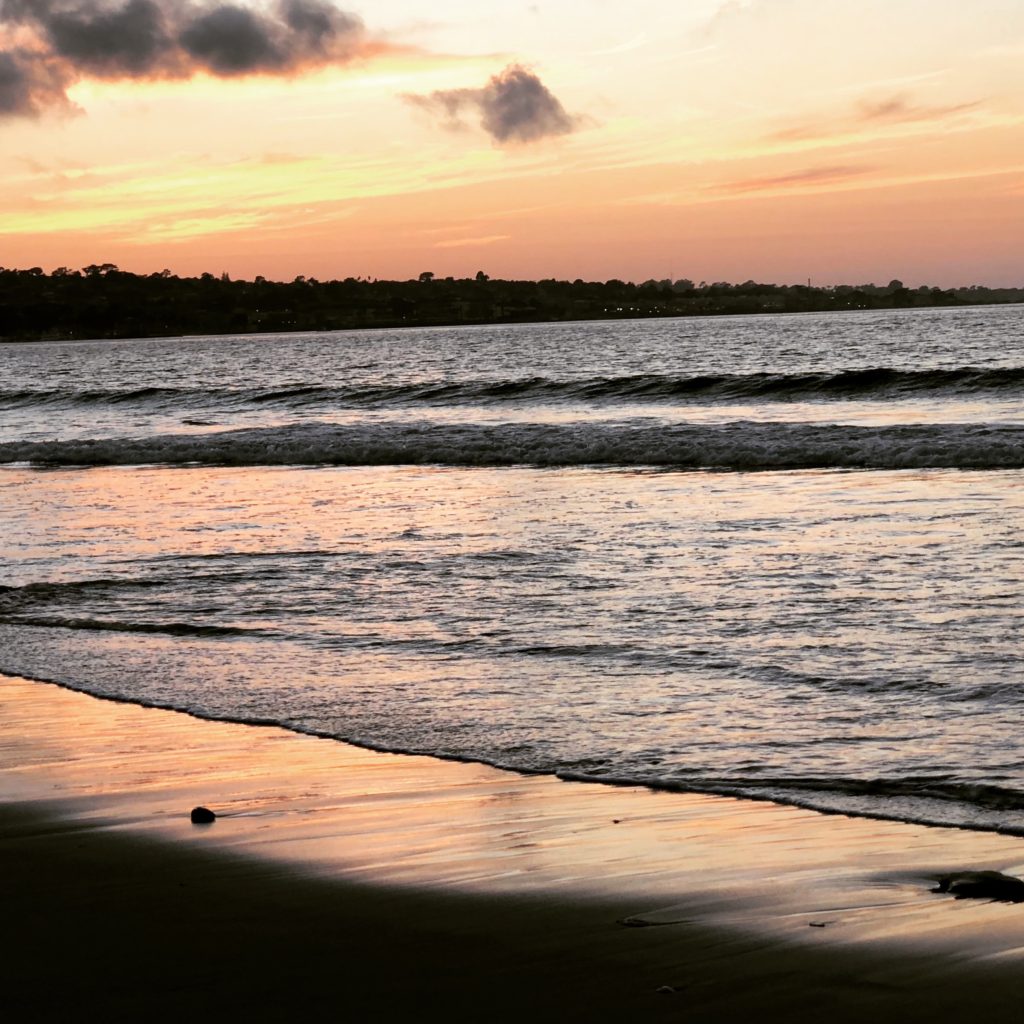
Sunsets, like childhood, are viewed with wonder not just because they are beautiful but because they are fleeting–Richard Paul Evans. 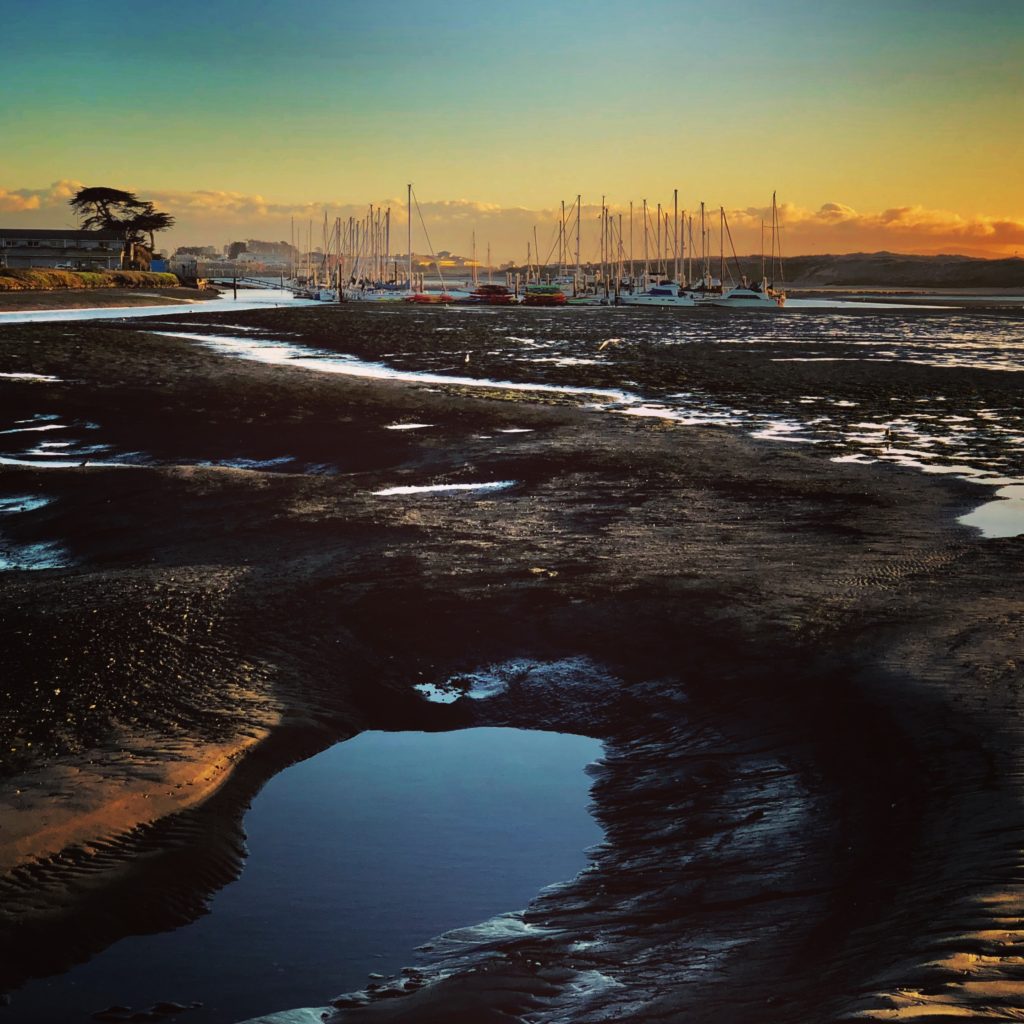
It is almost impossible to watch a sunset and not dream–Bern Williams. 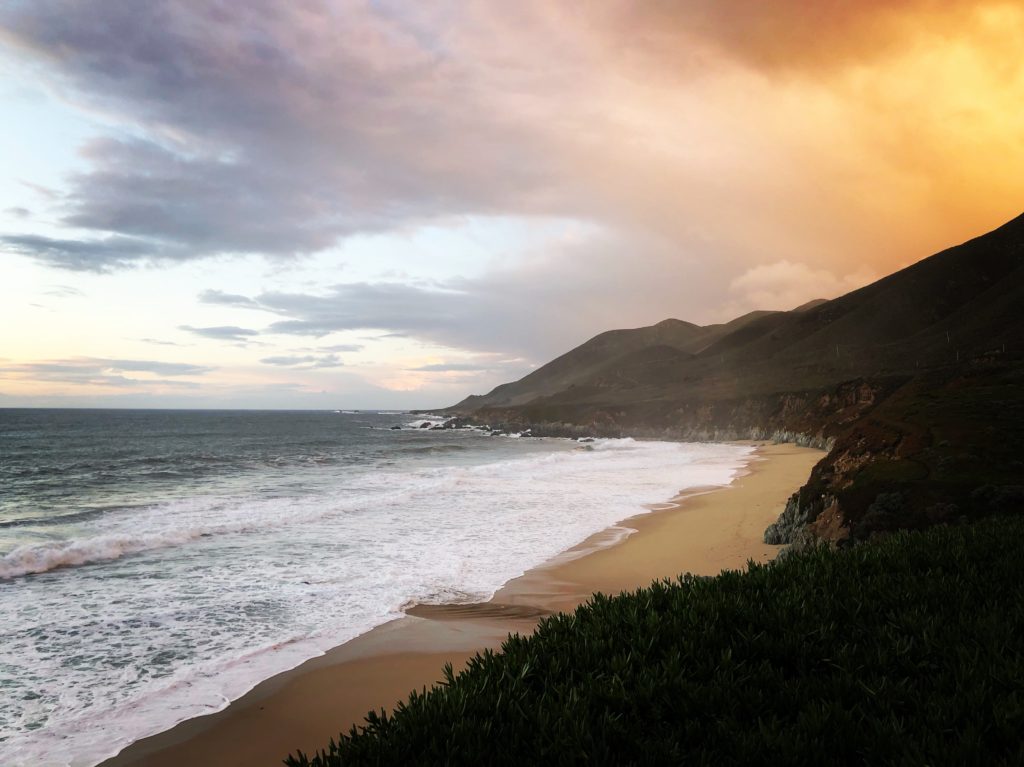
Know what you want to do, hold the thought firmly, and do every day what should be done, and every sunset will see you that much nearer to your goal–Elbert Hubbard. 
No matter where you are in the world, I hope you are able to enjoy your sunsets. Thank you for visiting my blog. Wishing you peace, love, happiness, and beautiful vistas!
-
Corral de Tierra, The Pastures of Heaven
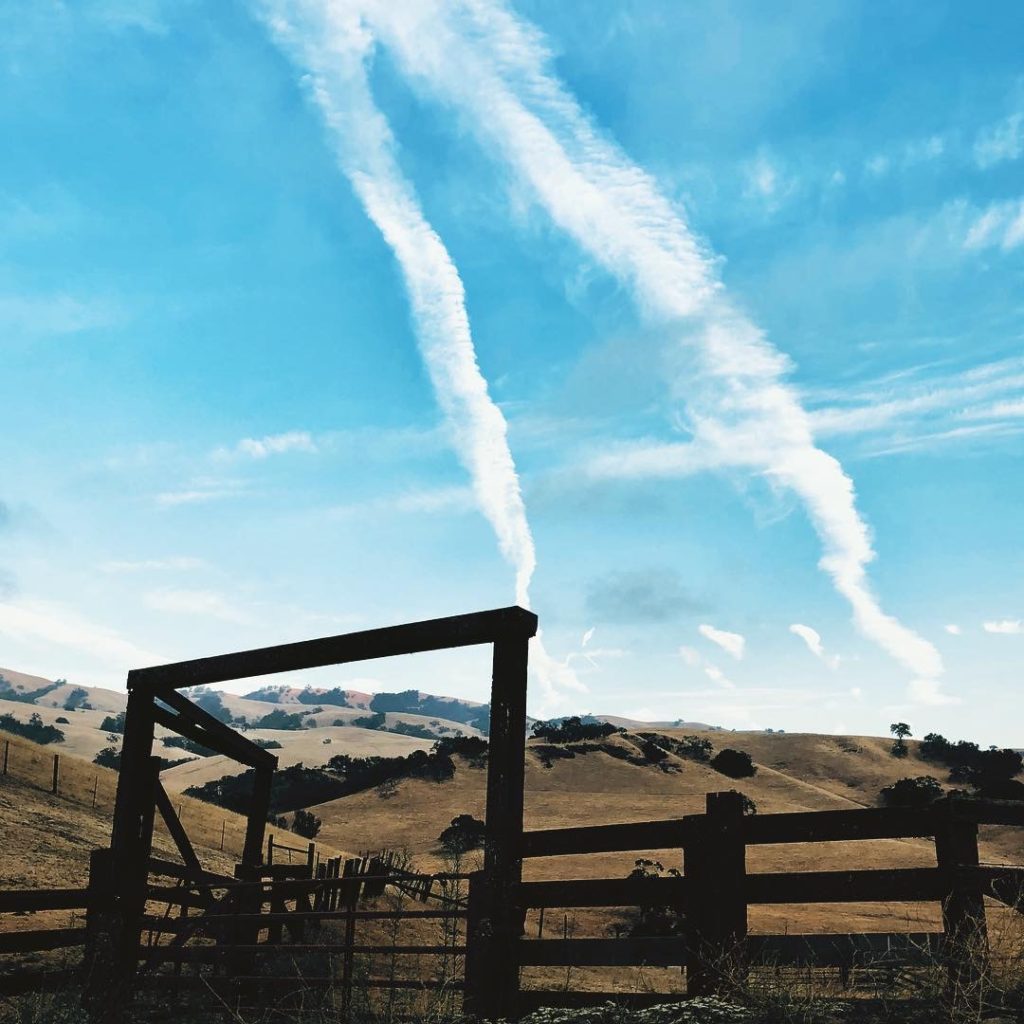 Heaven is under our feet as well as over our heads–Henry David Thoreau.
Heaven is under our feet as well as over our heads–Henry David Thoreau.Corral de Tierra is a pastoral area of verdant meadows and remote canyons situated midway between Salinas and Monterey. It is notable for the innumerable California live oaks that flourish here. It is considered to be in the “sun belt” so that even if it is foggy and gray in nearby Salinas and Monterey, the sun is usually shining here. The area comprises many small communities including Serra Village, Toro Park Estates, San Benancio, The Villas, The Meadows, Markham Estates, Corral de Tierra Country Club, Laureles Grade, Chamisal, Vista Dorada, and Laguna Seca Estates, as well as myriad vineyards, farms and ranches. It is named for the Mexican rancheros who used a canyon in the upper valley during the 1700s to hold their cattle. Corral de Tierra literally means “fence of earth”.
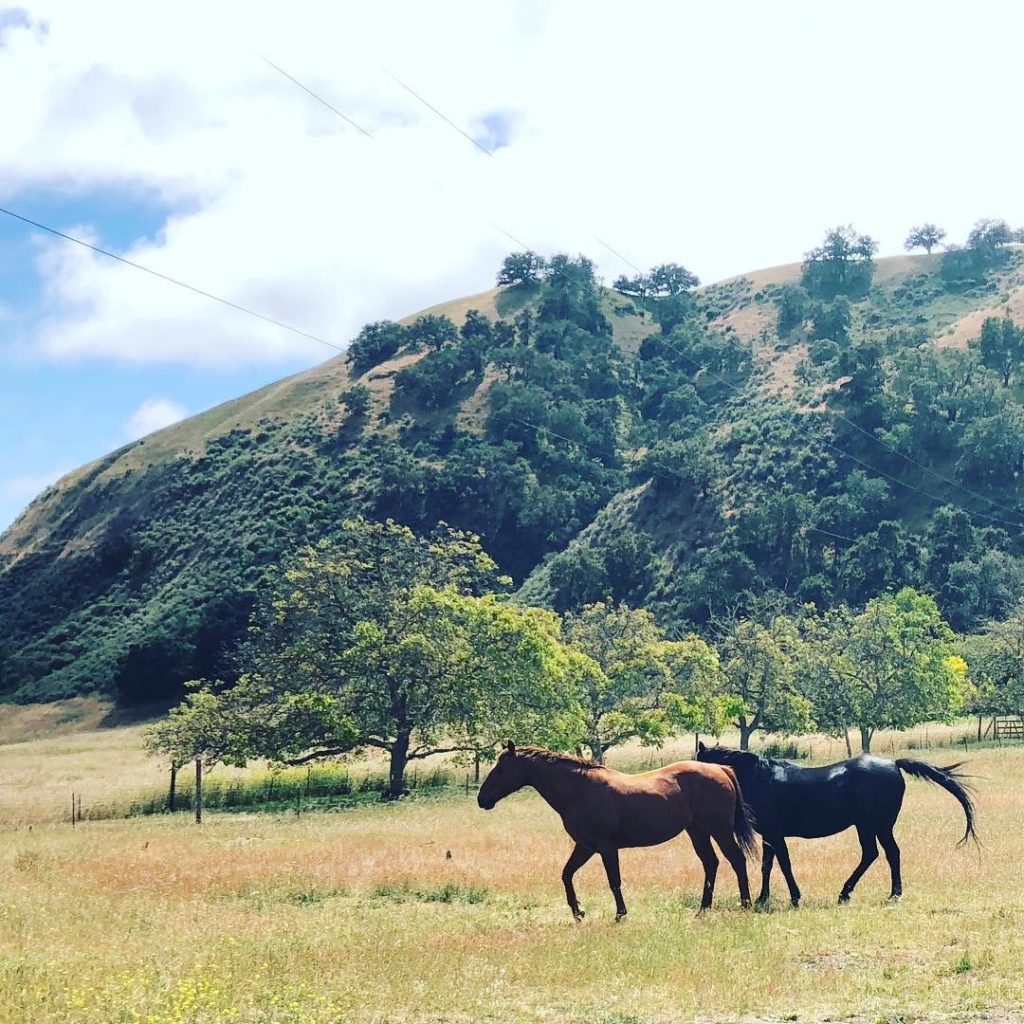
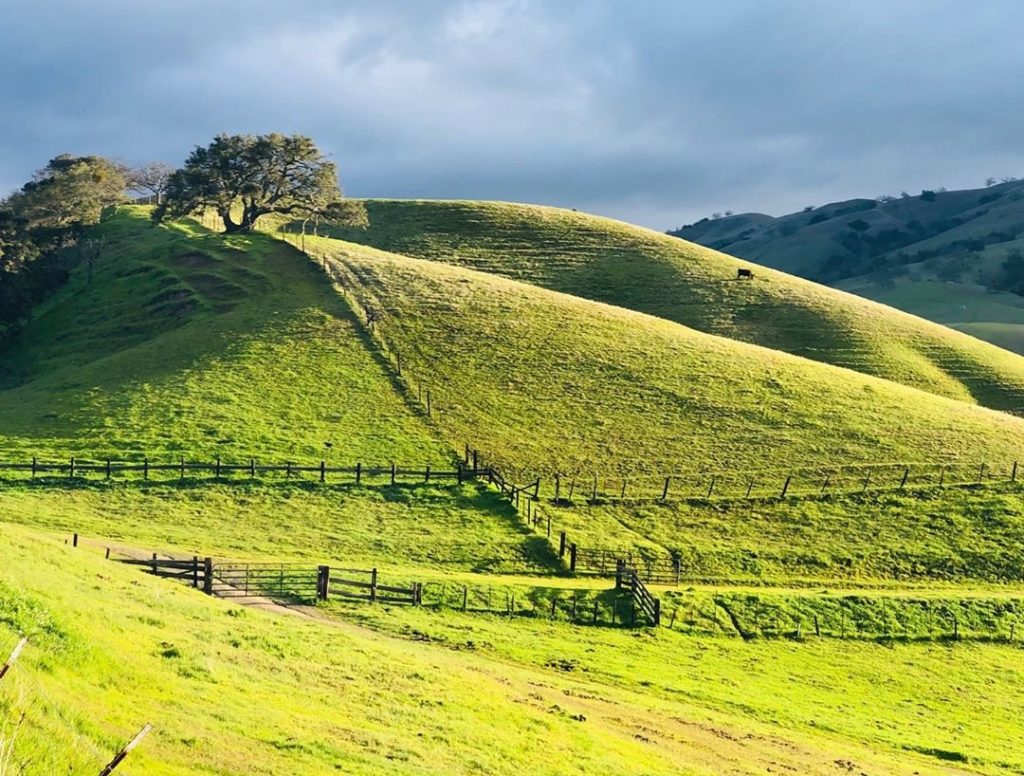
Underwood Canyon in Corral de Tierra is breathtaking in the spring. Corral de Tierra’s transformation from a vast wilderness to a settlement begins with a love story. In 1836, Governor Nicolas Gutierrez granted over four thousand acres in the area to Francisco Figueroa in exchange for the hand of his daughter Guadalupe. I picture the story unfolding with Guadalupe, leaning out of the window of a beautiful Spanish style home. She is wearing an exquisite lace dress, has beautiful flowing black hair, and is holding a crimson rose that the dark and handsome Nicolas has given her just before he rides off into the sunset on a meticulously groomed stallion. We will never truly know how this love story played out. Following the Mexican-American War, California was ceded to the United States and homesteads began to spring up as a series of new owners bought and sold land here.
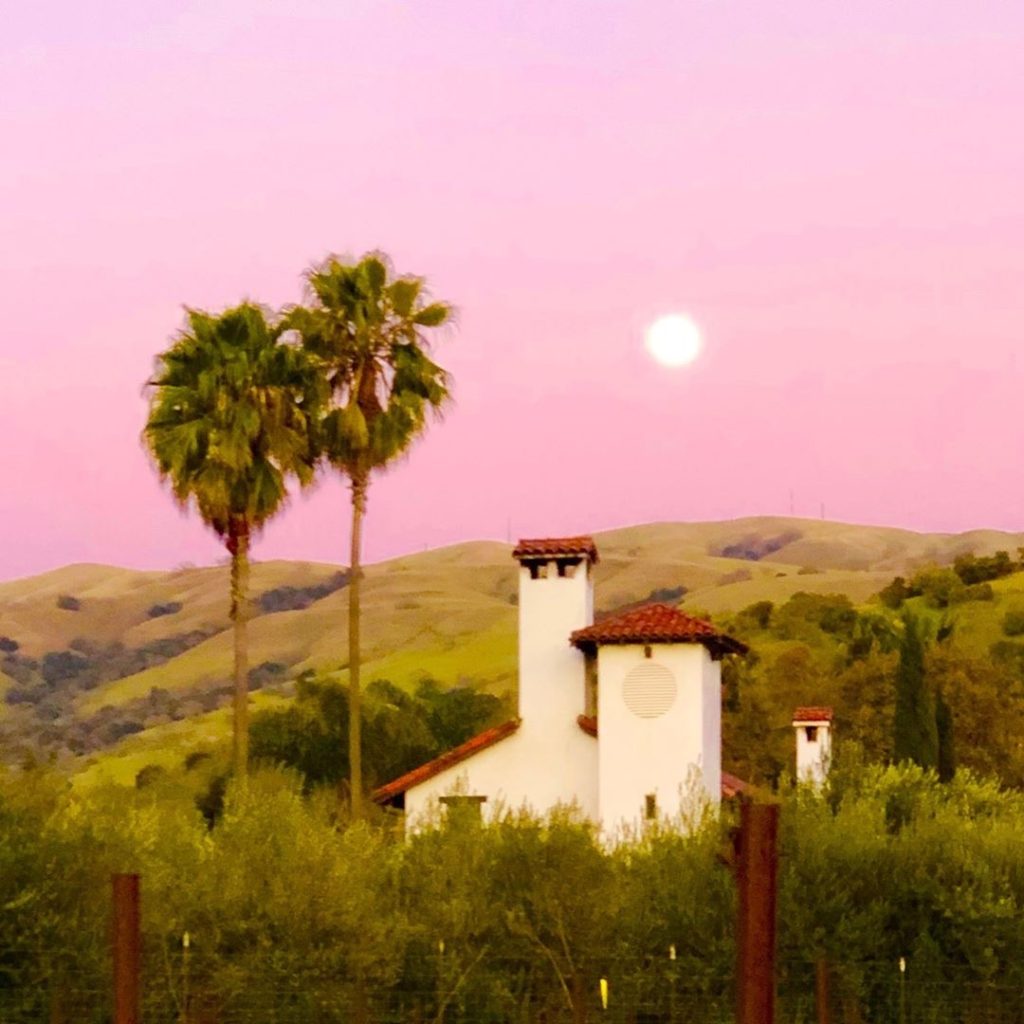
The De Tierra Vineyard & Winery is located in Corral de Tierra. Growth was slow in the area until the 1950s, when the Corral de Tierra Country Club was built. In the 1960s, the Chamisal Country Club was established. There were originally two schools in the area: Washington Elementary School at mid-valley was established in 1873 and is still going strong today. Lincoln School, built in 1887, was located at the intersection of Underwood and Corral de Tierra, but no longer exists. San Benancio Middle School is a newer school located at the corner of San Benancio and Hwy 68. There are two churches in the area: Good Shepherd Episcopal Church and Cypress Community Church. The clubs, schools, and churches here provide a sense of connection and an avenue for social events within the community.
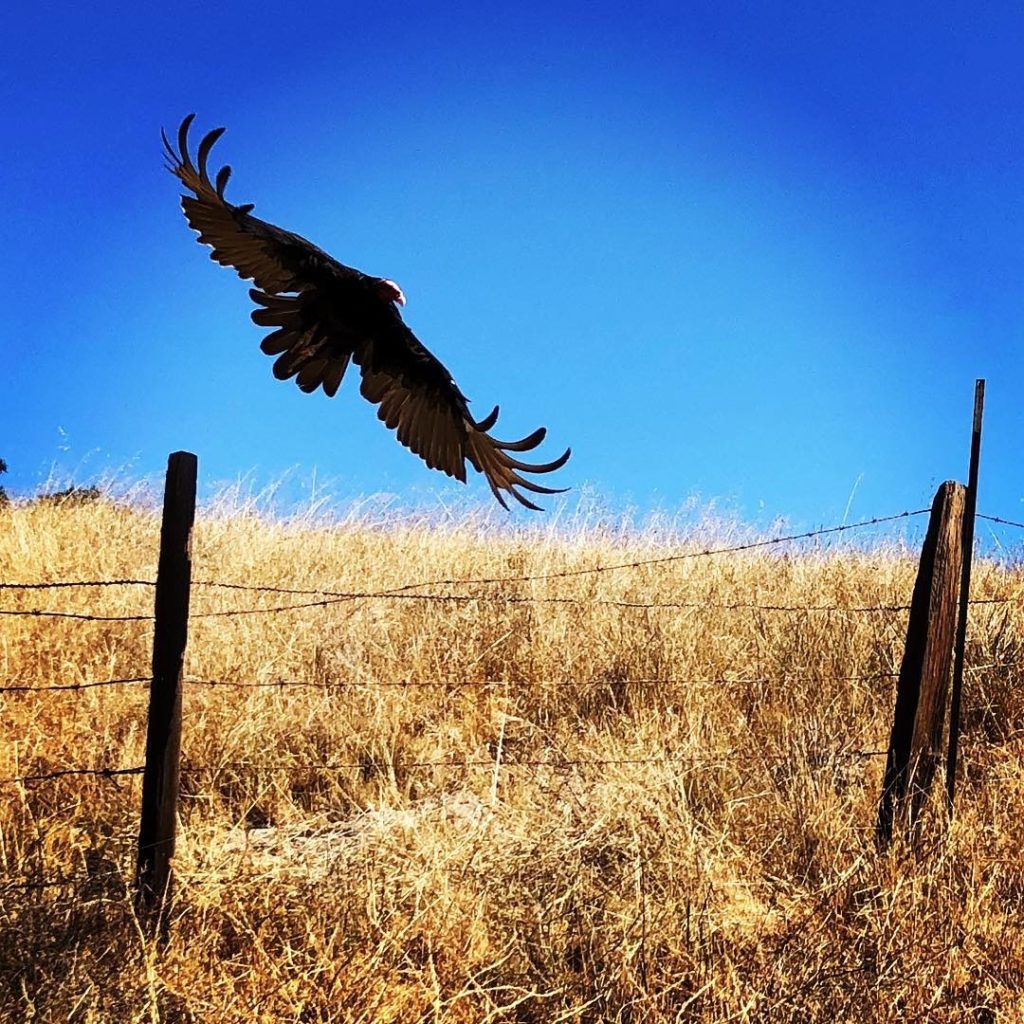
Turkey vultures, bobcats, magpies, deer, wild turkeys and quail are frequently seen here. John Steinbeck, the famous author, often stayed with his maternal aunt in Corral de Tierra. She lived on a farm near the present day Markham Ranch. Steinbeck was not only a prolific writer, but also an avid reader, and loved the tales of King Arthur and the Knights of the Round Table. He enjoyed exploring the rugged sandstone bluffs of Castle Rock in Corral de Tierra, near his aunt’s farm, and imagined the area as the citadel of Camelot. While the public cannot access Castle Rock, located within Markham Ranch, it is clearly visible from Corral de Tierra Road.
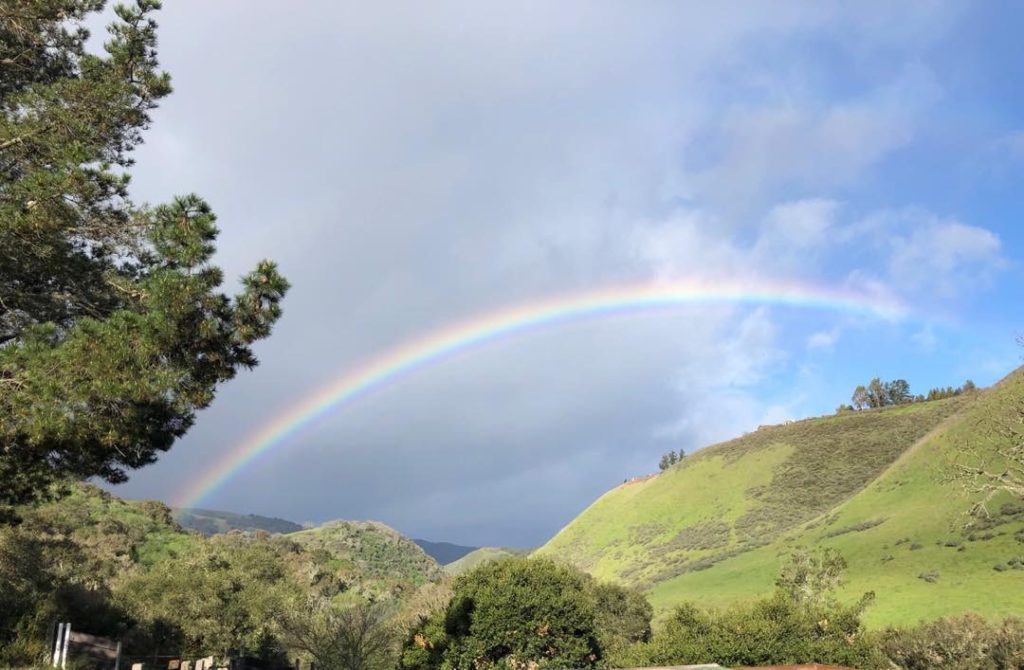
A rainbow seen from my farm. Steinbeck’s experiences in Corral de Tierra were the catalyst for a collection of stories presented in his novel “The Pastures of Heaven.” In this novel, a Spanish Corporal discovers the area while chasing runaway Native American slaves that have abandoned their work building a Catholic mission. When he arrives at a ridge and sees a breathtaking view of the fertile valley below, he is smitten and christens the valley “Las Pasturas del Cielo” or “The Pastures of Heaven.” From that time on, he plans on returning to the beautiful valley, but his hopes are never realized. Steinbeck’s work was based on a real Spanish Corporal who did, in fact, discover the area in 1776 while pursuing Rumsen Indians who had escaped from the San Carlos Mission in Carmel.
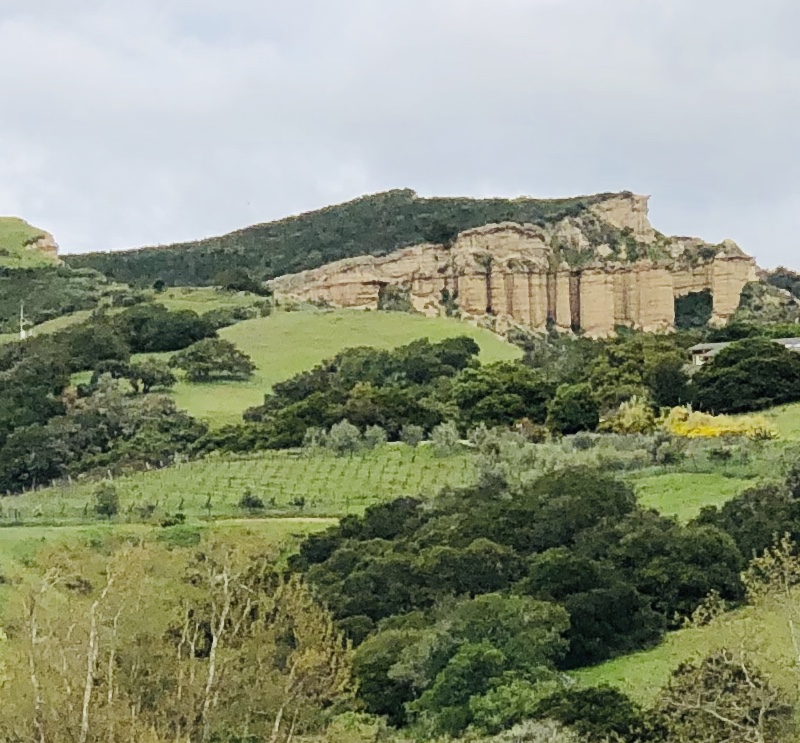
Castle Rock, Steinbeck’s childhood playground, is located in Markham Ranch. Fun activities in Corral de Tierra include biking, hiking, swimming, golfing, tennis, horseback riding, and birdwatching. It is also a great place for astronomers: with a clear night sky far away from city lights, nearly every constellation is visible. Corral de Tierra is also a popular area for plein air artists. Plein air began in France in the 1890s as a movement seeking to create art in outdoor settings in natural light and weather conditions.
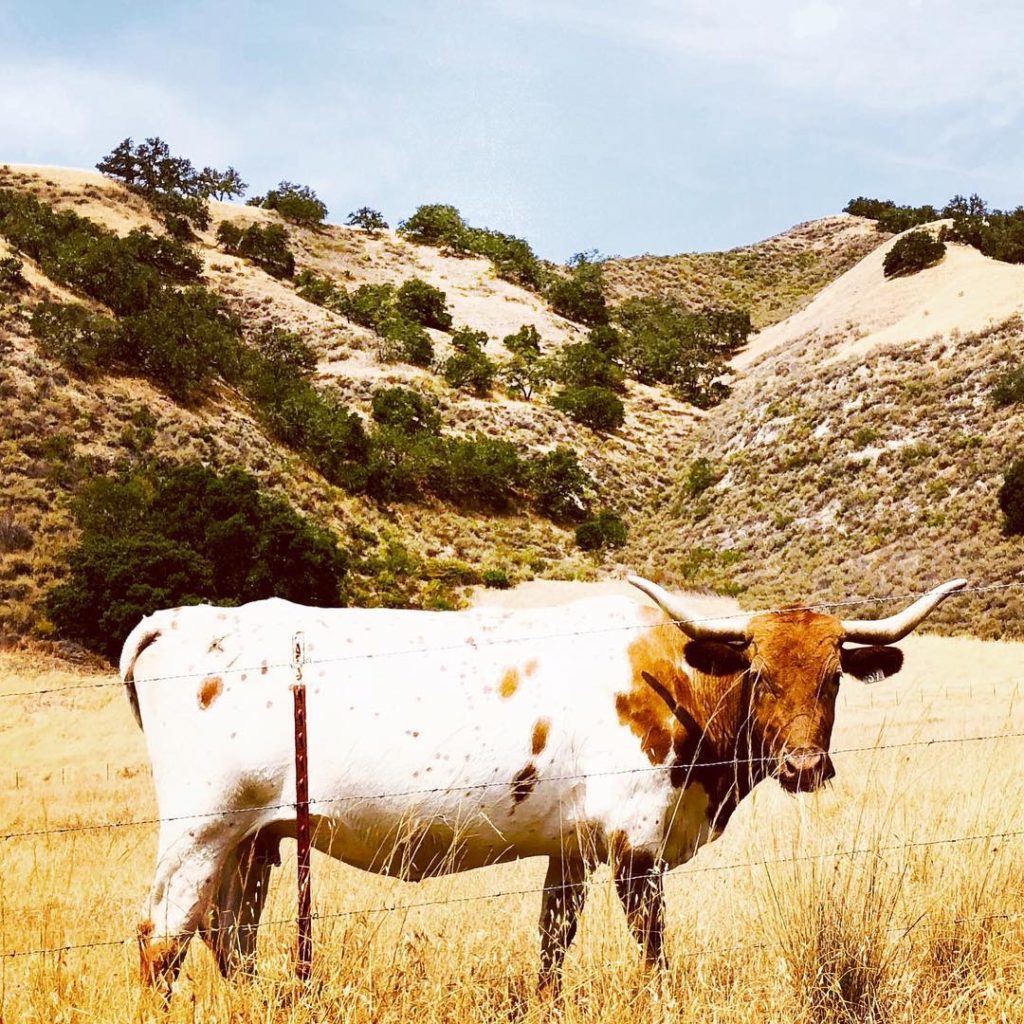
Living near so many ranches means seeing cattle and horses every day! What I love most about living in Corral de Tierra is the peacefulness and the sense of community. There is a genuine and authentic calmness and simplicity here. Neighbors are like family. I adore mine and am eternally grateful for them. No matter what happens in life, or where I end up, I will always thank my lucky stars for the beautiful and amazing experience I’ve had in the Pastures of Heaven.
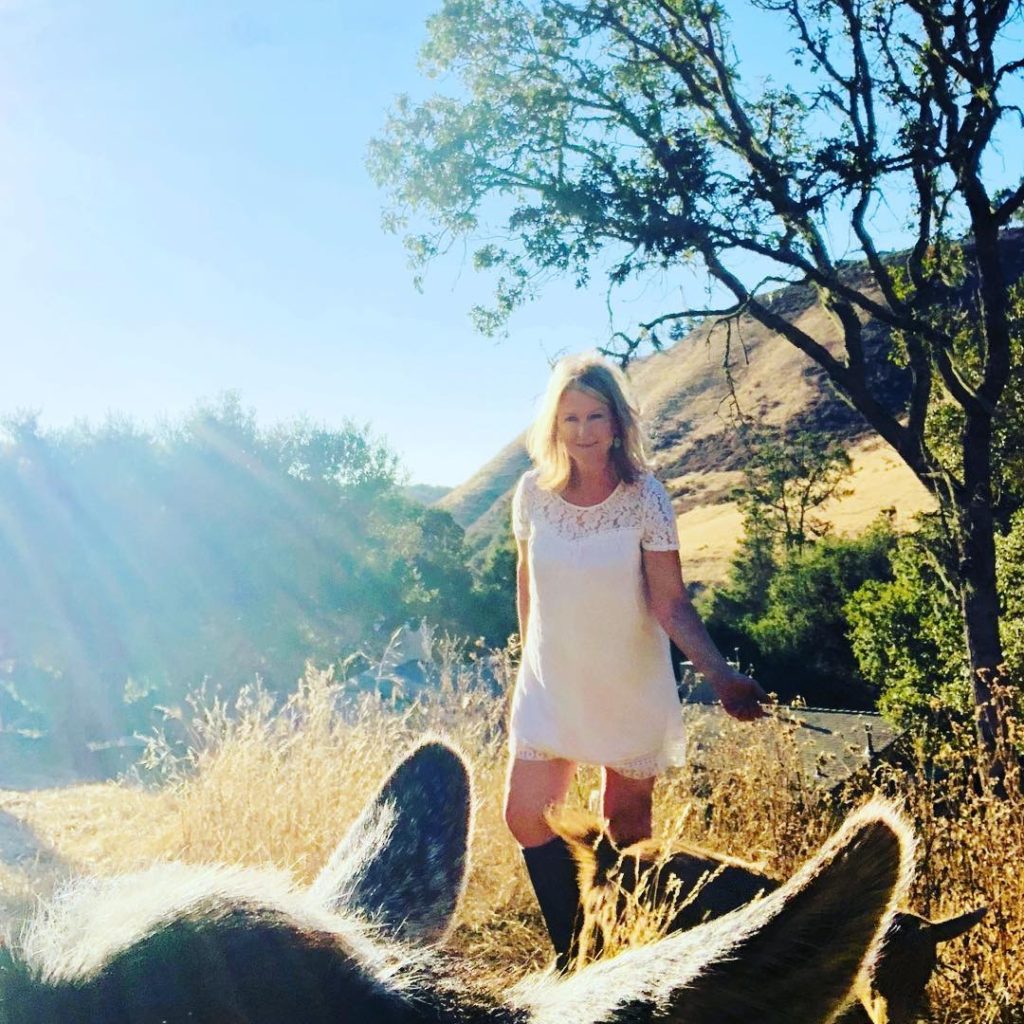
Goats, chickens and sunshine = happiness. Thank you for visiting my blog! Wishing you peace, love, happiness & beautiful vistas!
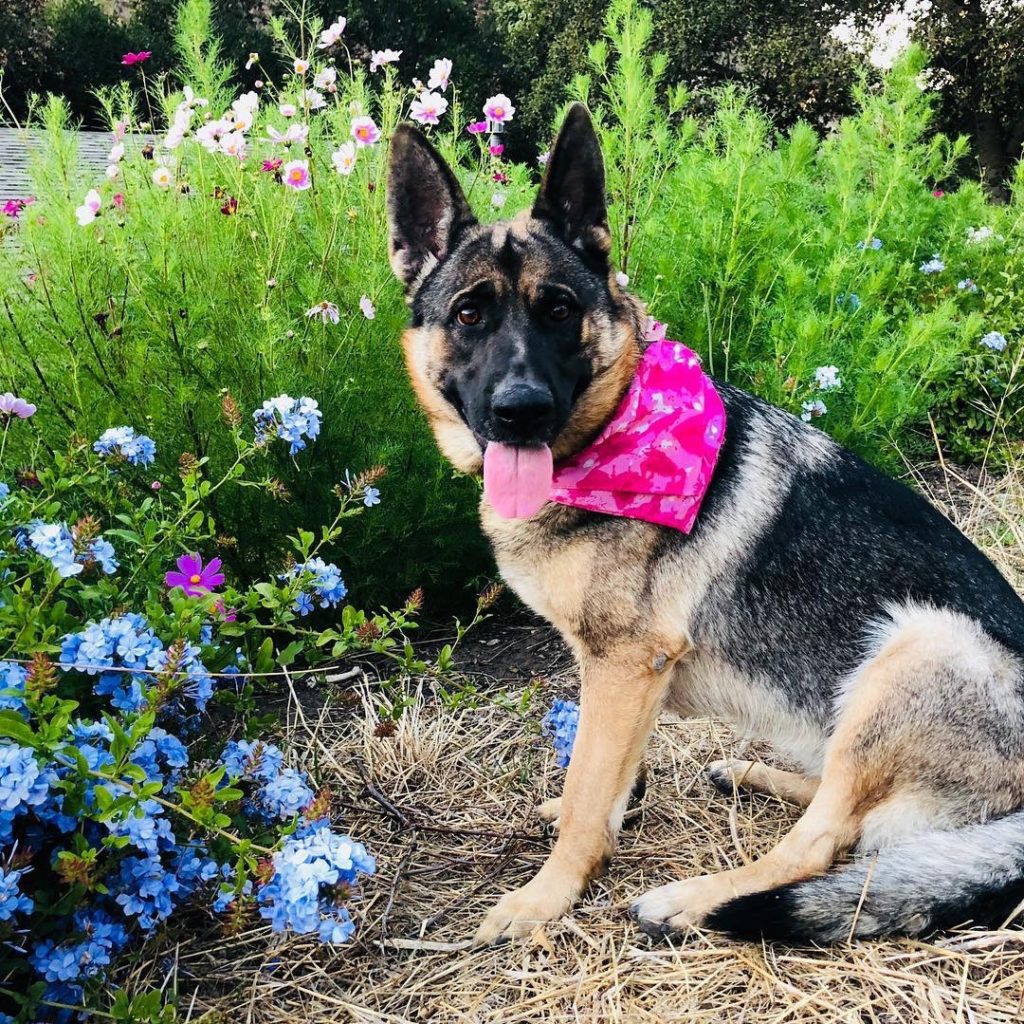
Sasha loves life in Corral de Tierra. -
Seven Best Places for Wildflowers in Monterey County!
It’s spring in Monterey County, and that means wildflowers! As both a hiker and a flower lover, I am always excited this time of year to watch for the profusion of blooms. You can see nearly every color in the rainbow along the coastline, in the canyons, and everywhere in between. Here is a list of some of my favorite places to see wildflowers in my neck of the woods.1. Corral de Tierra. Located midway between Salinas and Monterey, Corral de Tierra is well known for its pastoral beauty. In the spring it features many beautiful wildflowers. There is an abundance of wildflowers along both Corral de Tierra and San Benancio roads as well as at my farm here, including morning glories, shooting stars, jonquils, and lupines. Corral de Tierra is an amazing place to hike and bike and admire these gorgeous blooms.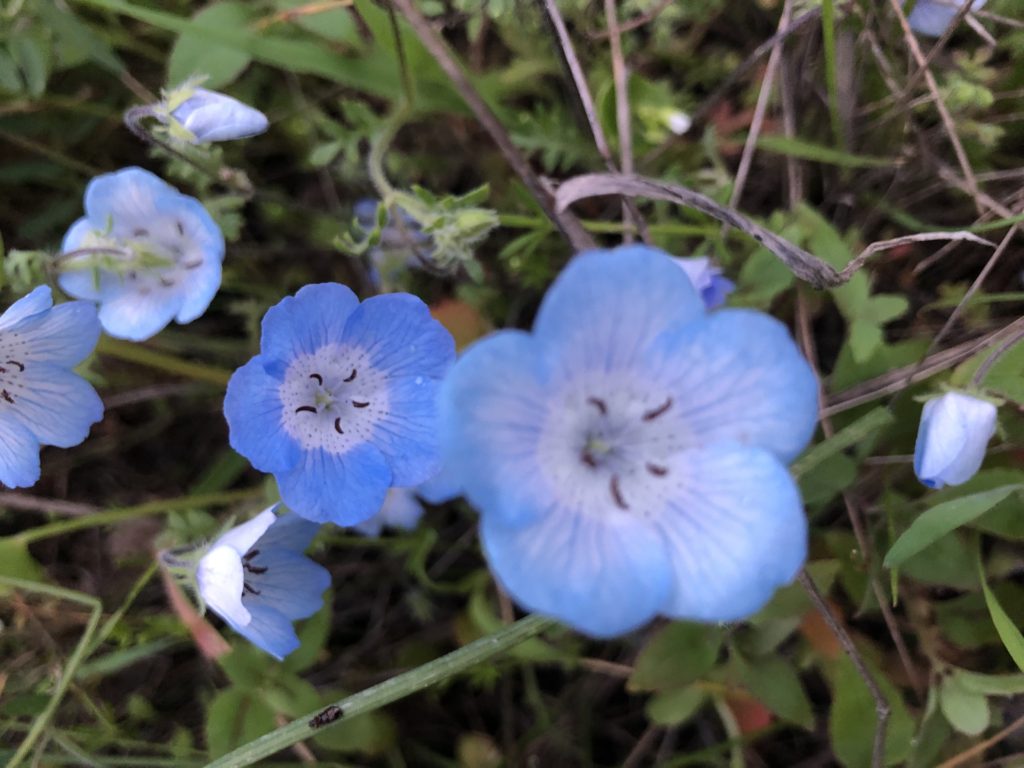
These heavenly blue flowers cover the hillside along the dirt road I live on. 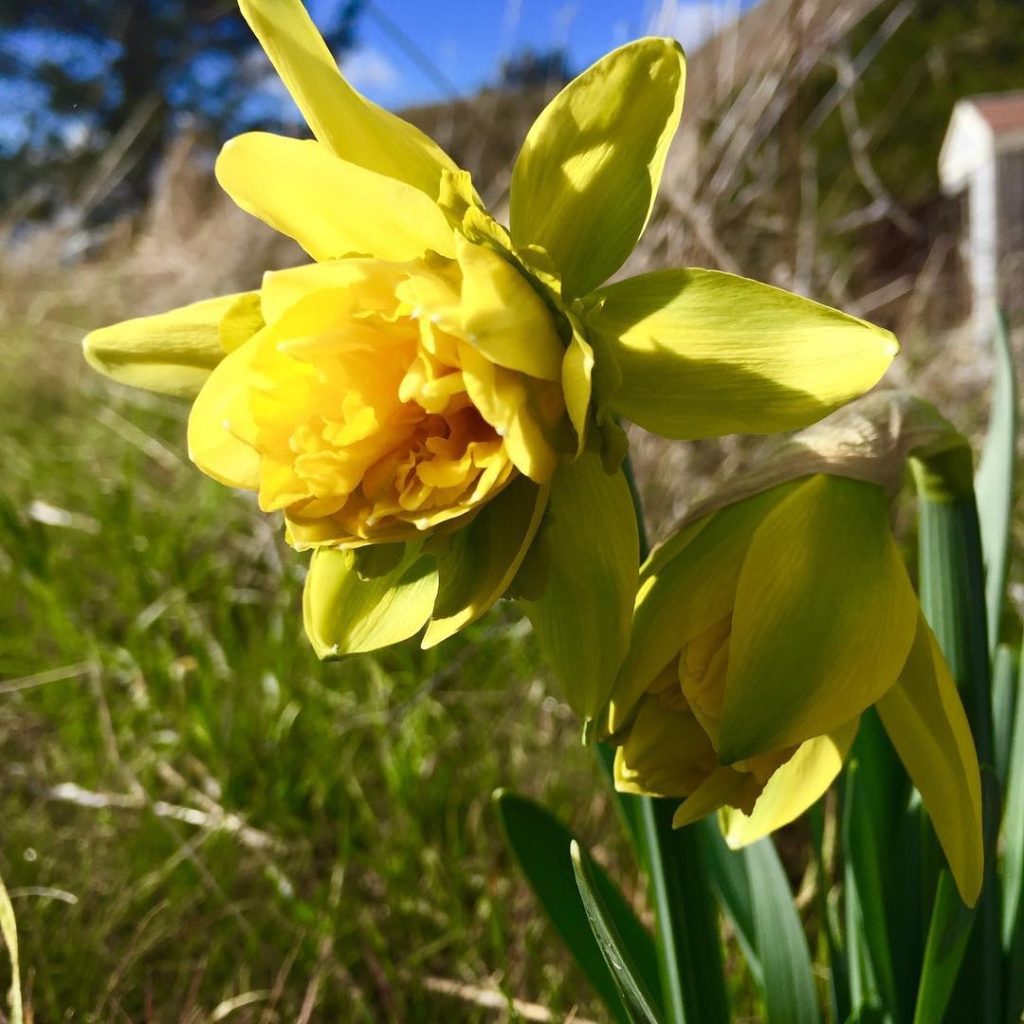
Wild jonquils appear at my farm every spring. “I will be the gladdest thing under the sun! I will touch a hundred flowers and not pick one.”–Edna St. Vincent Milay
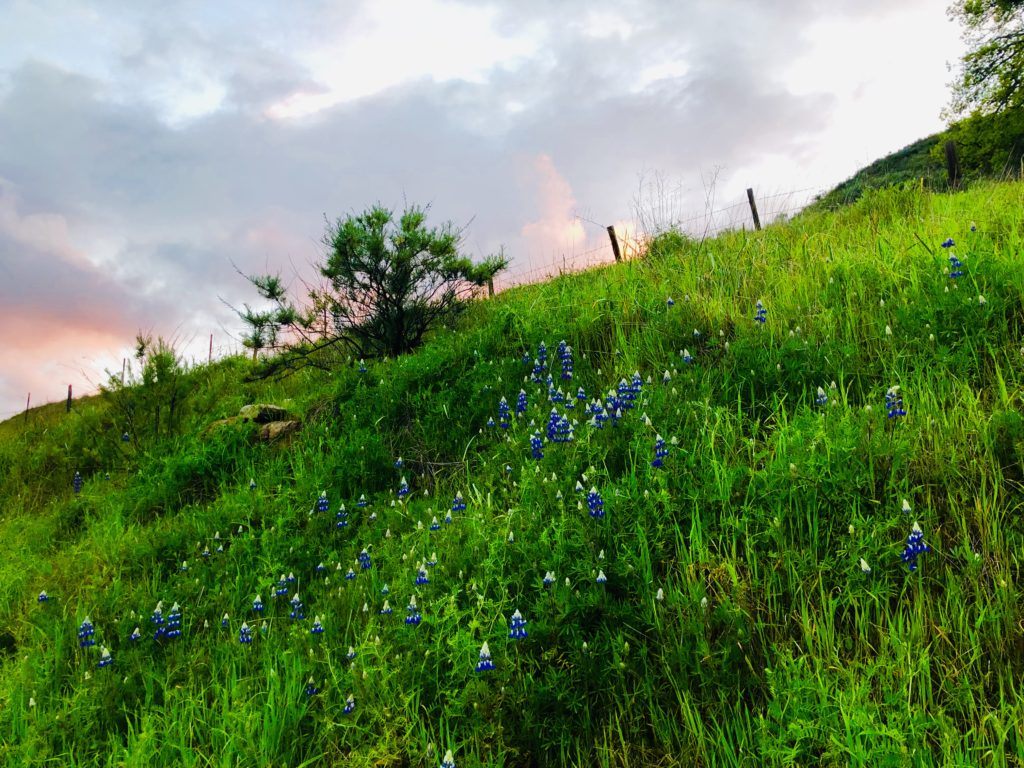
Wild lupines proliferate on the hillsides in Corral de Tierra. 2. Garrapata State Park, located off Hwy 1, is a heavenly place in springtime. You will not only be treated to amazing views of the coastline, but you will also see colorful wildflowers. During my recent visit, I spotted wild irises, poppies, and Indian paintbrush.
“To see a world in a grain of sand and a heaven in a wildflower” –William Blake.
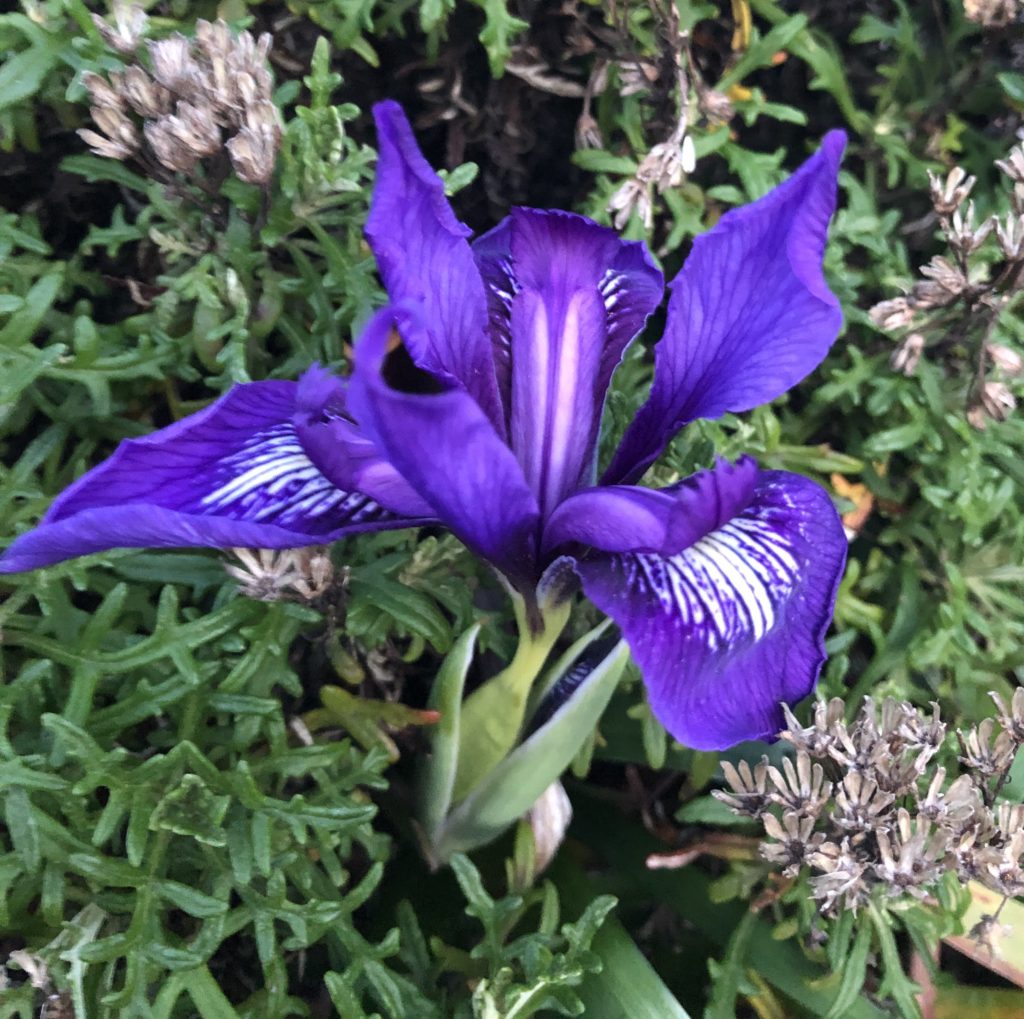
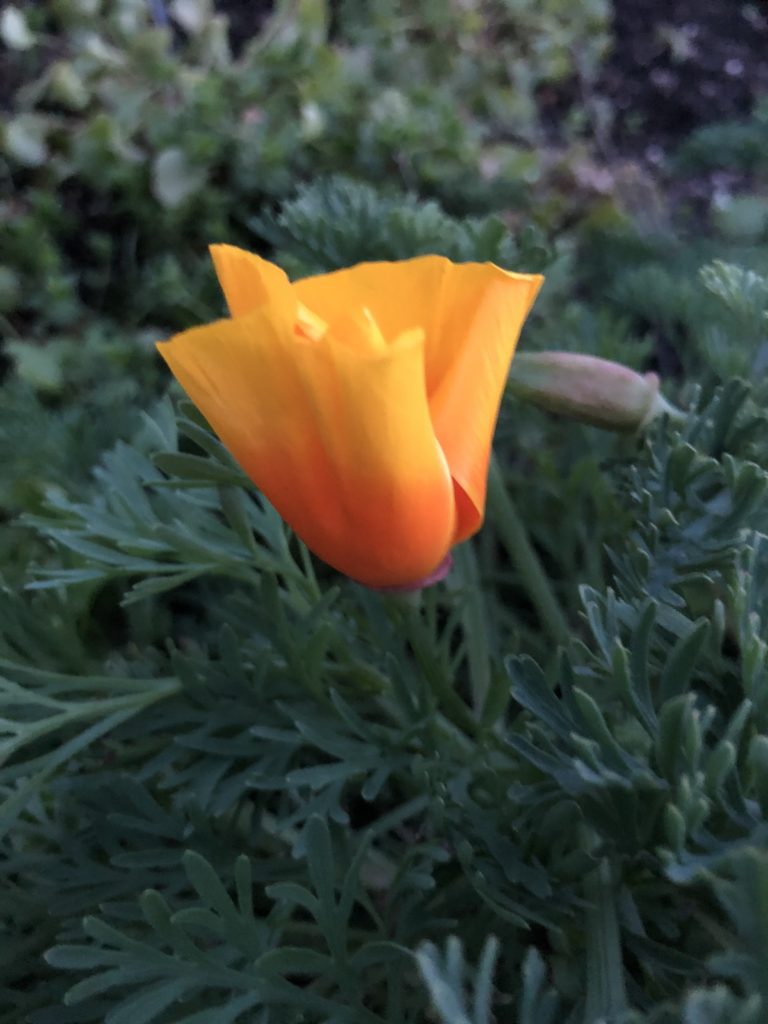 3. Further south, follow meandering coastal trails to Calla Lily Valley. This magical place will soothe your senses. Calla lilies surround Doud Creek as it rushes into the ocean near a secluded beach.
3. Further south, follow meandering coastal trails to Calla Lily Valley. This magical place will soothe your senses. Calla lilies surround Doud Creek as it rushes into the ocean near a secluded beach.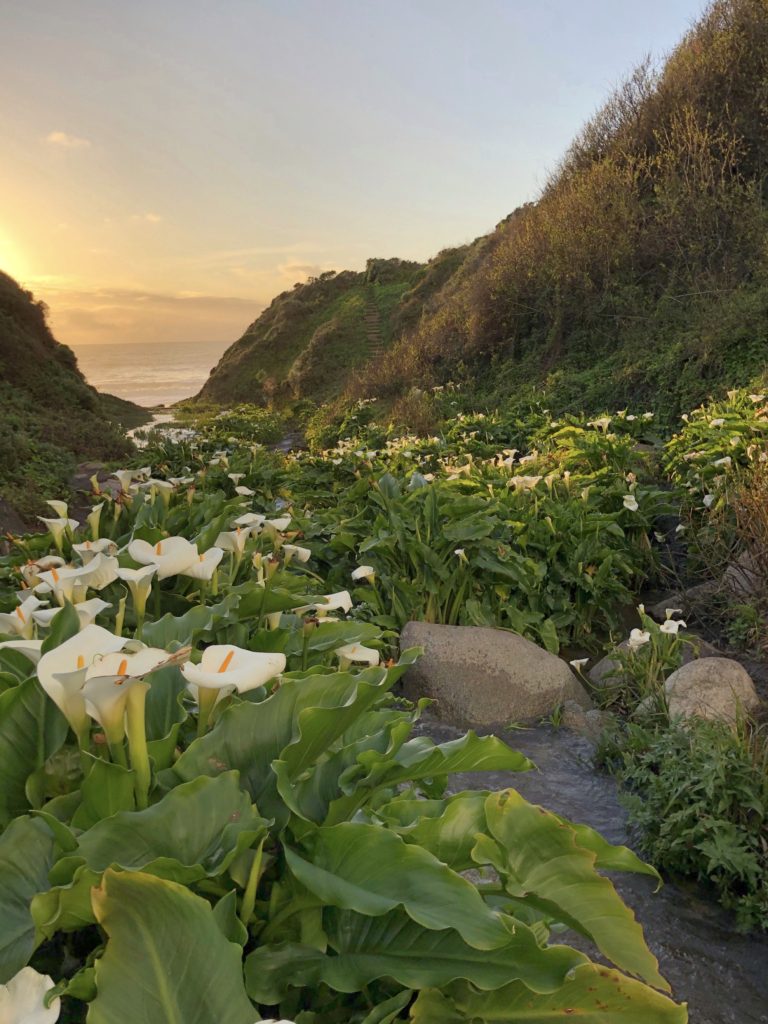 “I think I like wildflowers best,” I explain. “They just grow wherever they want. No one has to plant them. And then their seed blows in the wind and they find a new place to grow”–Rebecca Donovan
“I think I like wildflowers best,” I explain. “They just grow wherever they want. No one has to plant them. And then their seed blows in the wind and they find a new place to grow”–Rebecca Donovan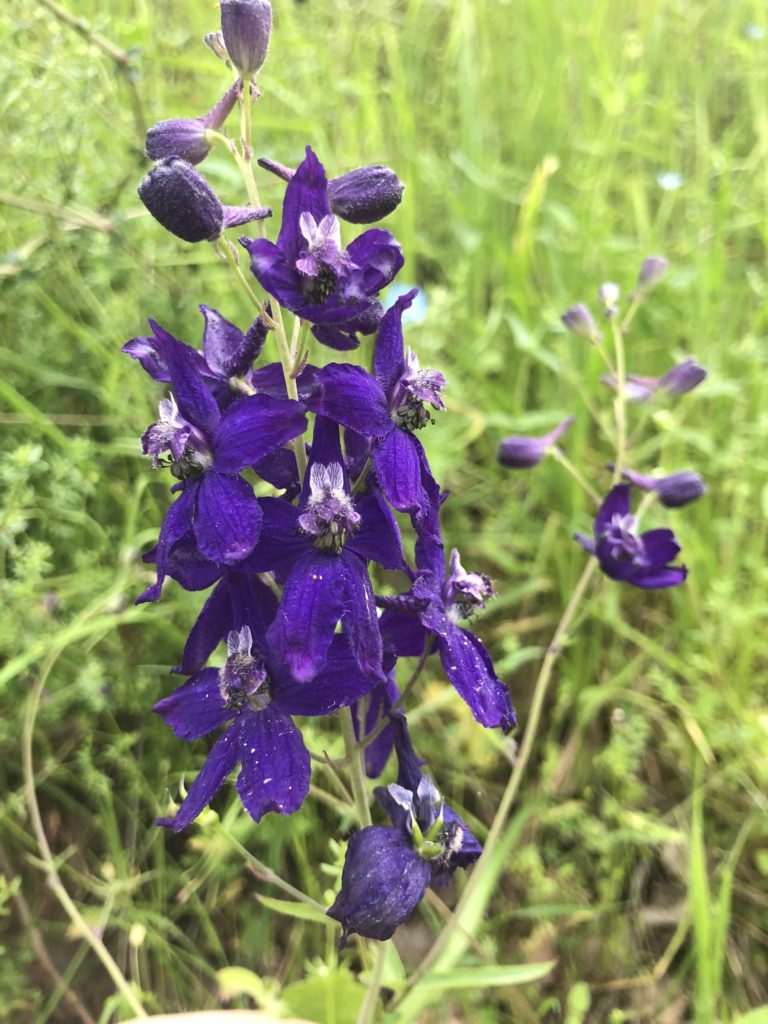 4. Asilomar Beach in Pacific Grove. Beginning in late March and early April, a profusion of ice plants form a brilliant carpet along the coastline here. If you want a truly amazing experience, start at Lovers Point and continue along the Monterey Bay Recreational Trail towards Pebble Beach. You will not be disappointed!
4. Asilomar Beach in Pacific Grove. Beginning in late March and early April, a profusion of ice plants form a brilliant carpet along the coastline here. If you want a truly amazing experience, start at Lovers Point and continue along the Monterey Bay Recreational Trail towards Pebble Beach. You will not be disappointed!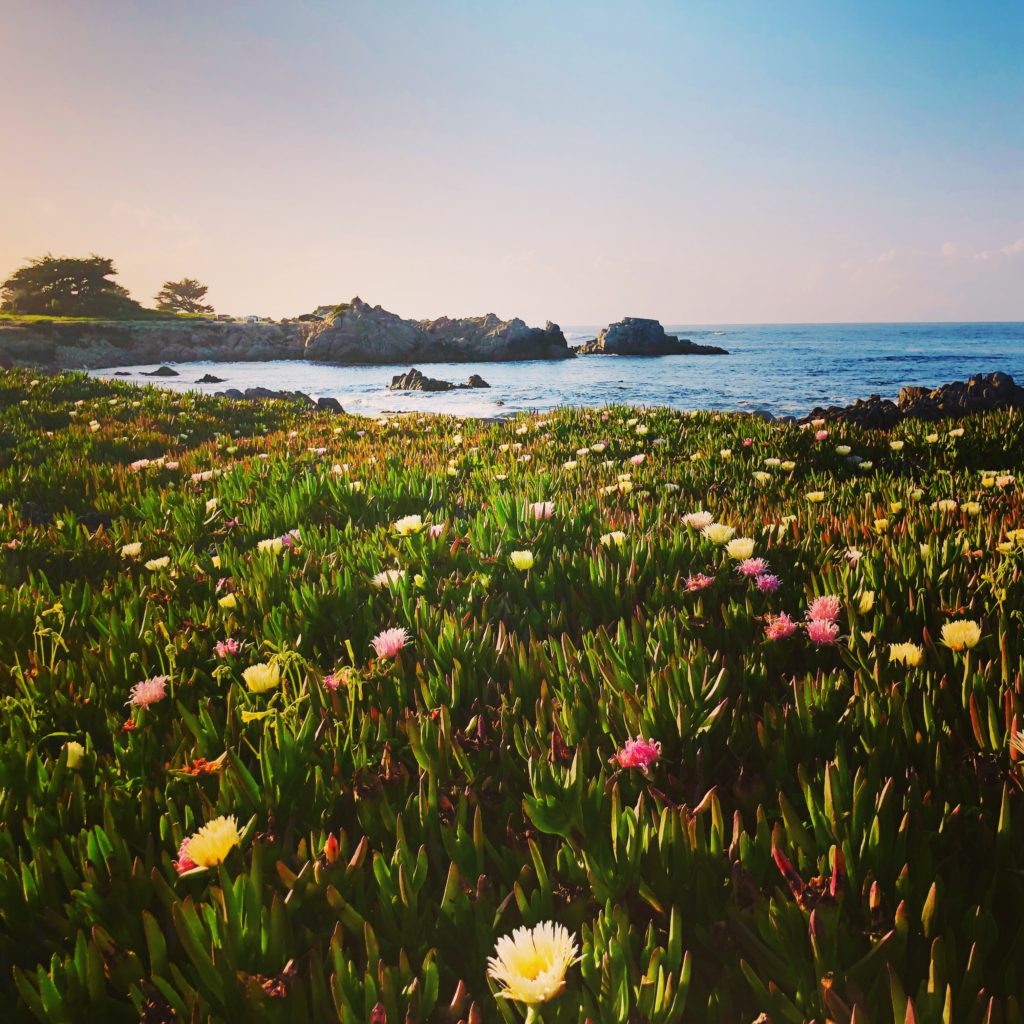 5. Garland Ranch Park. The plethora of trails here offer hikes for every level from beginner to advanced. I have done many different hikes here and I can tell you that spring is a magical time to view wildflowers here. The Terrace trail, in the Garzas Canyon section of the park, is especially popular for monkey flowers and shooting stars.
5. Garland Ranch Park. The plethora of trails here offer hikes for every level from beginner to advanced. I have done many different hikes here and I can tell you that spring is a magical time to view wildflowers here. The Terrace trail, in the Garzas Canyon section of the park, is especially popular for monkey flowers and shooting stars.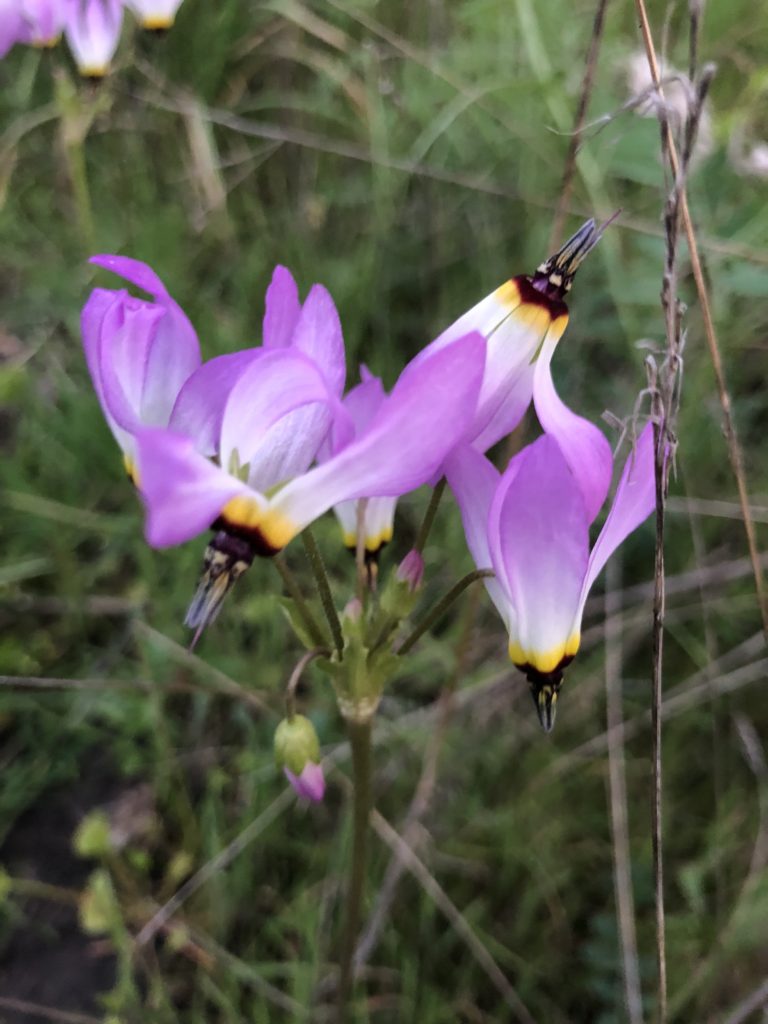
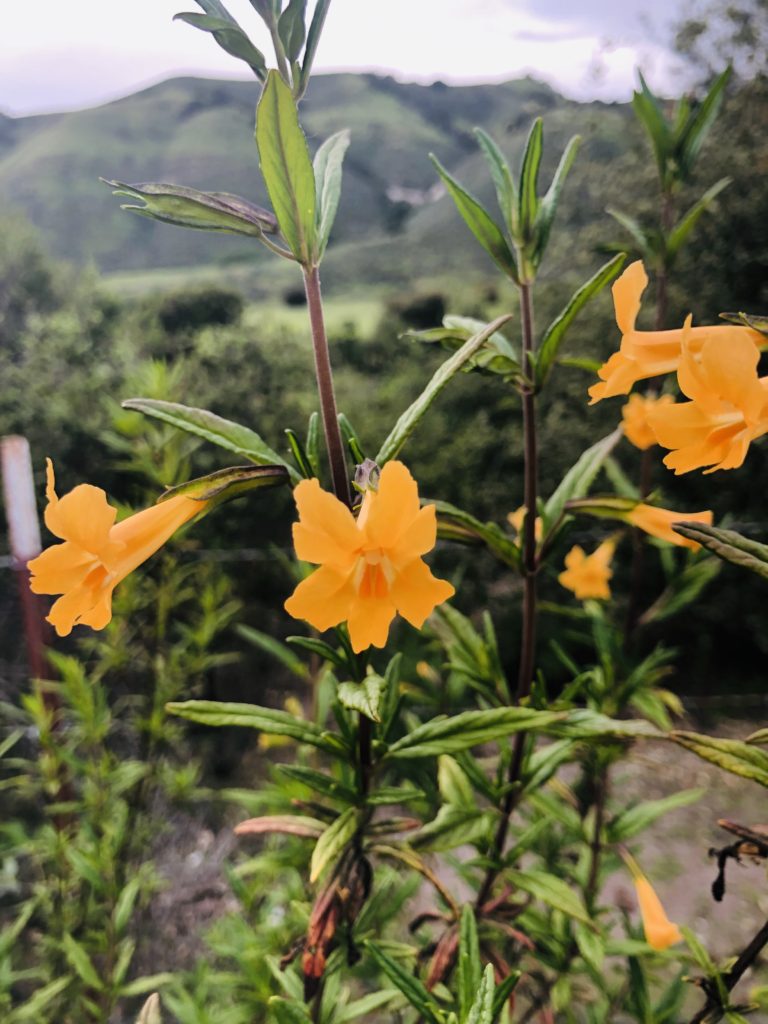
6. Fort Ord Park. This 7200-acre park is home to over 35 species of rare plants and animals, including a myriad of wildflowers. Hiking and biking are popular activities on the trails winding through this popular place, and it is a sure bet that you will spot some lovely wildflowers this time of year.

7. Toro Park. Located near Corral de Tierra off Highway 68, this park is also a great place to find wildflowers. Hiking and biking trails abound, offering spectacular vistas of the countryside and beautiful views of the emerging wildflowers.
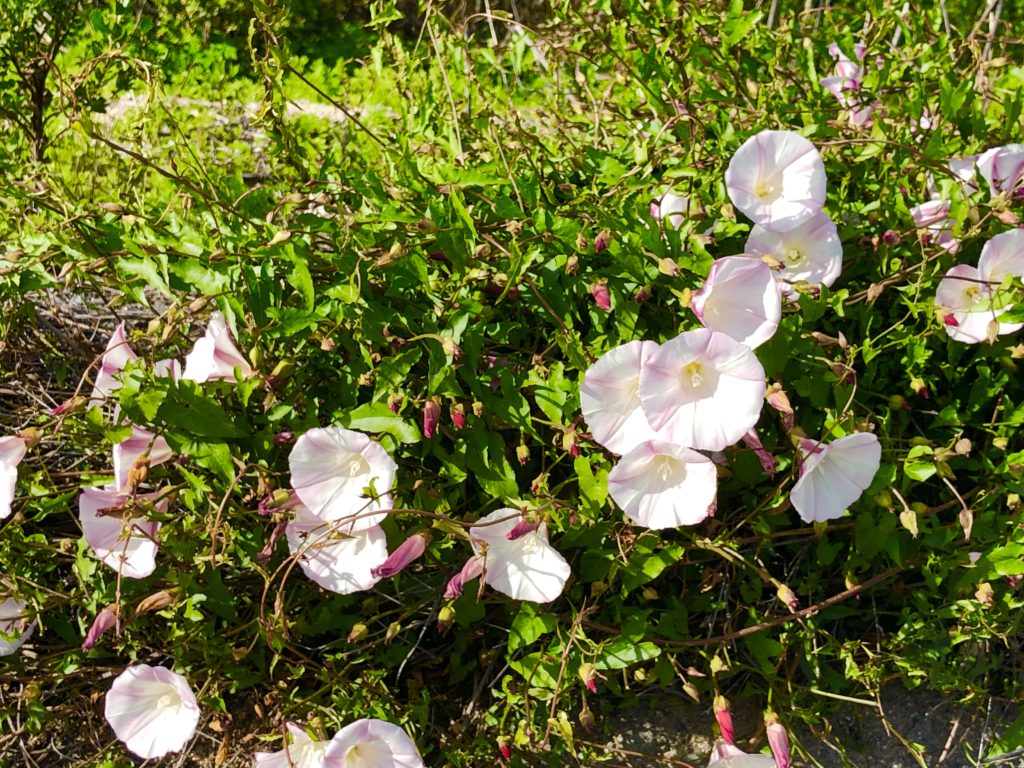
“Love is like wildflowers; it’s often found in the most unlikely places.” –Ralph Waldo Emerson.
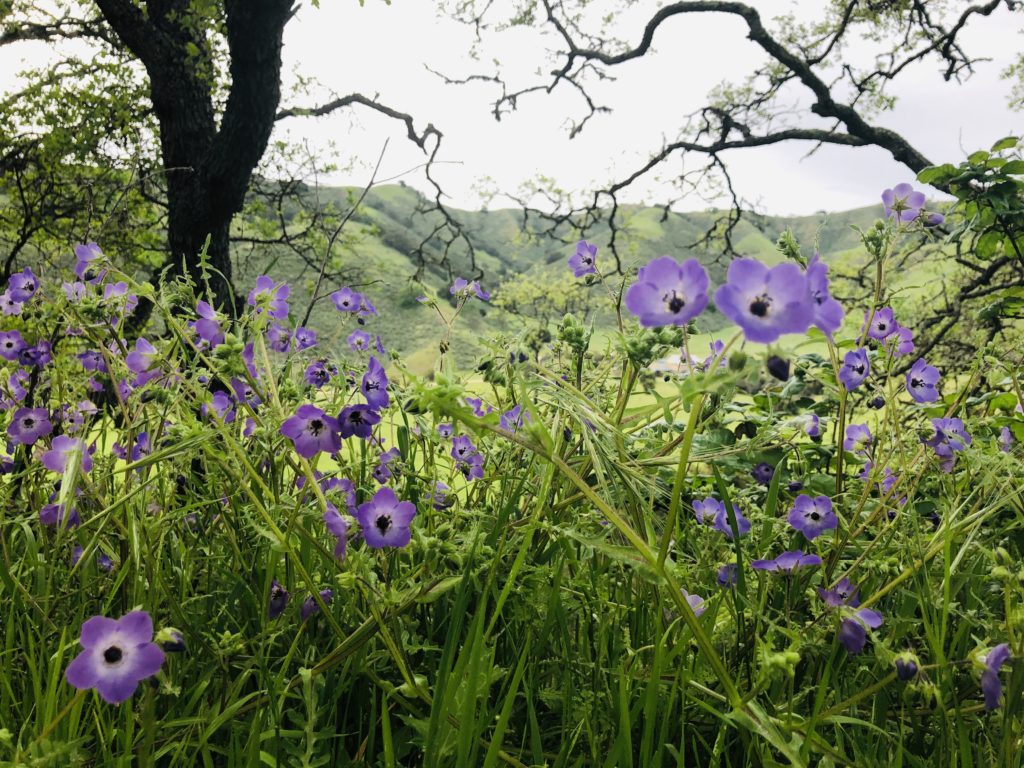
I hope that you are able to enjoy the beautiful wildflowers this spring! Thank you for visiting my blog. Wishing you peace, love, happiness & beautiful vistas!
-
Lovers Point: Legendary Park in Pacific Grove
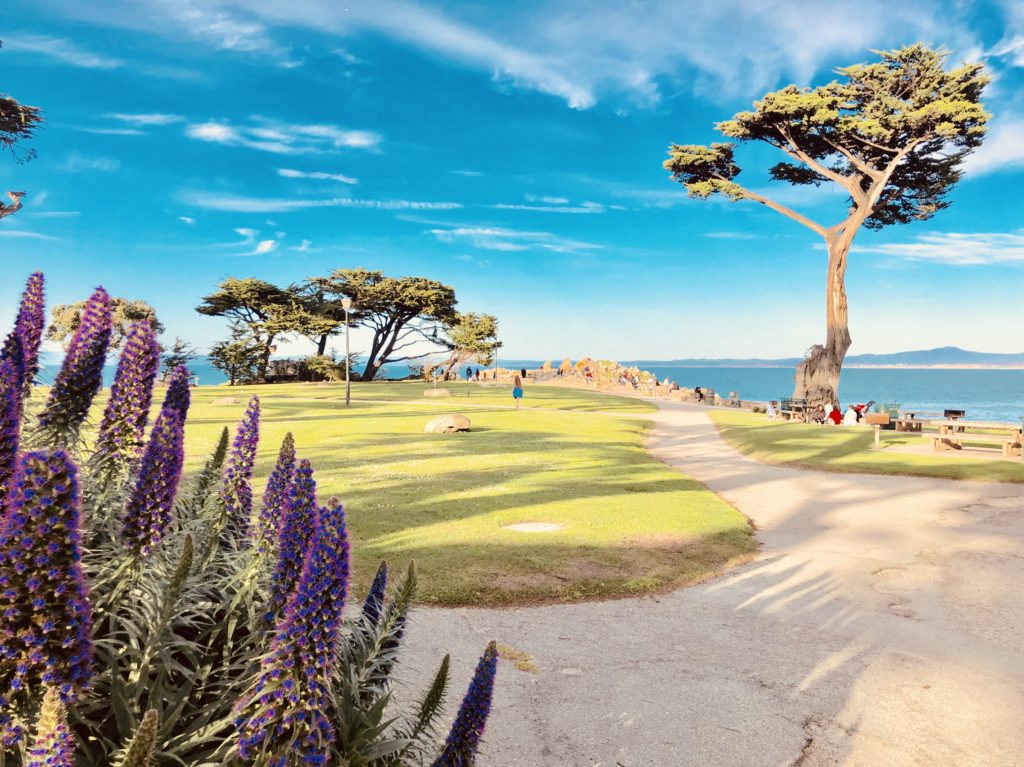 Featuring panoramic views stretching from Monterey to Pebble Beach, Lovers Point will bewitch you. Located in Pacific Grove, on the tip of the Monterey Peninsula, it is merely the icing on the cake. Pacific Grove is called “Butterfly Town, USA” because monarch butterflies return here year after year. It is also known as “America’s Last Hometown” because of the strong community spirit binding together this quaint Victorian town. It is home to the Asilomar Conference Center, Point Pinos Lighthouse, and also hosts the annual Feast of Lanterns. Additionally, it has been the setting for several films, most recently the “Big Little Lies” HBO series.
Featuring panoramic views stretching from Monterey to Pebble Beach, Lovers Point will bewitch you. Located in Pacific Grove, on the tip of the Monterey Peninsula, it is merely the icing on the cake. Pacific Grove is called “Butterfly Town, USA” because monarch butterflies return here year after year. It is also known as “America’s Last Hometown” because of the strong community spirit binding together this quaint Victorian town. It is home to the Asilomar Conference Center, Point Pinos Lighthouse, and also hosts the annual Feast of Lanterns. Additionally, it has been the setting for several films, most recently the “Big Little Lies” HBO series.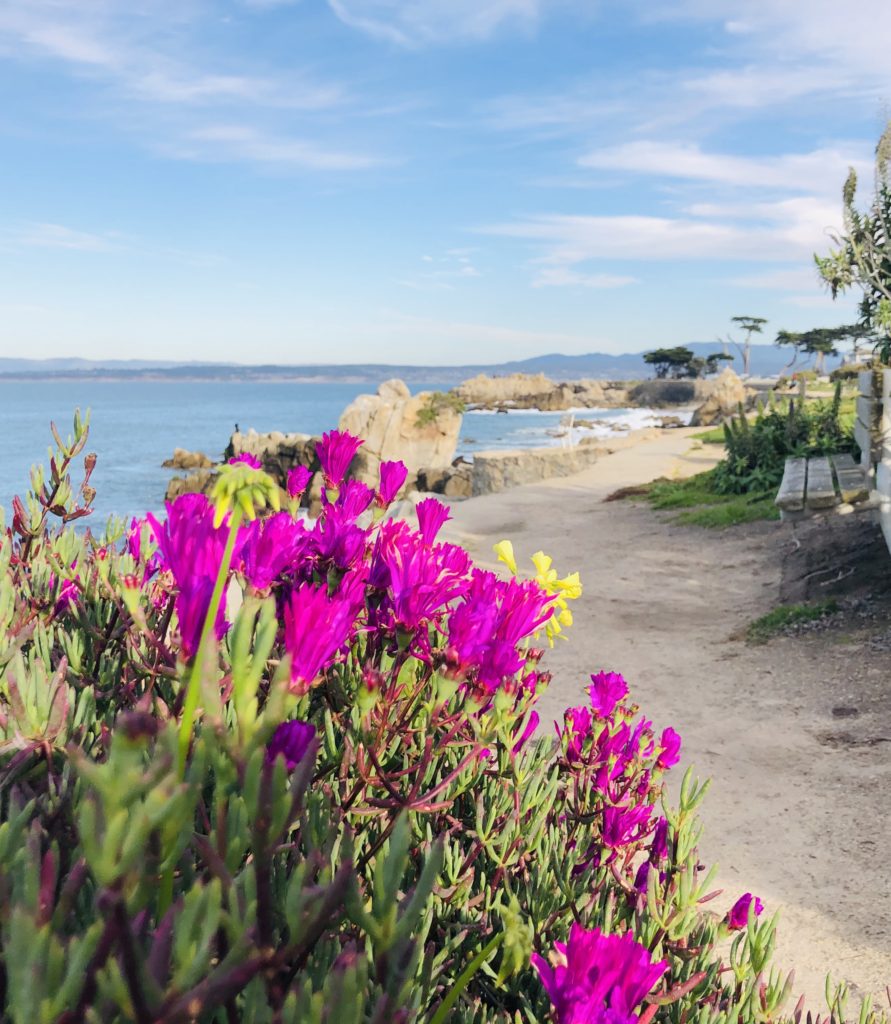 Lovers Point is a dalliance between land, sea, and sky that never fails to charm. Its natural beauty has been an inspiration for decades. In the 1890s, the area was an artist’s haven. At that time, a movement seeking to create art in outdoor settings in natural light and weather conditions, called en plein air, was the rage. The movement, which started in France, soon swept through Europe and expanded to the United States beginning in California. Today, you may still see plein air artists set up with their easels and paints.
Lovers Point is a dalliance between land, sea, and sky that never fails to charm. Its natural beauty has been an inspiration for decades. In the 1890s, the area was an artist’s haven. At that time, a movement seeking to create art in outdoor settings in natural light and weather conditions, called en plein air, was the rage. The movement, which started in France, soon swept through Europe and expanded to the United States beginning in California. Today, you may still see plein air artists set up with their easels and paints. 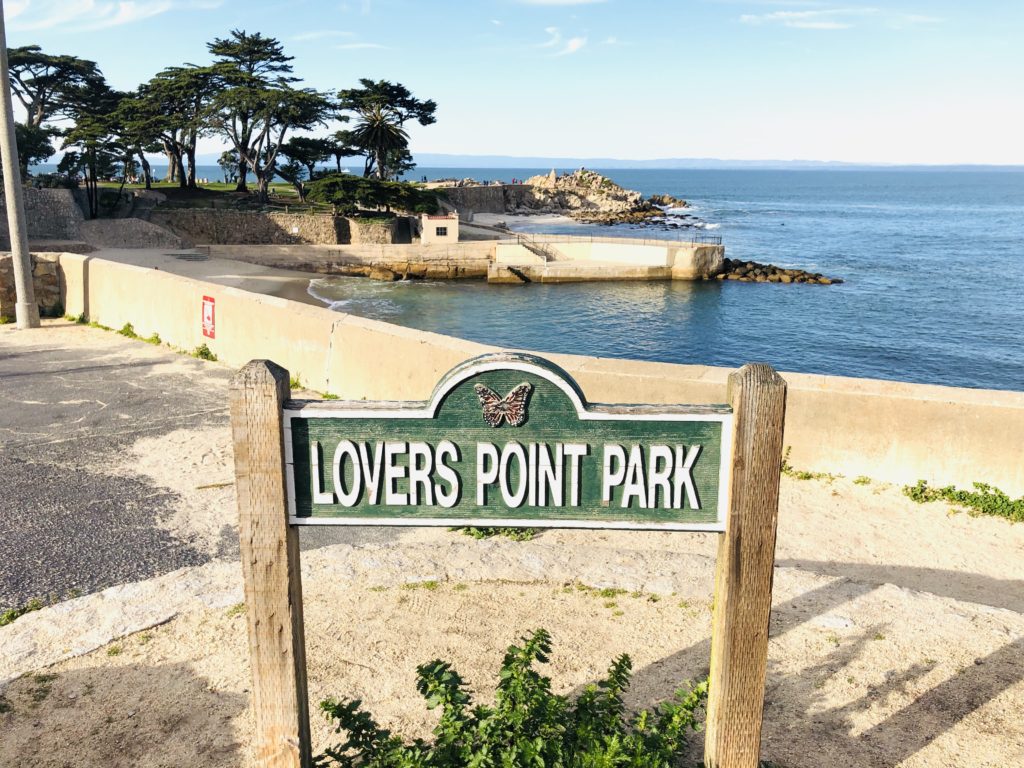
Lovers Point is a place to experience not only beauty but also adventure. The park consists of 4.4 acres. Sand volleyball, rock climbing, surfing, kayaking, biking, scuba diving, paddle boarding, snorkeling and strolling along the ever-popular waterfront coastal trail are just some of the fun things to do here. The coastal trail stretches for 18 miles, from Castroville in the north to the far tip of Asilomar Beach in the south. It follows the path of the now defunct Southern Pacific Railroad.
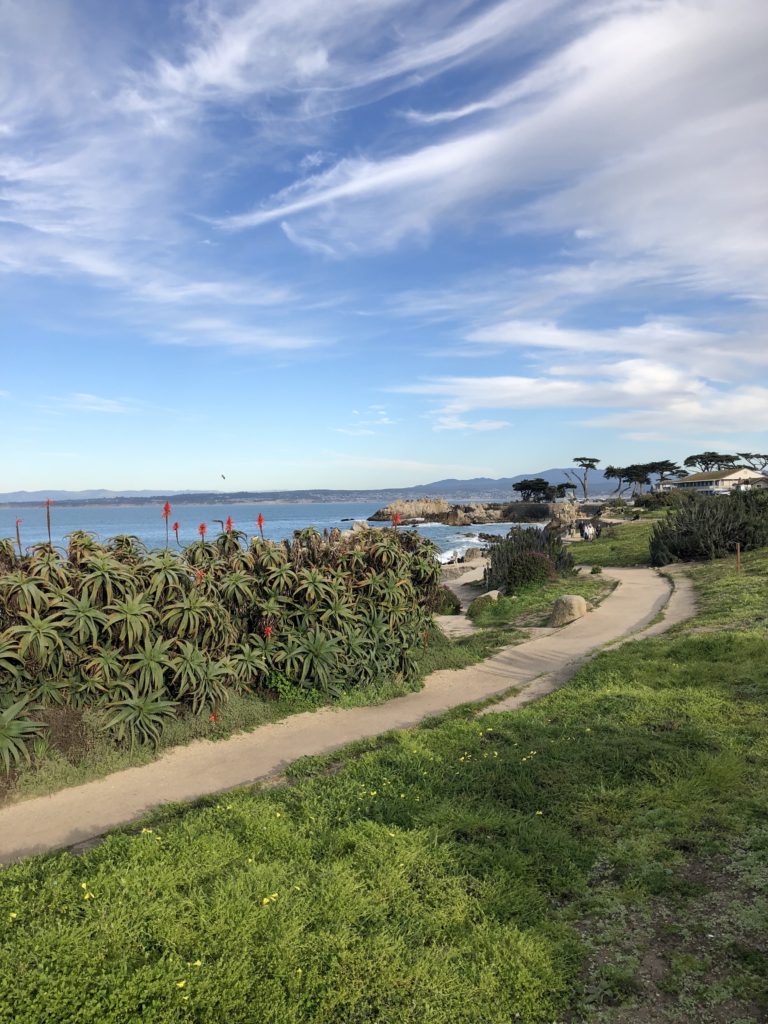
Located above a sand volleyball court is one of the last remaining swan boats from Lover’s Point. The swan boats of Pacific Grove were originally introduced in the 1890s to enable visitors to explore the area by sea. The swan boat fleet was owned and operated by Nathanial “Dad” Sprague for more than 50 years. The boats were then operated by a variety of owners until the mid-1970s.
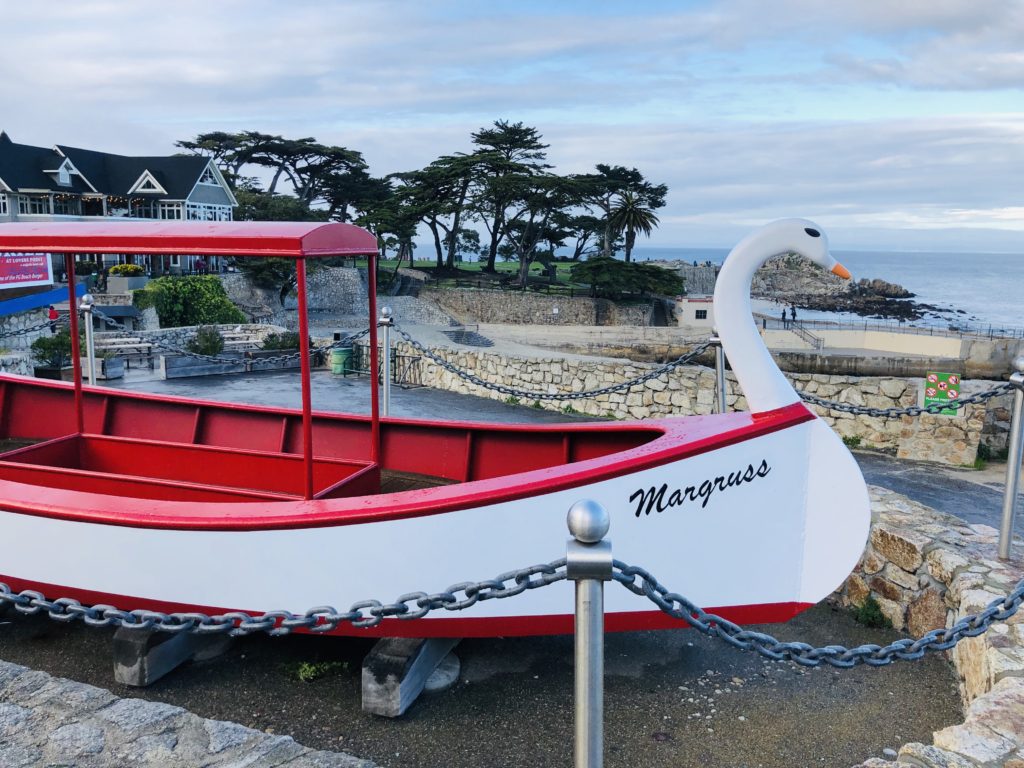
The beach at Lovers Point faces west and has a concrete wall and breakwater, making it one of the few safe swimming places in the area and popular for families and children. Be advised, however, that the water here is very chilly year round.
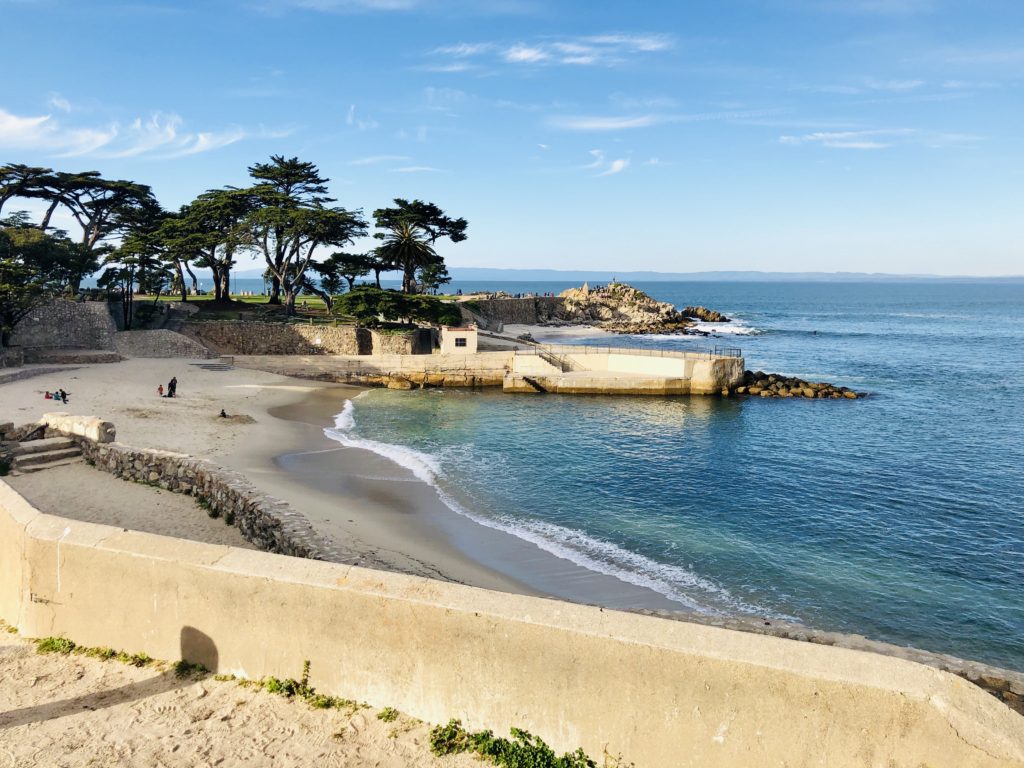 Lovers Point State Marine Reserve, created in 2007, lies directly offshore Lovers Point Park. It is one of four marine protected areas on the Monterey Penisula. It includes a variety of wondrous flora and fauna including kelp forests, sea otters, harbor seals, pelicans, cormorants and more.
Lovers Point State Marine Reserve, created in 2007, lies directly offshore Lovers Point Park. It is one of four marine protected areas on the Monterey Penisula. It includes a variety of wondrous flora and fauna including kelp forests, sea otters, harbor seals, pelicans, cormorants and more.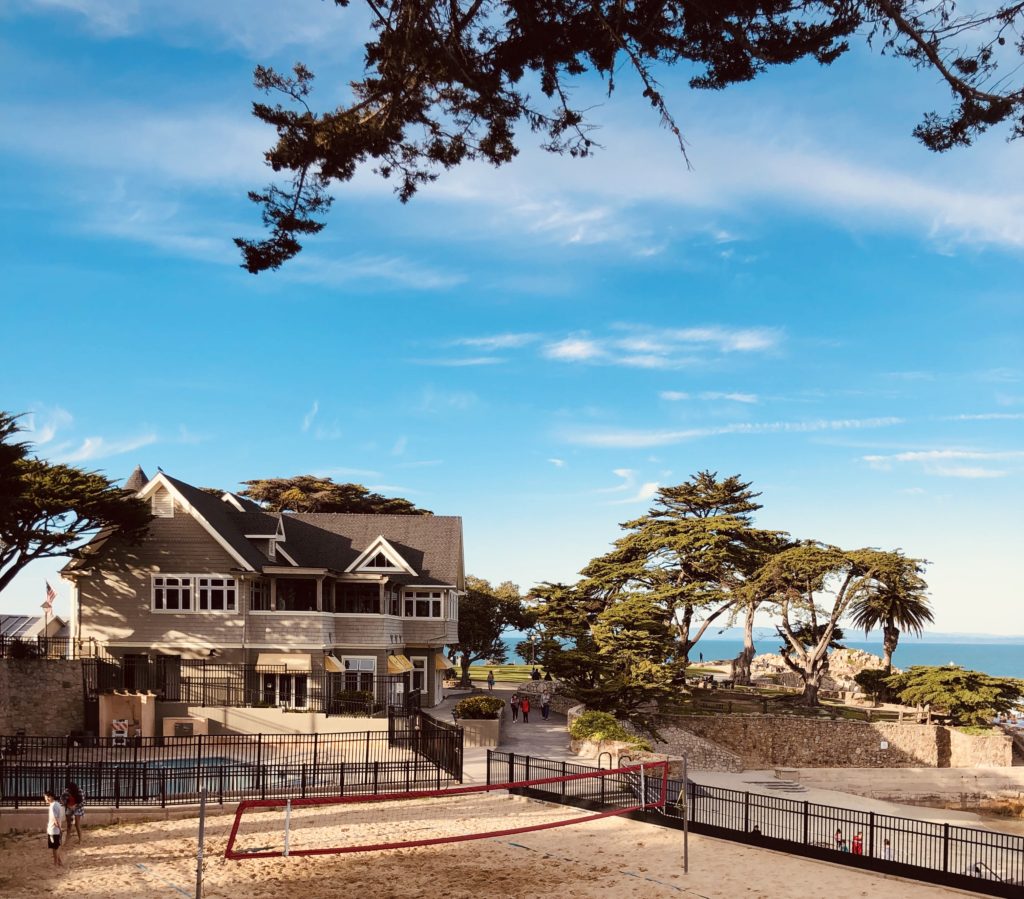
Helpful Tips:
- Numerous benches, BBQ grills and picnic tables are available.
- Fishing is prohibited in the Lovers Point State Marine Reserve.
- Bikes, kayaks, surreys, paddleboards, scuba diving gear, surfboards, and other rentals are available at Lovers Point by Adventures By The Sea.
- Nearby restaurants include The Beach House and The Grill at Lovers Point.
- Public restrooms are available.
Thank you for visiting my blog! Wishing you peace, love, happiness & beautiful vistas!

-
Calla Lily Valley’s Springtime Beauty
Calla Lily Valley is nestled amidst a ravine surrounding Doud Creek as it rushes down to the ocean. It is directly across Hwy 1 from the historic Doud Ranch and is technically part of Garrapata State Park. It is named for the captivating and graceful calla lilies that appear here in the spring, usually in late February to early March.
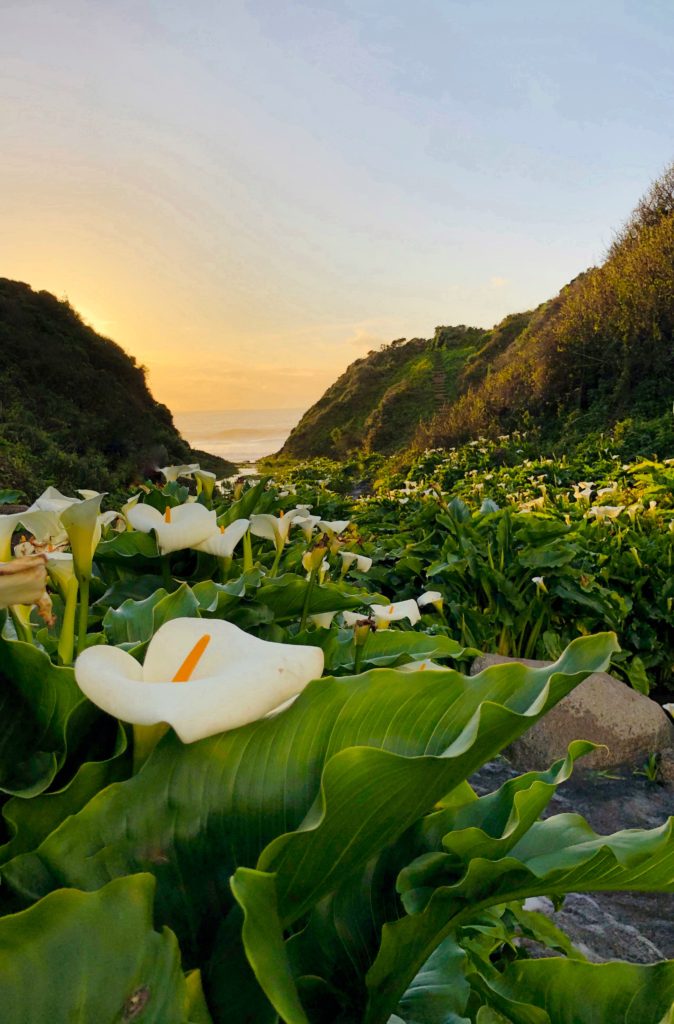
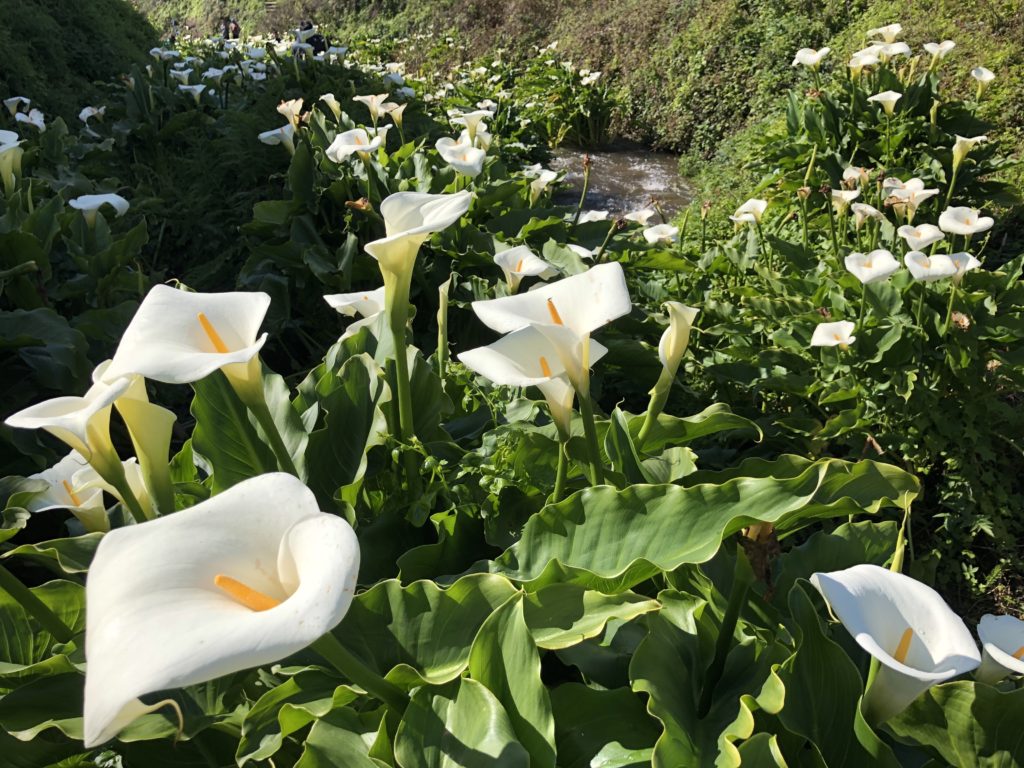
Calla is a name of Greek origin meaning “beautiful”. In the language of flowers, white calla lilies symbolize marital bliss and devotion—which may be why they are often featured in wedding bouquets. They are also used to express sympathy. There is just something about white calla lilies that affects your psyche. White is often associated with purity, innocence, light, goodness, simplicity, illumination, cleanliness, beginnings, spirituality, possibility, sincerity, protection, and perfection.

The flower is native to Africa and consists of a spathe, the outer part of the flower, and the spadix, the yellow spike in the center. 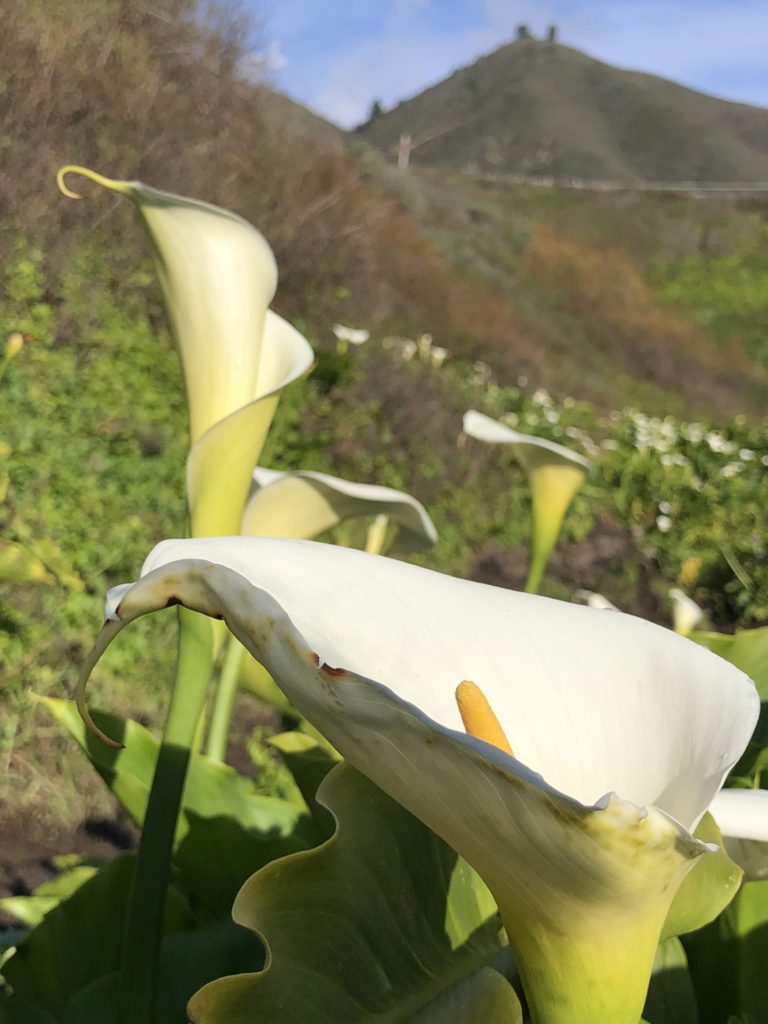
Calla Lilies grow from rhizomes that reproduce prolifically, making them a symbol of fertility and plenty. They are extremely hardy and semi-aquatic, making it no surprise that they are abundant around Doud Creek!
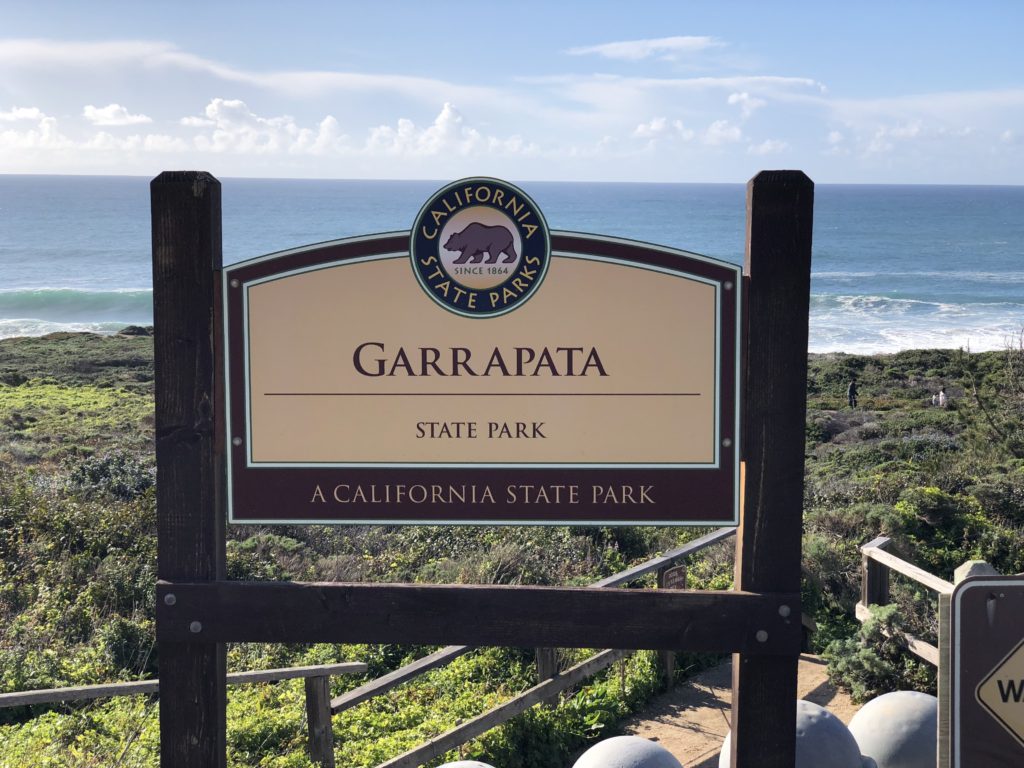
You can access Calla Lily Valley via two entrances. The first, shortest (.5 miles) and easiest route is at gate 18. The second, longer and more challenging route is at gate 19 where the Garrapata sign is located. You may park on the ocean side of Hwy 1.
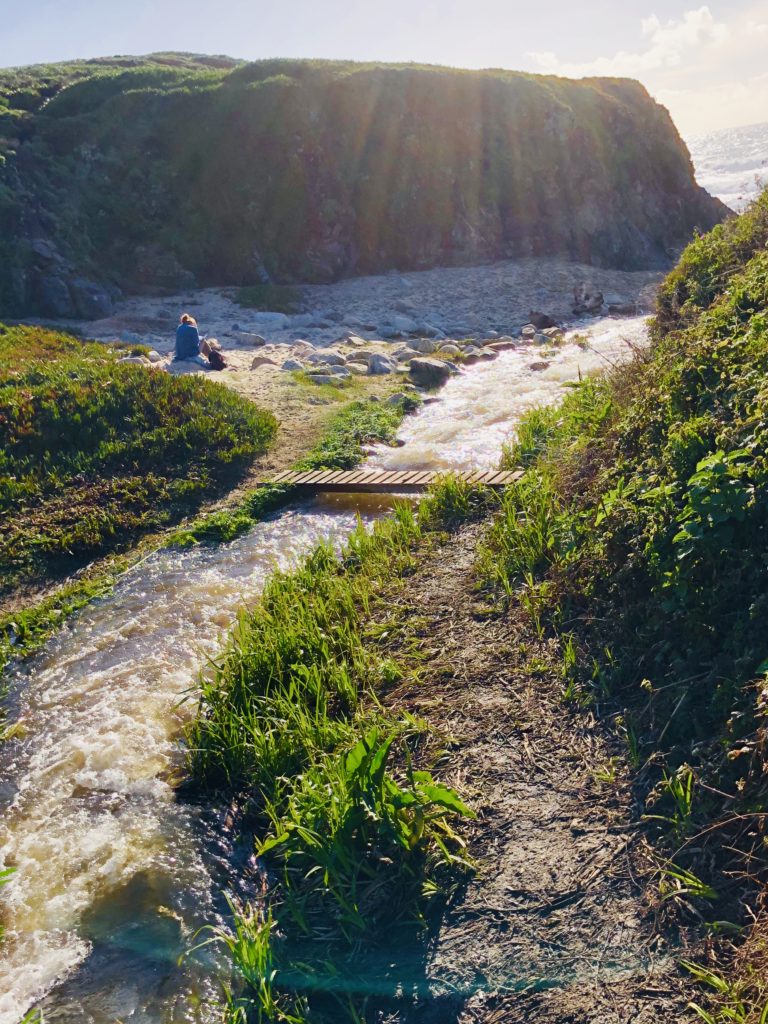
It seems pretty banal walking along the pathways, until you come to the valley and suddenly, there they are! The luminous proliferation of snow-white blossoms overwhelms you with their color and scent.
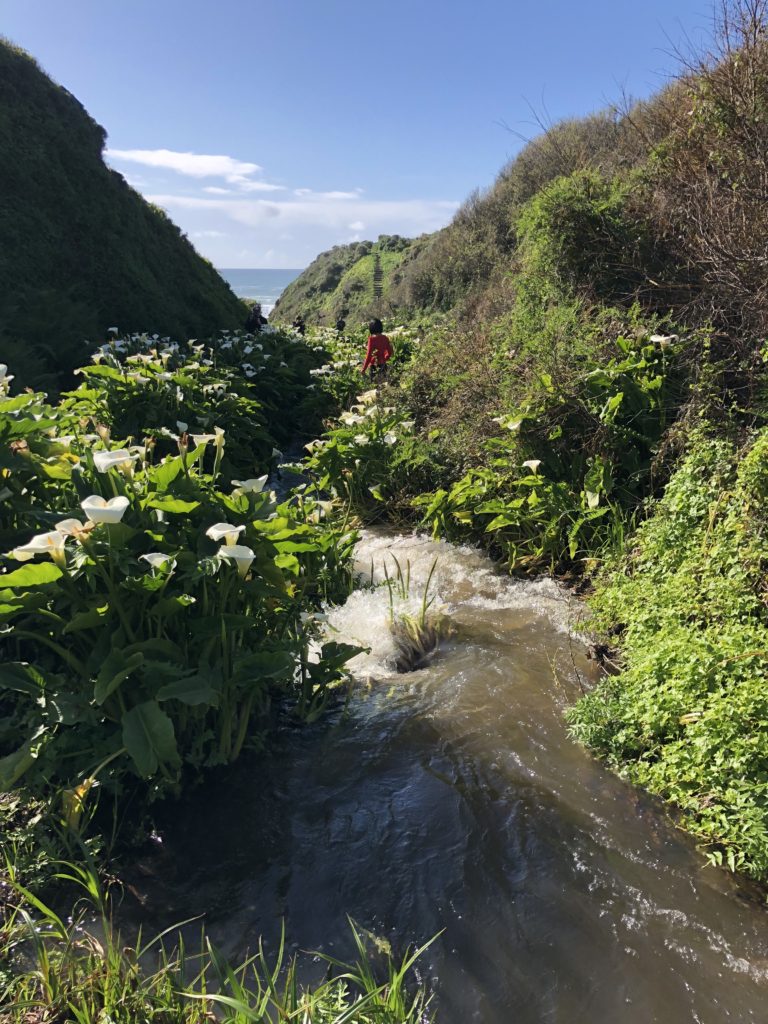

If you follow the creek to where it empties into the ocean and turn left, you will see beautiful Garrapata Beach with a myriad of sea stacks, dramatic waves, and extensive sea-washed pieces of driftwood.
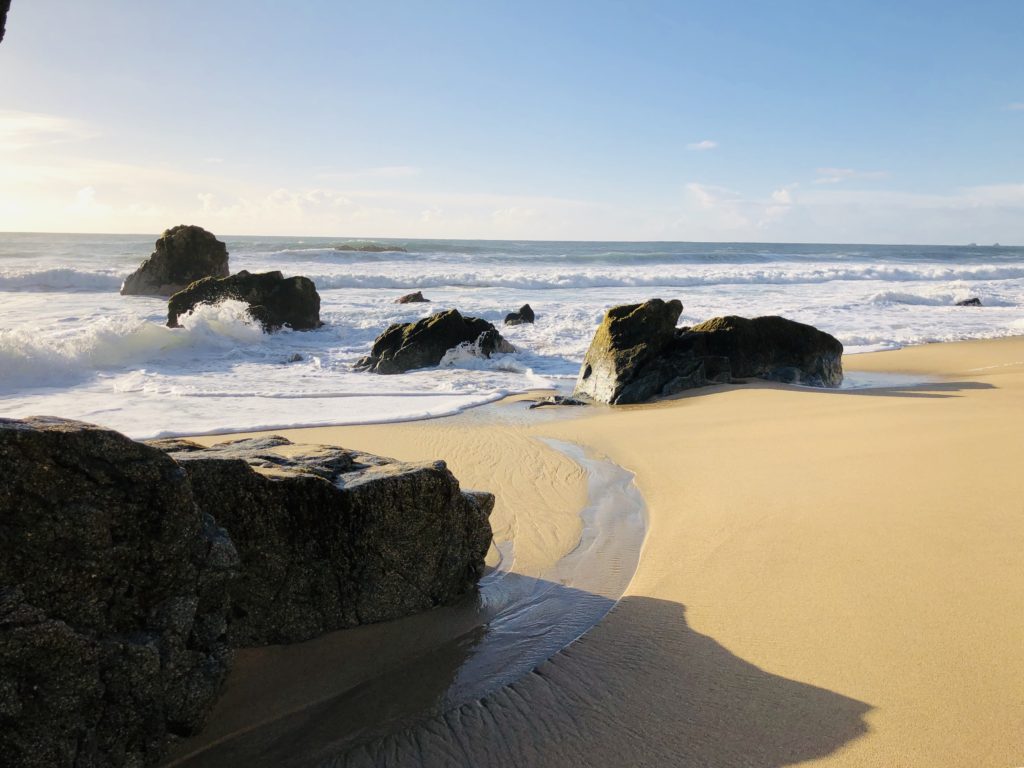
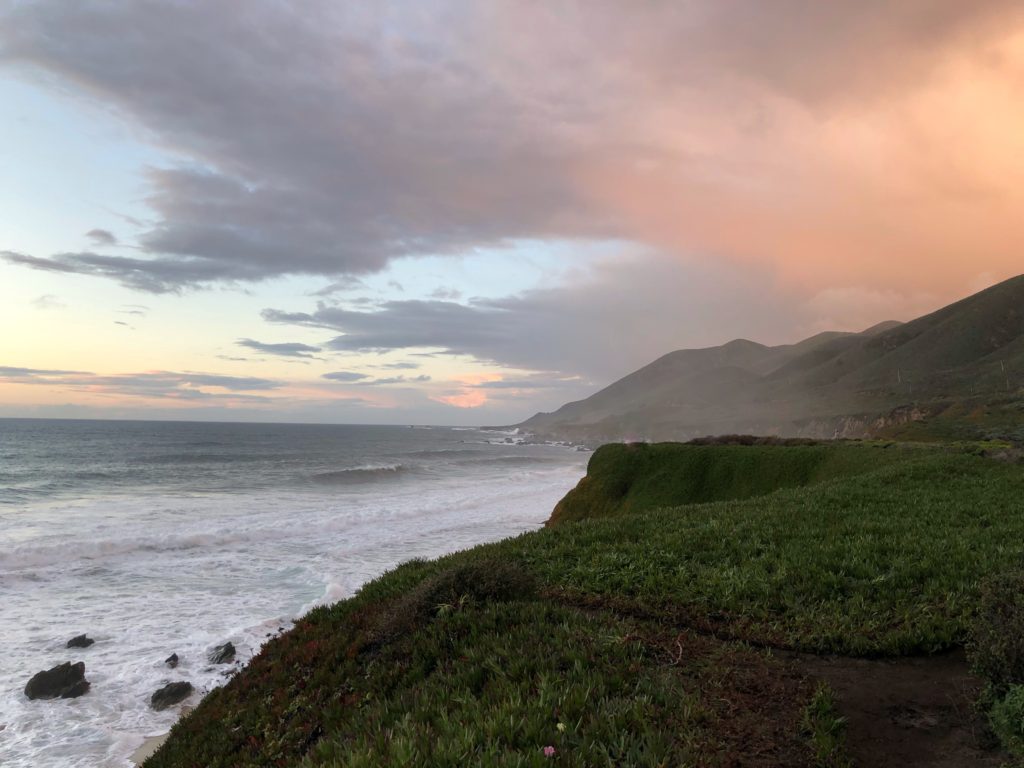
Helpful Tips:
- Parking is available along the dirt pullout at Gate 18 and Gate 19 for Garrapata State Park, near mile-marker 63.
- Wear old shoes or rain boots as it can be quite muddy and wet on the creek banks.
- The best time to visit is during the week as it can be crowded on weekends.
- Wading or swimming in the ocean is not recommended due to dangerous waves and rip tides.
I hope you get to see Calla Lily Valley! Thank you for visiting my blog. Wishing you peace, love, happiness, & beautiful vistas!
-
Panther & Hole-in-the-Wall Beach
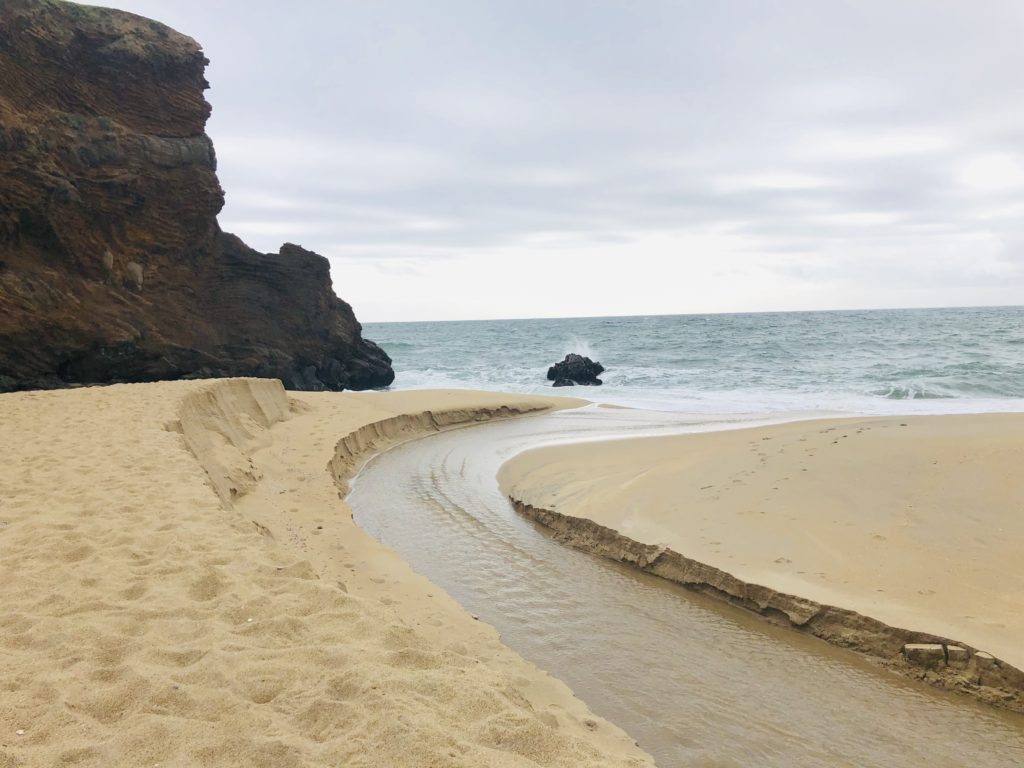 The minute you set foot on idyllic Panther Beach you will be mesmerized by the magical sights and sounds. Sunlight glistens on the sand, seagulls hover on the ocean breeze, and majestic waves splash and crash rhythmically onto the beach. Secluded and private, Panther Beach will entice you with its beauty. It features not only a magnificent walk-through sea cave, but also a rushing seasonal waterfall. The waterfall cascades from the base of a cliff to form a waterway that wends its way down the beach to the sea.
The minute you set foot on idyllic Panther Beach you will be mesmerized by the magical sights and sounds. Sunlight glistens on the sand, seagulls hover on the ocean breeze, and majestic waves splash and crash rhythmically onto the beach. Secluded and private, Panther Beach will entice you with its beauty. It features not only a magnificent walk-through sea cave, but also a rushing seasonal waterfall. The waterfall cascades from the base of a cliff to form a waterway that wends its way down the beach to the sea.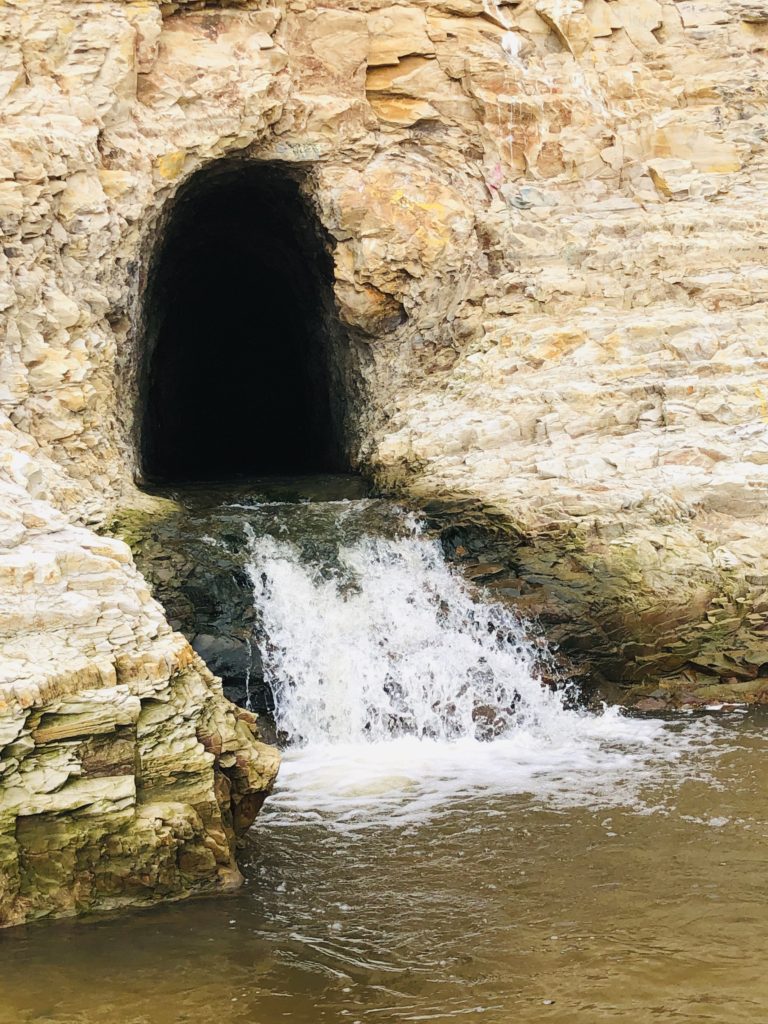
Panther Beach and Hole-in-the-Wall Beach are part of the Coast Dairies State Park, which spans about a six-mile segment west of Hwy 1 in Santa Cruz County, north of Santa Cruz and south of the small town of Davenport. Coast Dairies State Park also includes Bonny Doon, Laguna Creek, Davenport Landing, Shark Fin Cove & Beach, and Scott Creek Beach.
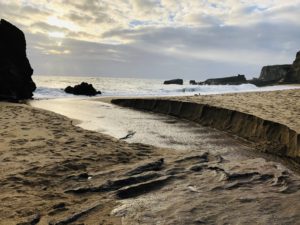
The creek cuts a path through the sand and into the sea. 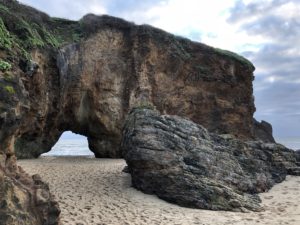
Behind a rugged stone wall on the south end of Panther Beach, a sea cave leads you to secluded Hole-in-the-Wall Beach. At high tide, it is difficult as well as dangerous to access due to strong surf. If you enter Hole-in-the-Wall Beach at low tide, be mindful of the tides because you could be trapped if the high tide comes in unexpectedly. This is the only way in and the only way out.
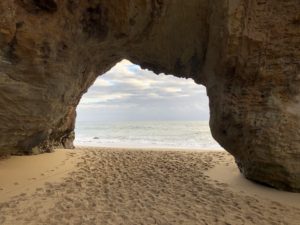
The ocean stirs the heart, inspires the imagination, and brings eternal joy to the soul.–Wyland
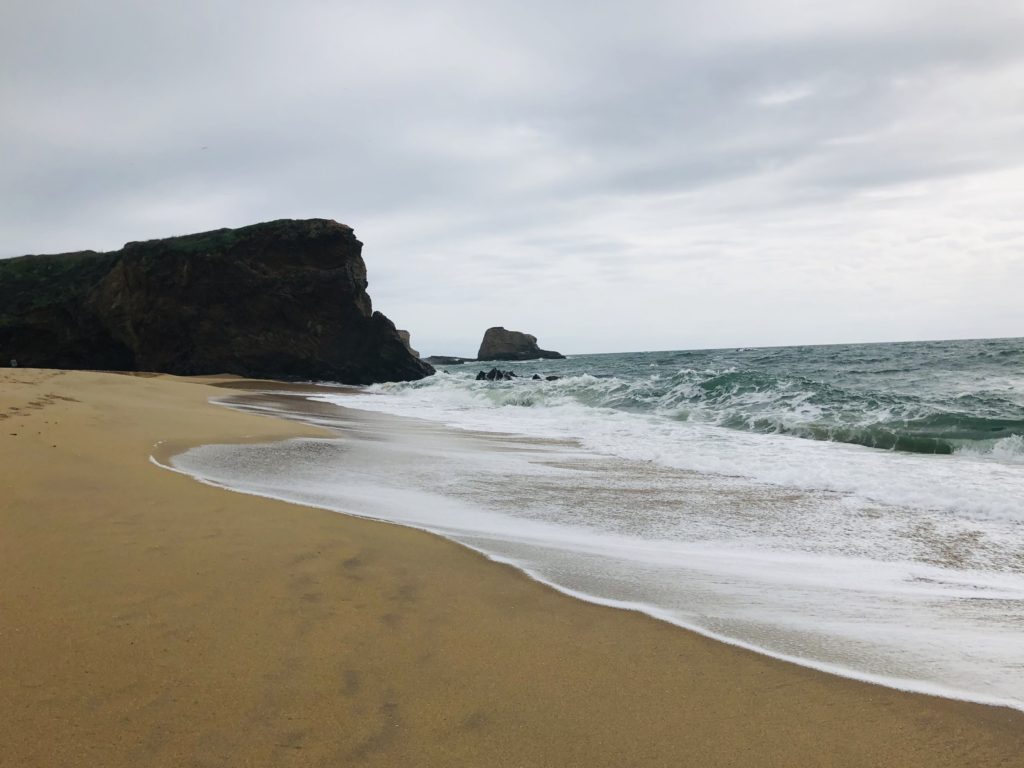
Hole-in-the-Wall Beach is accessible at low tide. Nothing soothes the soul like a day by the ocean. This beach is such an inspiring and joyful place to relax and rewind. It is a great place for beachcombing, rock climbing, sunbathing, photography, and hiking Be aware that the trail leading down to the beach is steep and moderately challenging and may be too difficult for inexperienced hikers. Also, during the spring rainy season, it can be muddy and slippery.
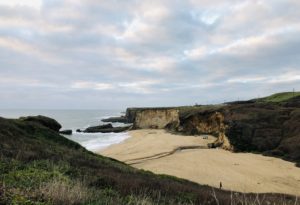
The view from above Panther Beach. Where:
Panther Beach and Hole-in-the-Wall Beach are located off Hwy 1 north of Santa Cruz at mileage marker 26.5, approximately two miles south of Davenport.
Helpful Hints:
- Hours are 8 am to sunset.
- Parking is available on an unmarked, elevated dirt area between Hwy 1 and the railroad tracks on the ocean side.
- No horses, vehicles, fires, glass, camping or alcohol is allowed.
- Be aware of the tides as high tides can cause entrapment.
- Swimming is not advised due to rip currents.
- To avoid crowds, try visiting during the week, when it is generally deserted
- Be respectful and pack your garbage in and out. Do not leave your refuse on the beach for others.
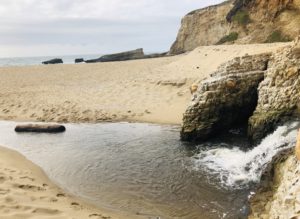
I hope you get the chance to visit this beautiful area! Thank you for visiting my blog. Wishing you peace, love, happiness, & beautiful vistas!
-
Elkhorn Slough & Moss Landing
 Playful Otters, barking sea lions, and graceful egrets are only a few of the amazing wildlife you may see at Elkhorn Slough and Moss Landing. The area is also home to a plethora of good restaurants, art galleries, and shops. You can also enjoy a variety of outdoor activities here, including fishing, surfing, beach combing, sea kayaking, whale watching, walking trails and even hydro biking.
Playful Otters, barking sea lions, and graceful egrets are only a few of the amazing wildlife you may see at Elkhorn Slough and Moss Landing. The area is also home to a plethora of good restaurants, art galleries, and shops. You can also enjoy a variety of outdoor activities here, including fishing, surfing, beach combing, sea kayaking, whale watching, walking trails and even hydro biking.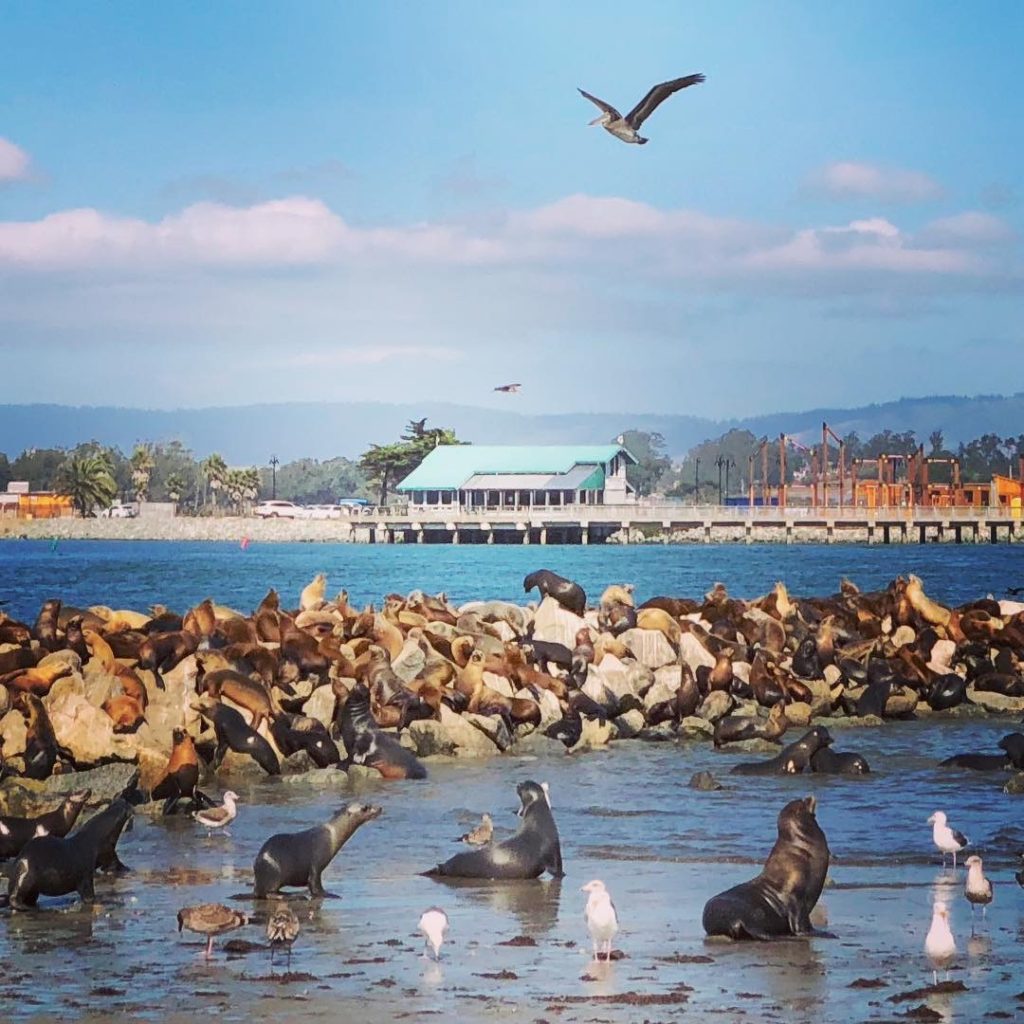
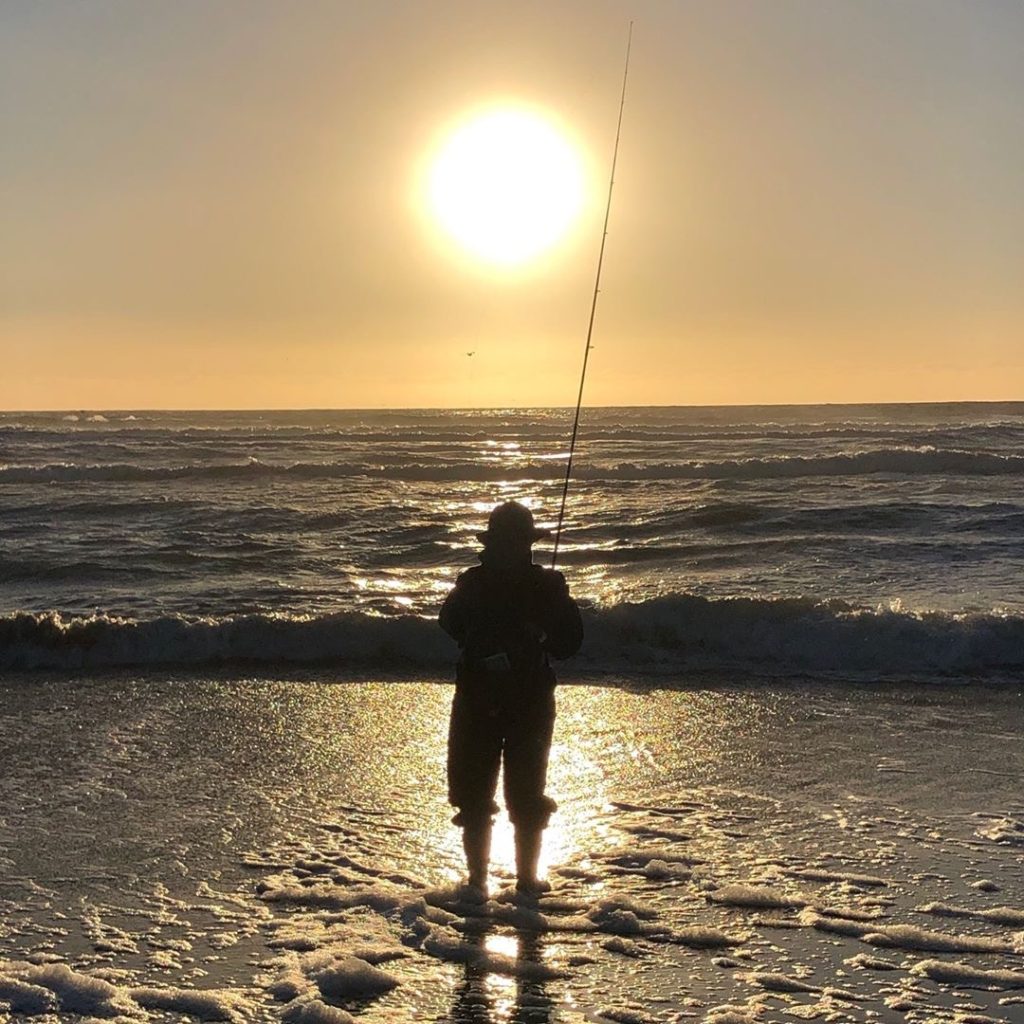
A lone fisherman on Moss Landing Beach during the King Tides. The extreme low tides pose prime conditions for fishing. HISTORY
Located between Monterey and Santa Cruz, Moss Landing is located where the Elkhorn Slough creates an estuary as it flows into Monterey Bay. Moss Landing is named for Charles Moss, a ship captain from Texas who built a wharf here in the mid-1800s. The area was once a very busy whaling and fishing port and the site of many fish processing plants and canneries. Today, Moss Landing Harbor is home to hundreds of fishing, pleasure, research and tour boats. Commercial boats bring in Dungeness crab, halibut, salmon, albacore, sardines, squid, mackerel, prawns, and more. Fresh seafood can be purchased off the boats and in the local restaurants.
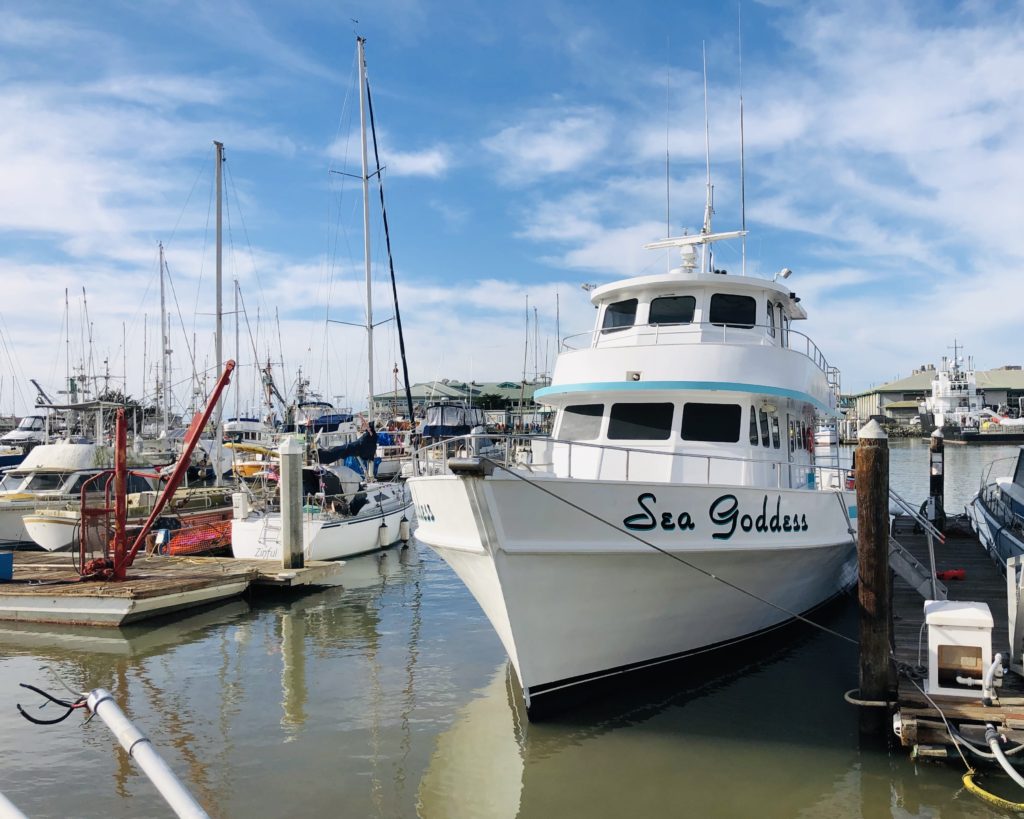
The Sea Goddess is one of several whale watching tour ships in the area. 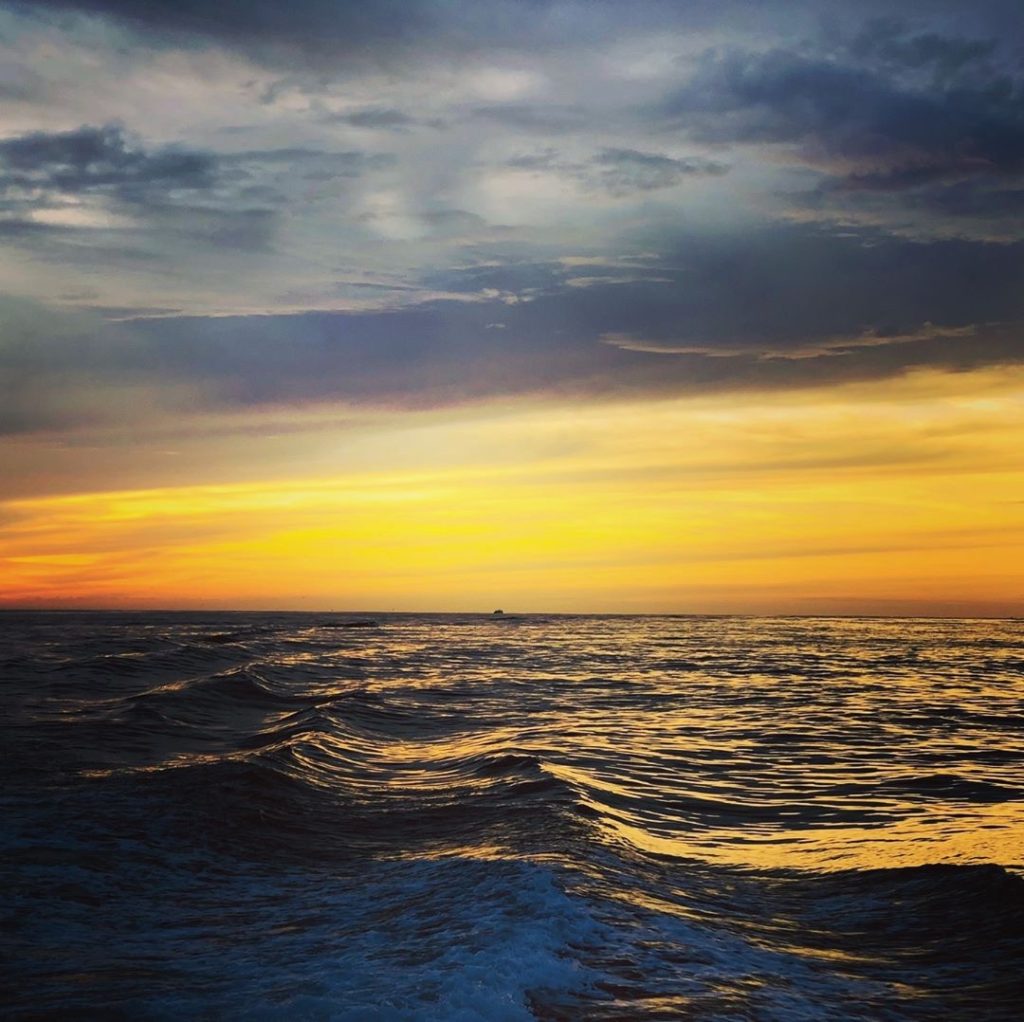
Moss Landing Harbor is home to the Monterey Submarine Canyon, a mile-deep chasm filled with a variety of sea life, including whales! 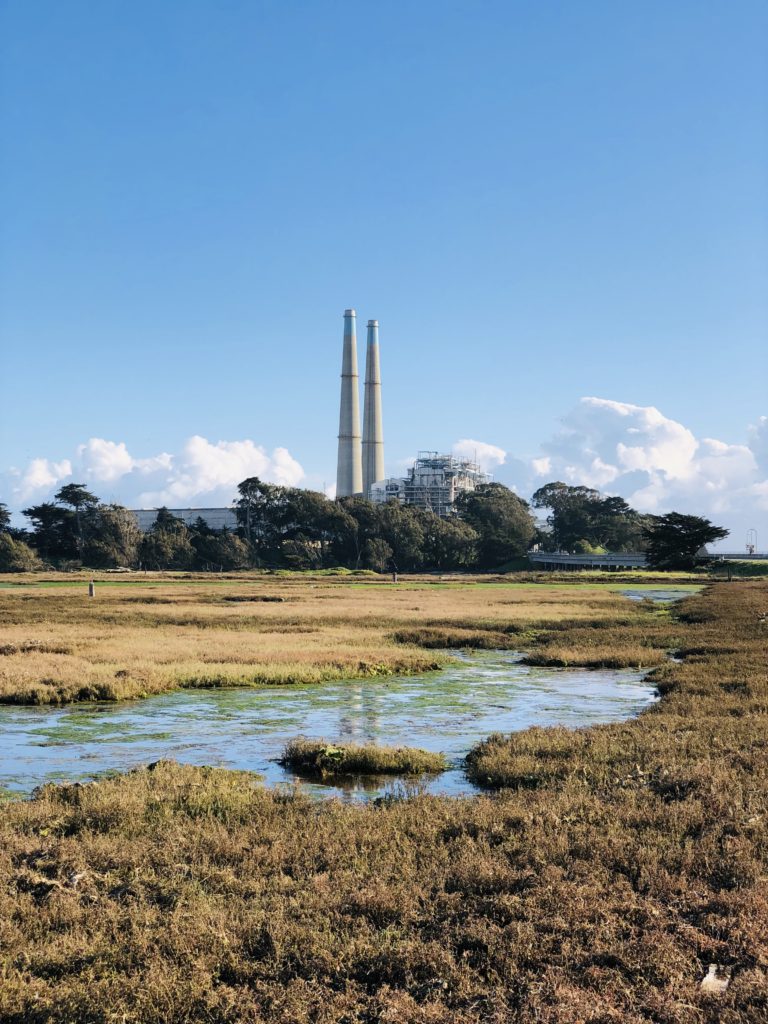
The twin towers of the power plant can be seen for miles. BUILDINGS AND RESTAURANTS
Notable buildings in Moss Landing include the Moss Landing Marine Laboratories operated by California State University, the Monterey Bay Aquarium Research Institute, and the Moss Landing Power Plant. Some of the amazing restaurants in the area include Moss Landing Cafe, The Whole Enchilada, Haute Enchilada, Lighthouse Harbor Grille, Pacific Grill, Lemongrass Seafood, Sea Harvest and Phil’s Fish Market. Lines form daily at Phil’s for the cioppino, one of the restaurant’s most famous dishes. For more information on local eateries in Moss Landing, see Restaurants.
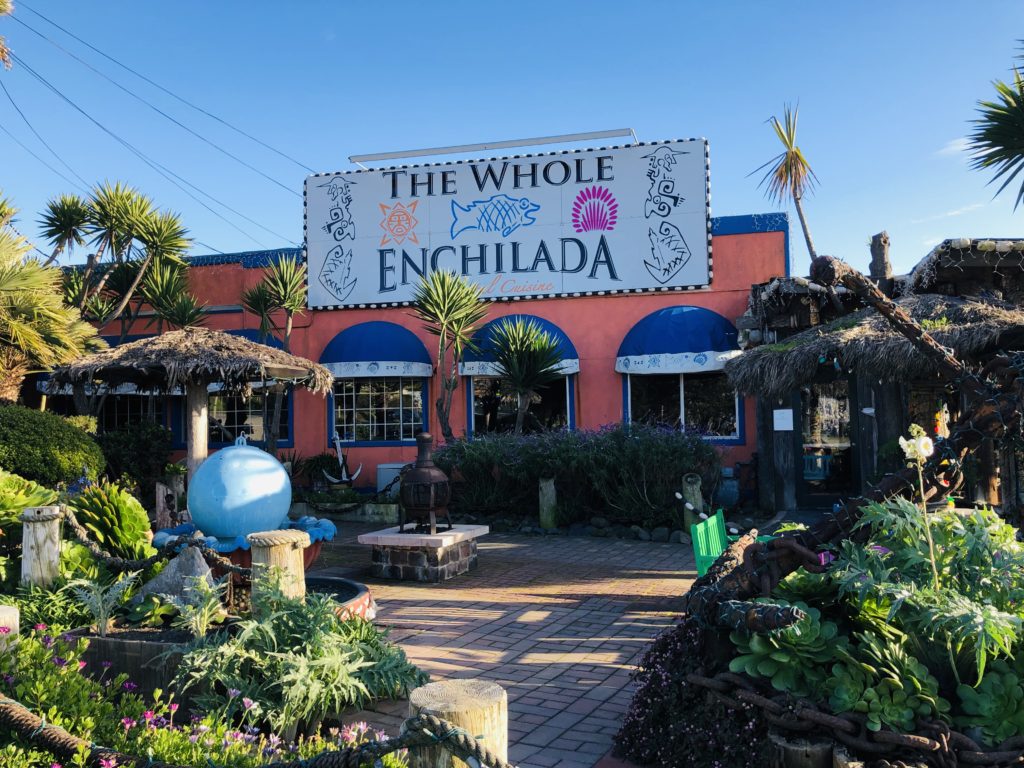
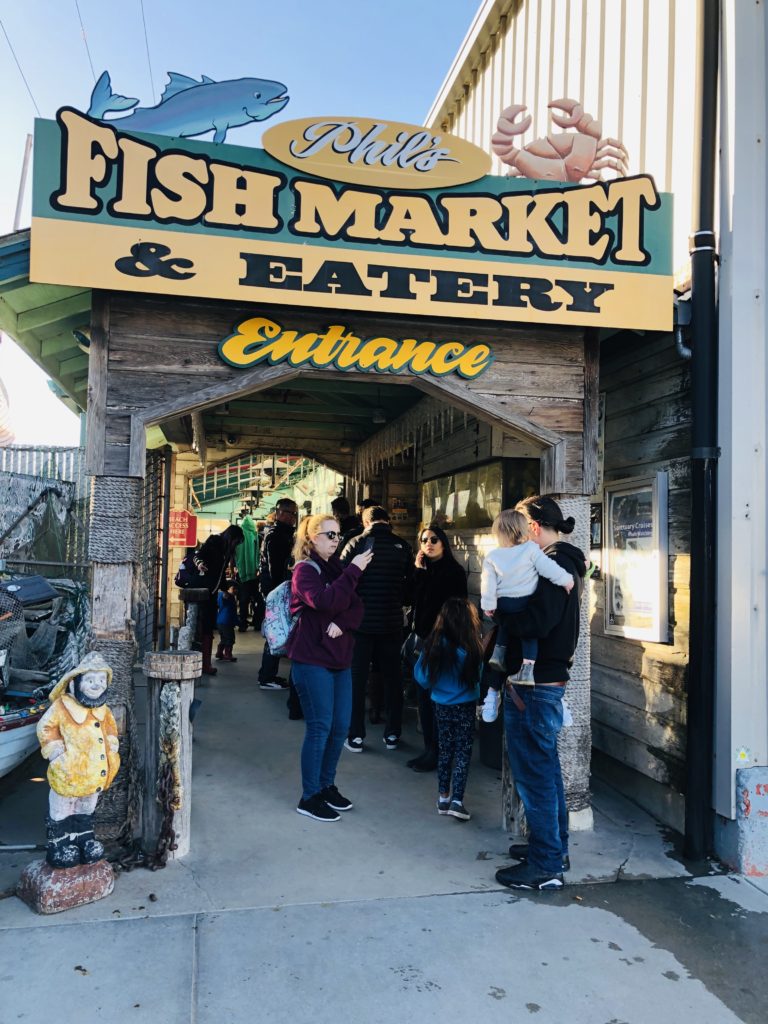
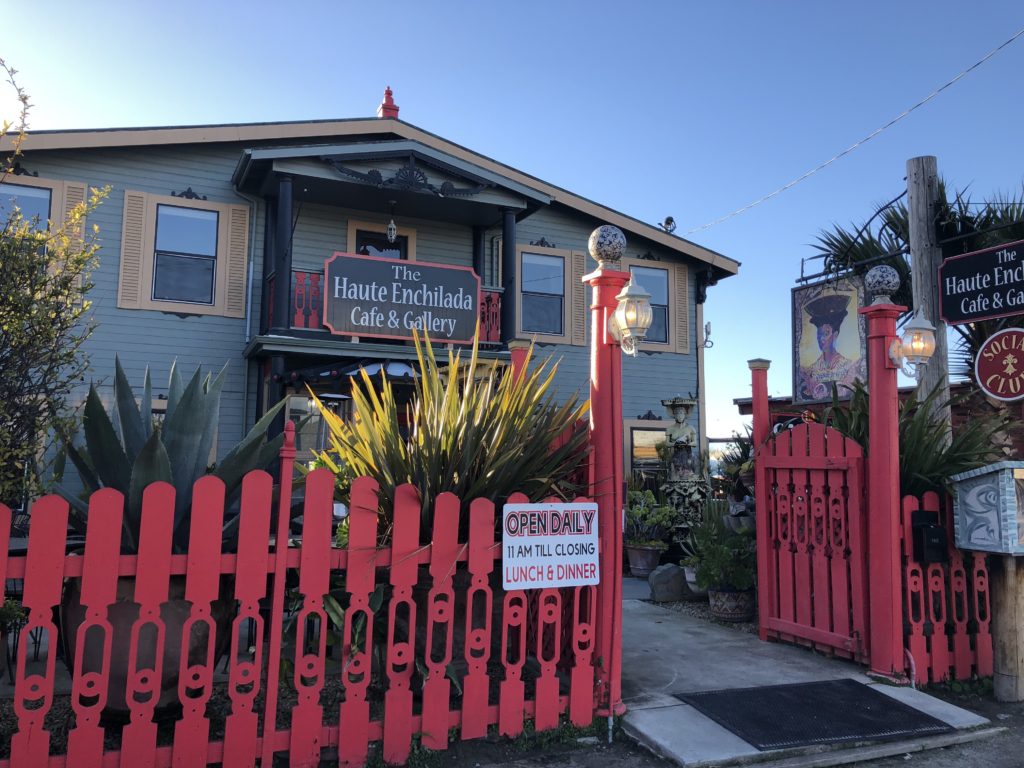
ACTIVITIES AND EVENTS
Moss Landing offers many fun activities and events including dancing, music, and wine and other tastings at both the Haute Enchilada and the Whole Enchilada. The Elkhorn Yacht Club also hosts a multitude of fun events including a crab feed in February as well as seasonal parties and races. There are also open studio art tours in September and October featuring local artists. One of the most popular summer events in the area is the annual Moss Landing Antique Street Fair. It is usually held the last Sunday in July and brings hundreds of vendors and shoppers together for a day of fun. Other activities in the area include the May opener for rock cod fishing, blessing the fleet May 1, open house at the Marine Labs every spring, and a Nautical Flea Market in May. For more information on events in the area, see Moss Landing.
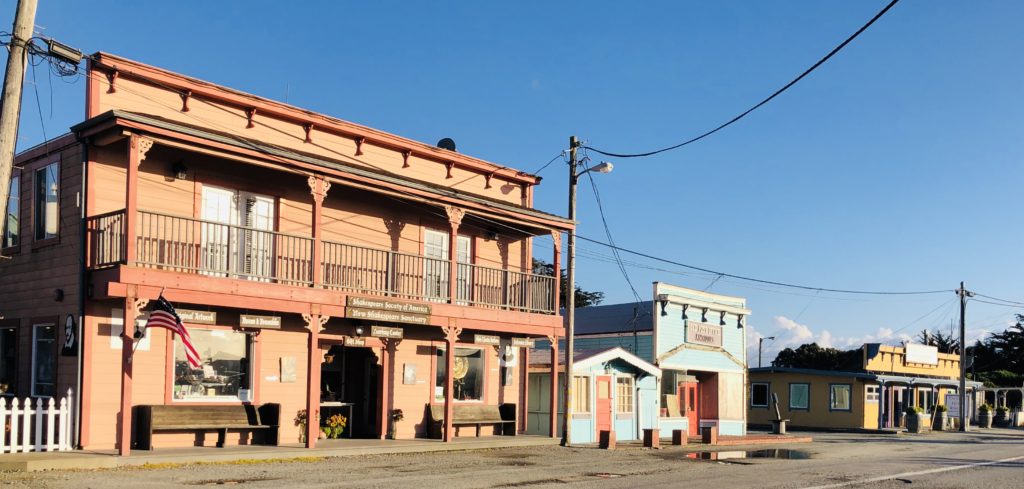
The main drag in Moss Landing has many quaint, historic buildings and shops. 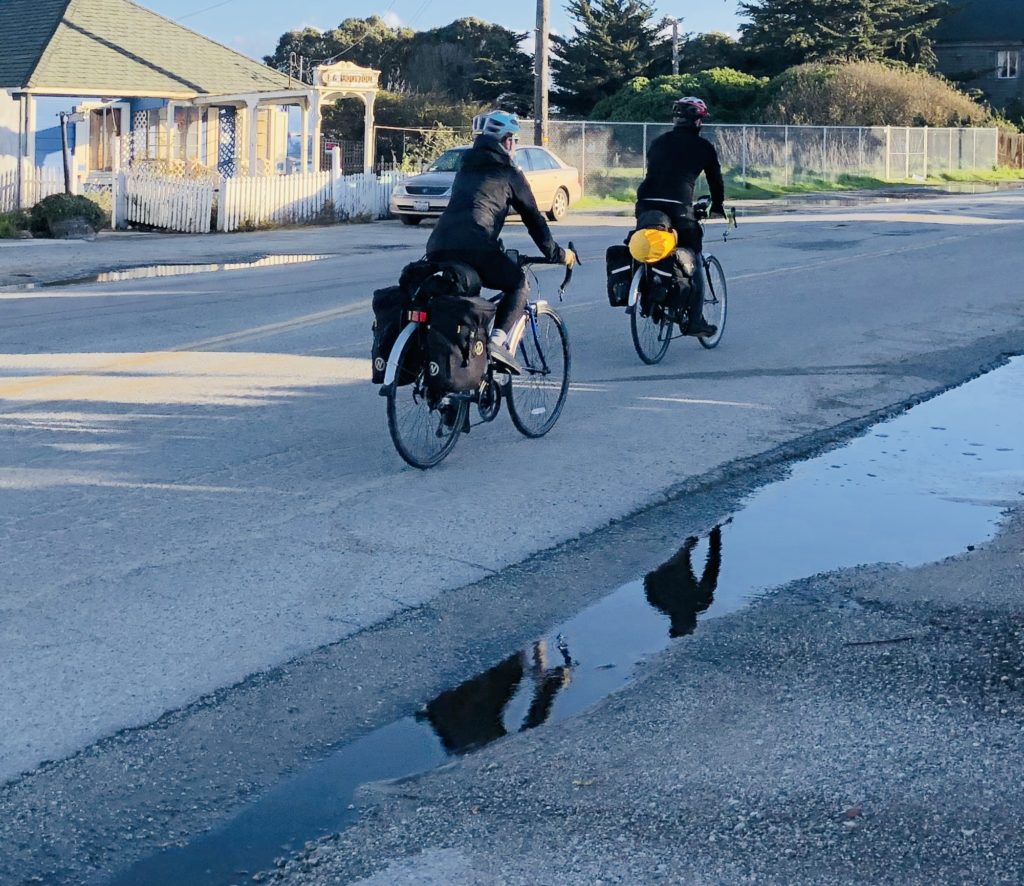
Moss Landing is a great place to bike and enjoy the quiet fishing village. WILDLIFE
Elkhorn Slough is one of the largest wetlands in California. It began as a salt marsh and efforts are being made to help restore this habitat. It is considered one of the top ten best birding spots in the country, according to Audubon. More than 350 bird species migrate through Elkhorn Slough each year. It is a nesting place for Western Snowy Plover in spring and summer. In fall and winter, the wetland provides habitat for waterfowl and shorebirds. My favorites are the snowy egrets and the endangered brown pelicans.
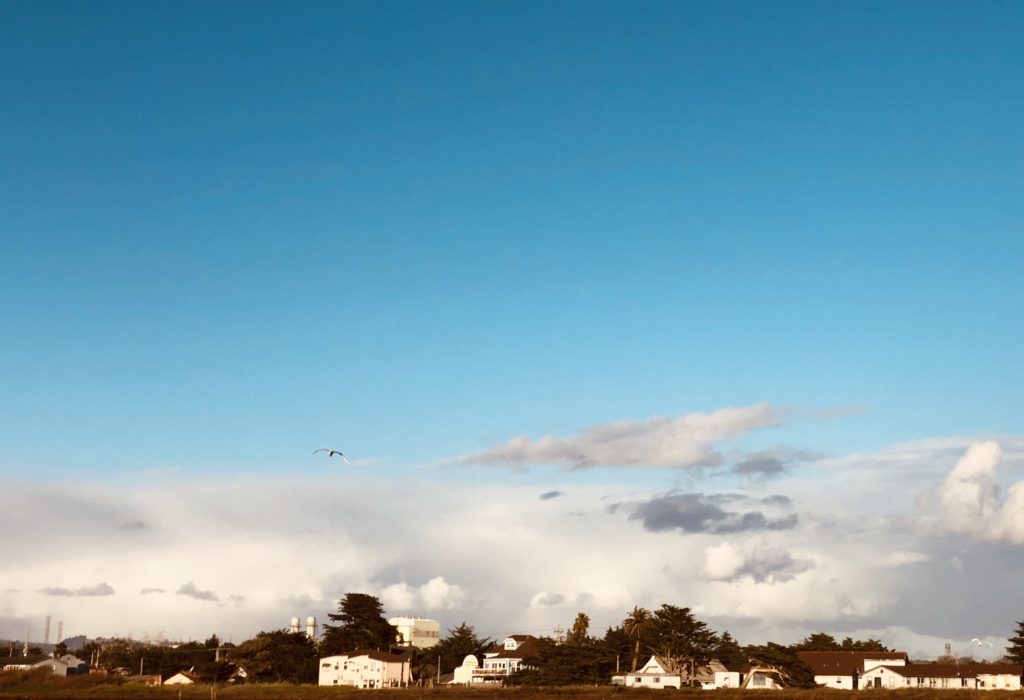
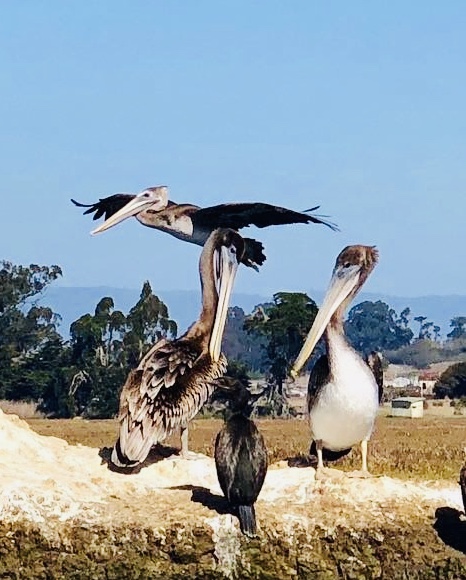
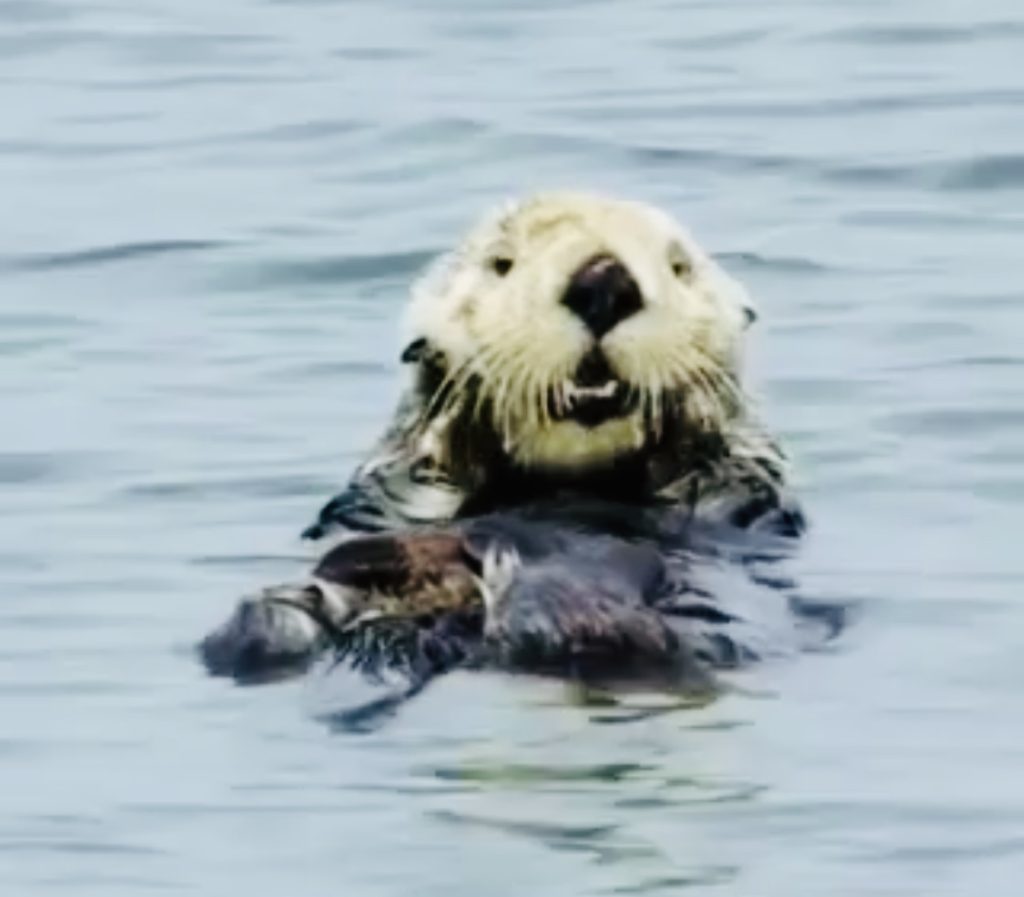
Moss Landing offers wonderful opportunities to view resident sea otters. You can see rafts of sea otters swimming here, sometimes holding hands. A raft refers to a group of sea otters in the water. A group can also be called a family, romp, lodge, and bevy. Whatever they are called, who doesn’t love those faces? Too much cuteness!
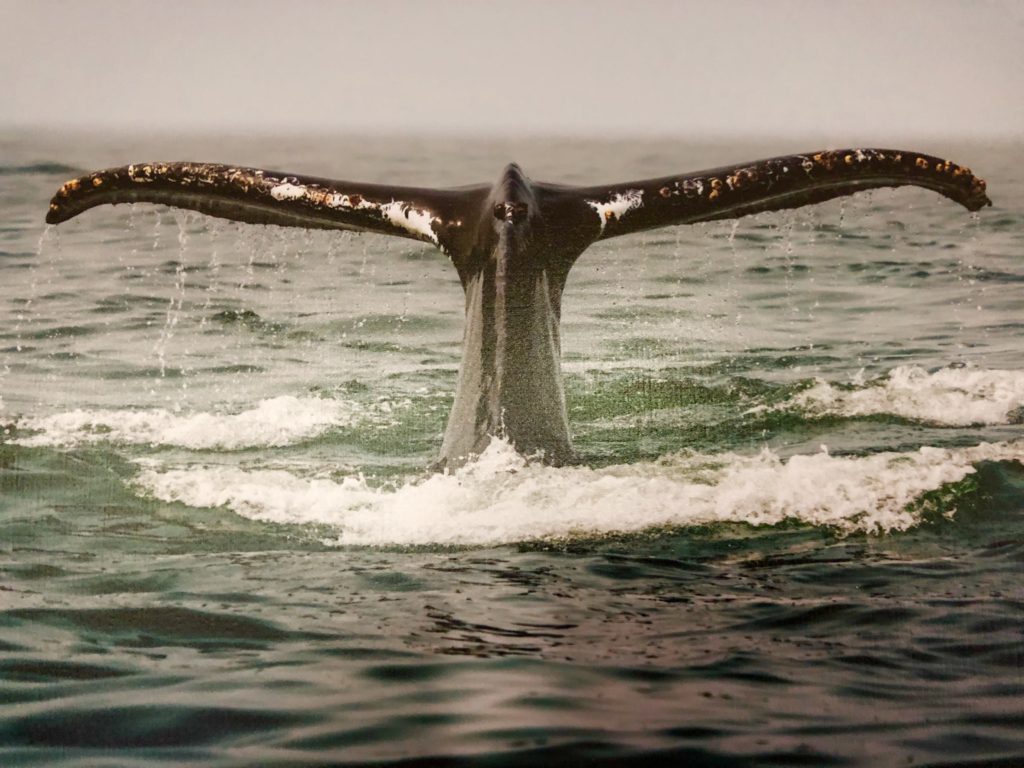
Moss Landing is also one of the best places to spot whales up close! I hope you are able to visit Moss Landing and enjoy its beauty. Thank you for visiting my blog! Wishing you peace, love, happiness, and beautiful vistas.
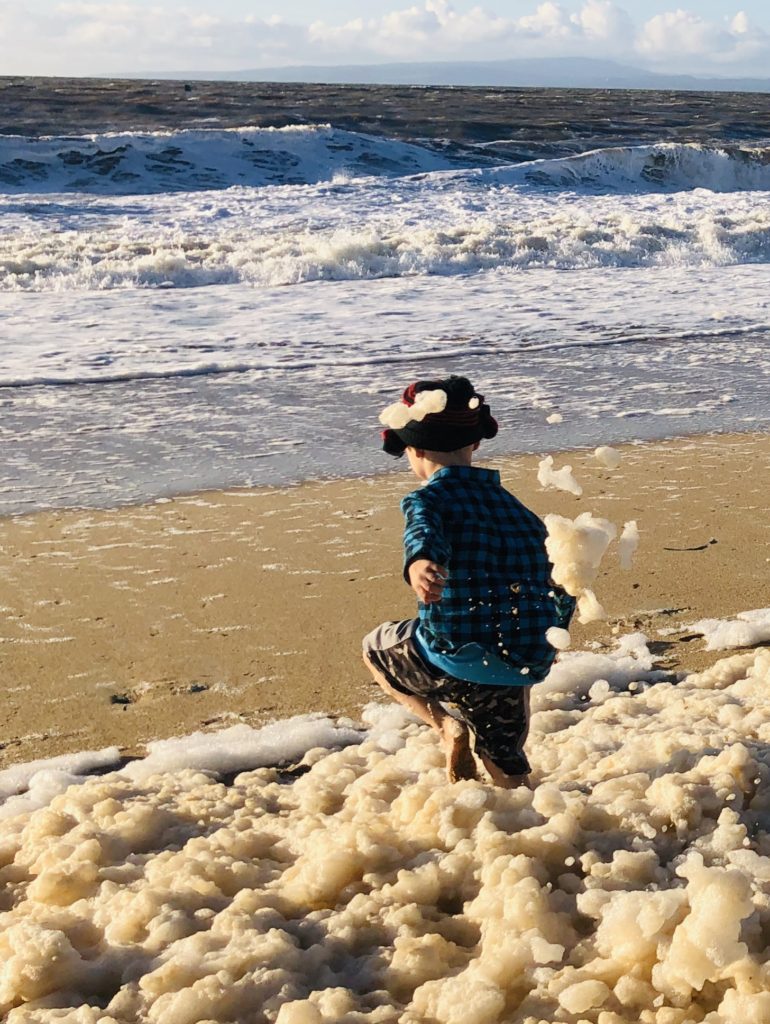
Nothing is more fun than playing in the sea foam when the tide is low. It reminds me of when my Mom used to pour Mr. Bubble in the bathwater and the bubbles got higher and higher in the tub! Good times 🙂